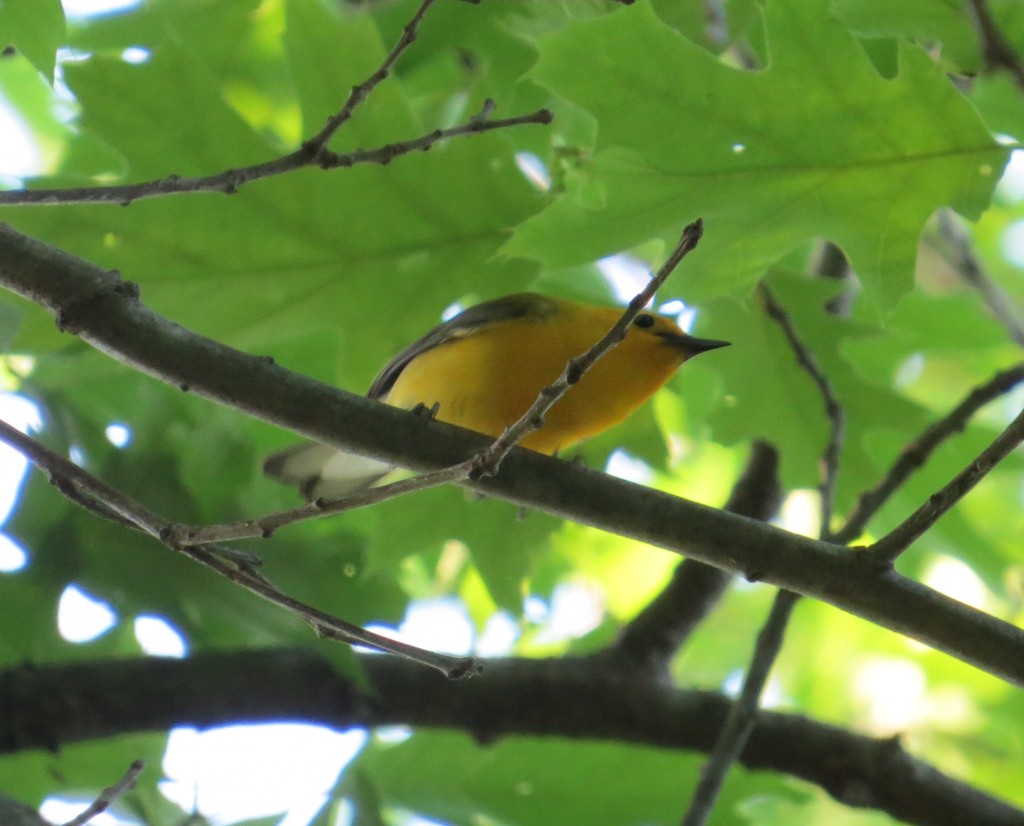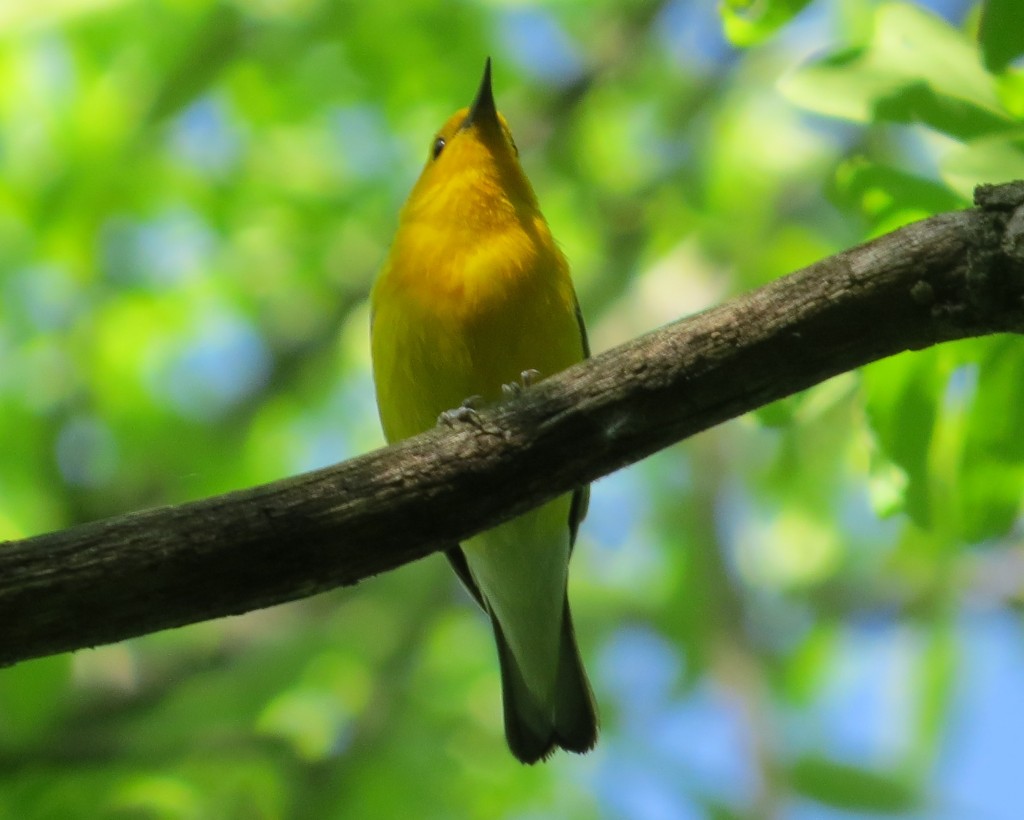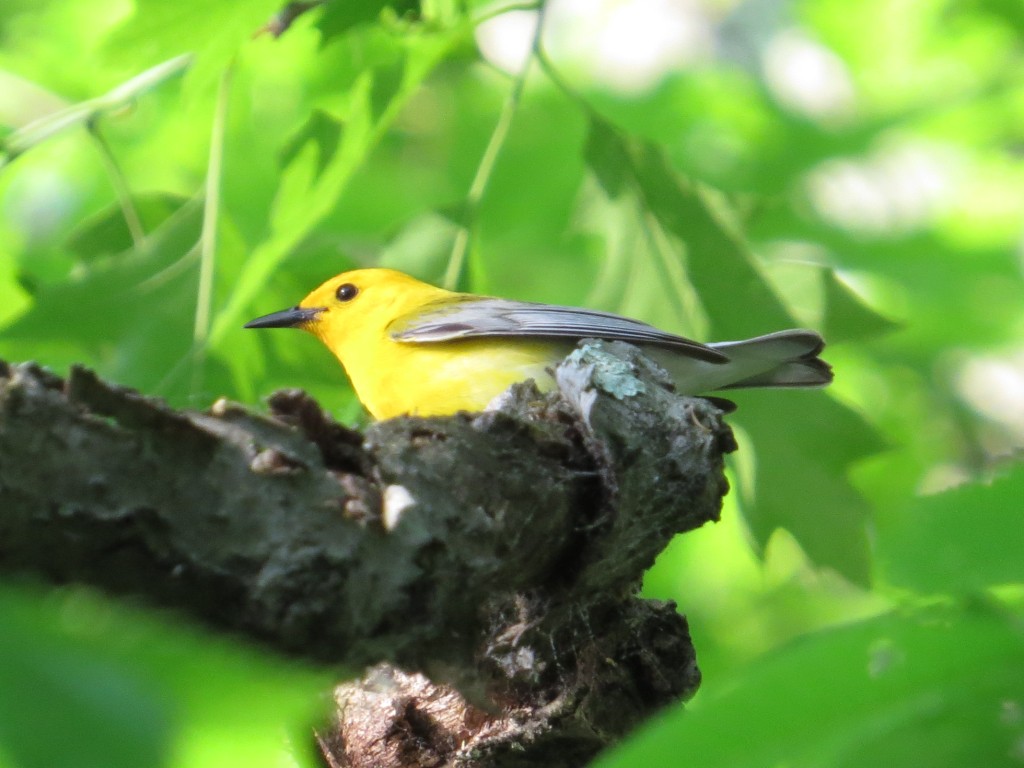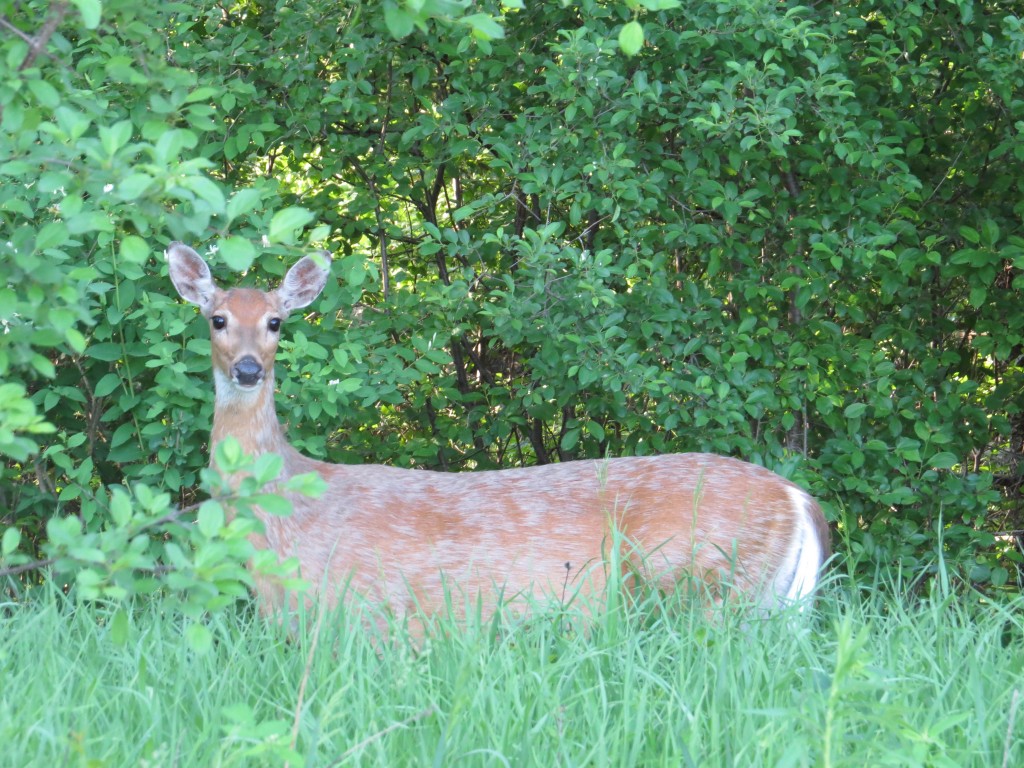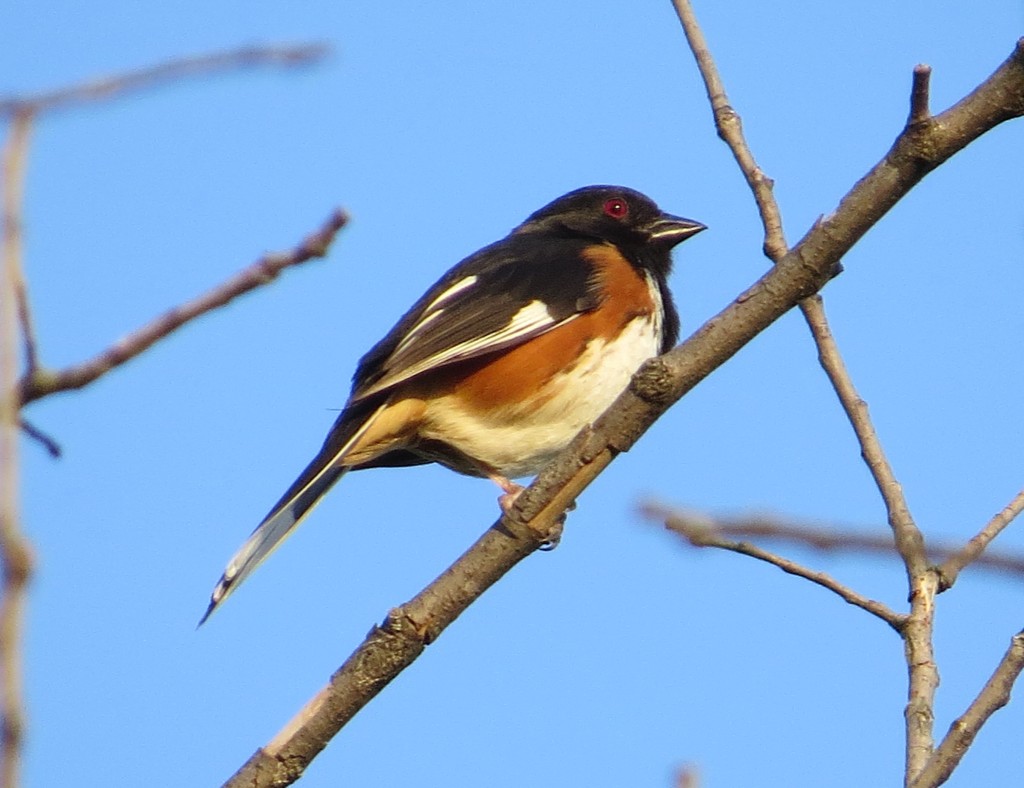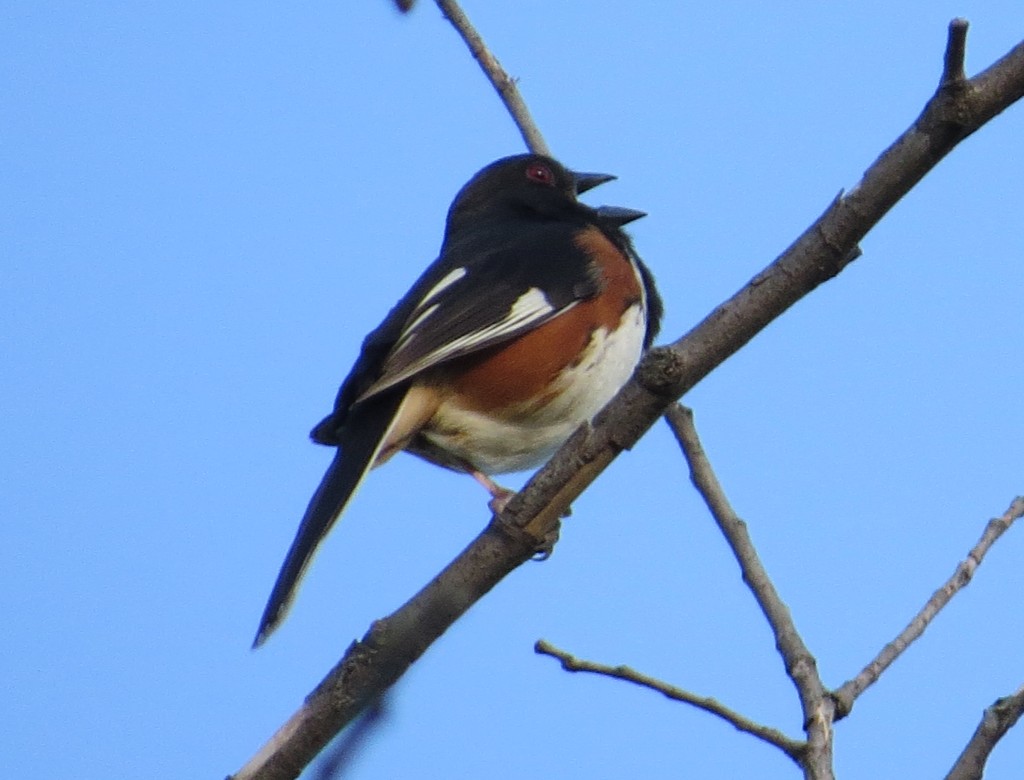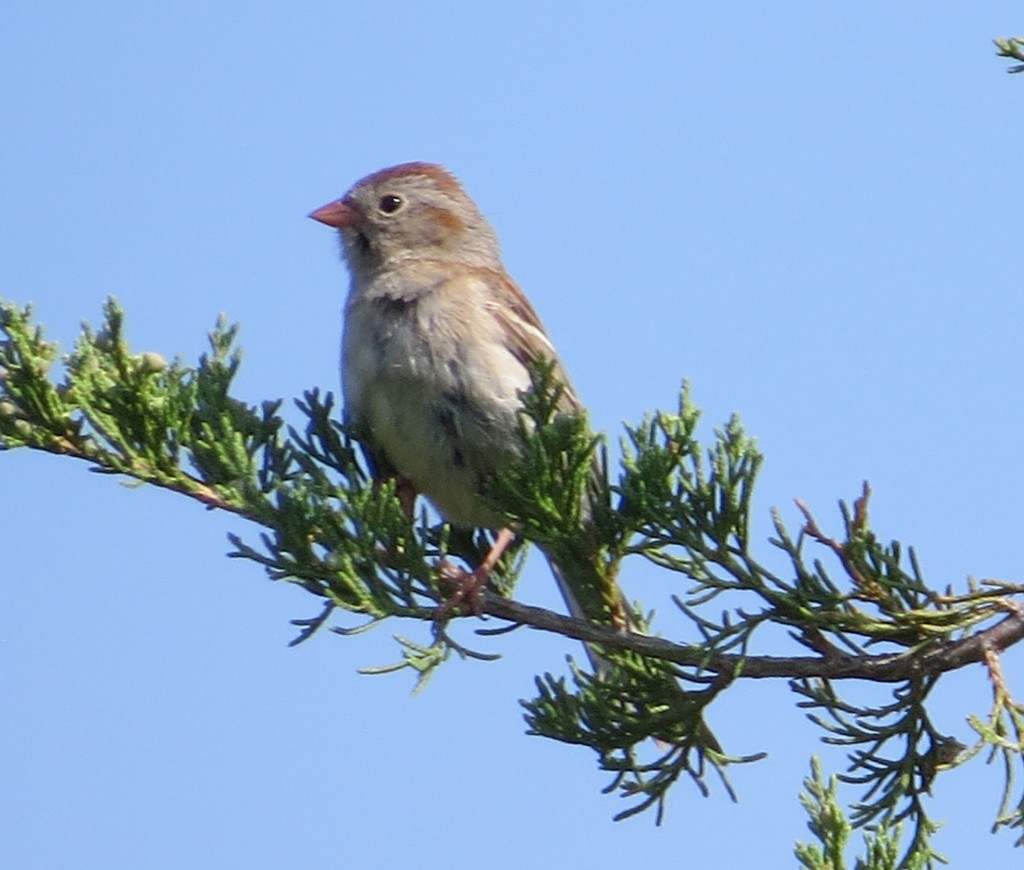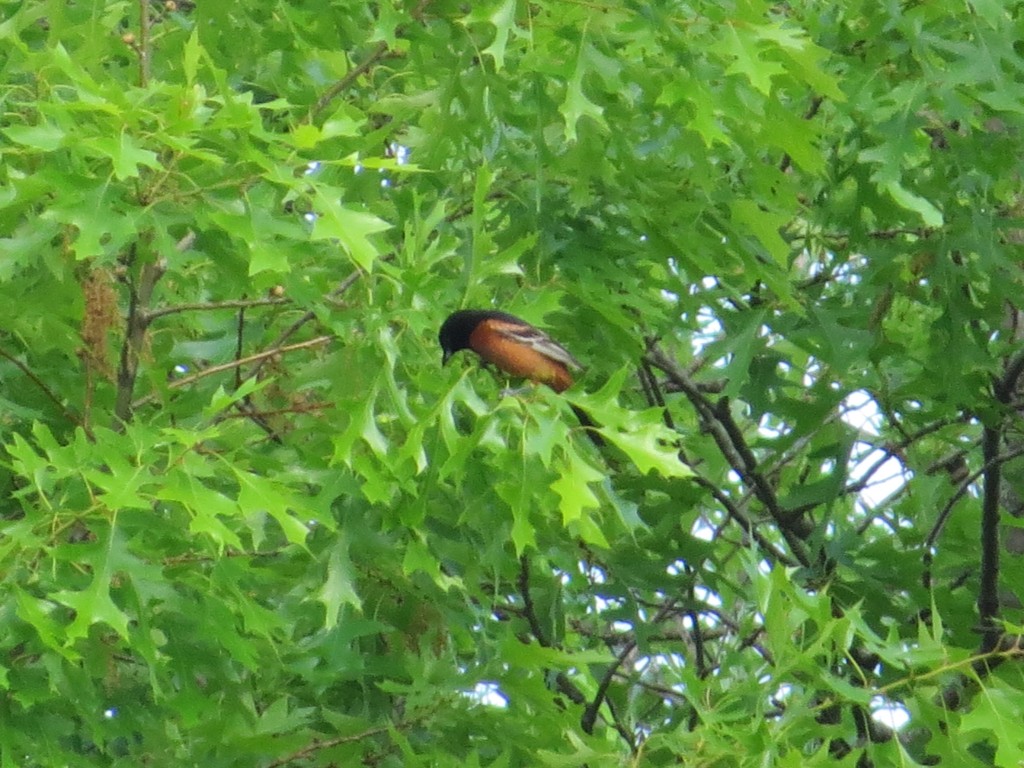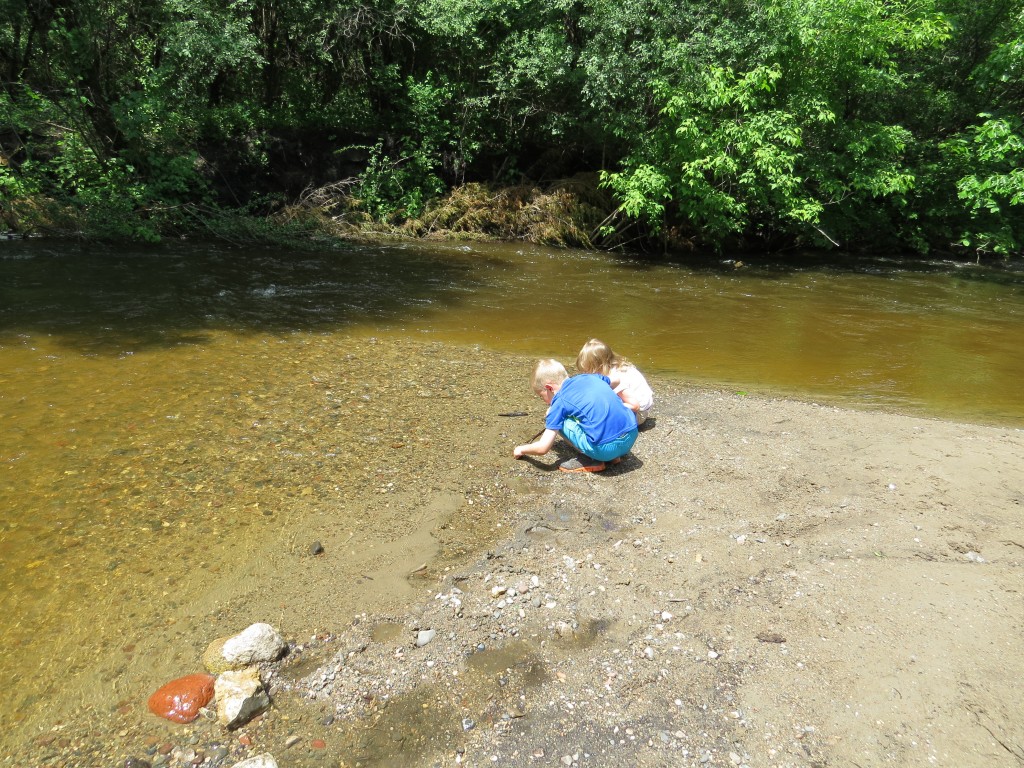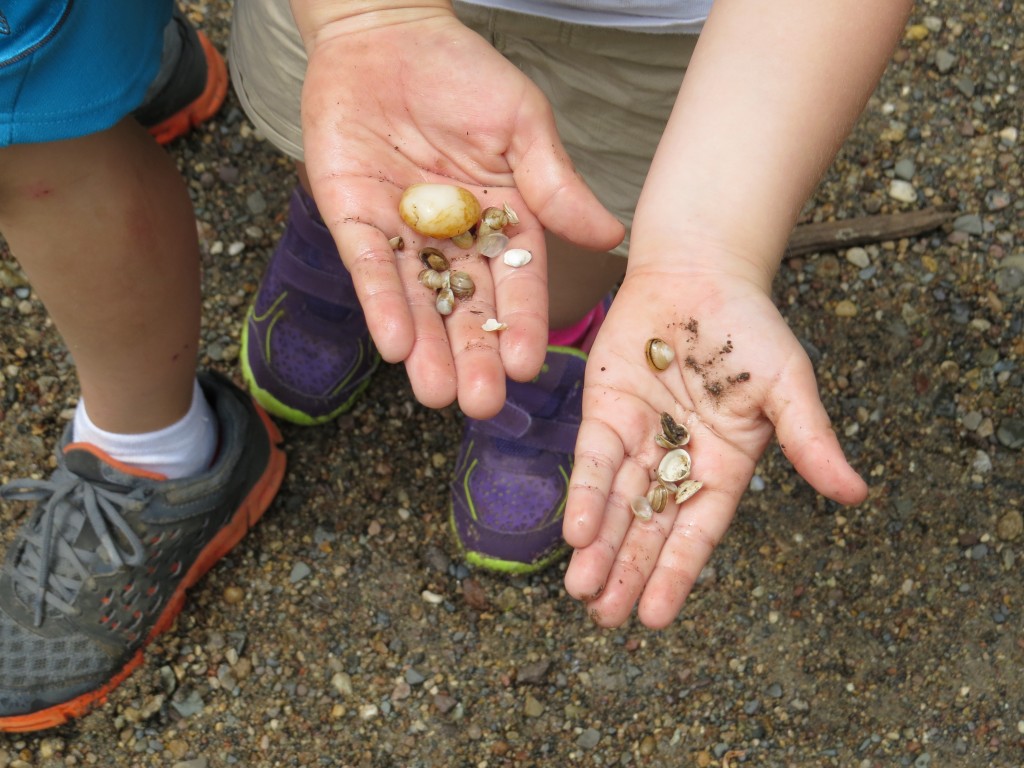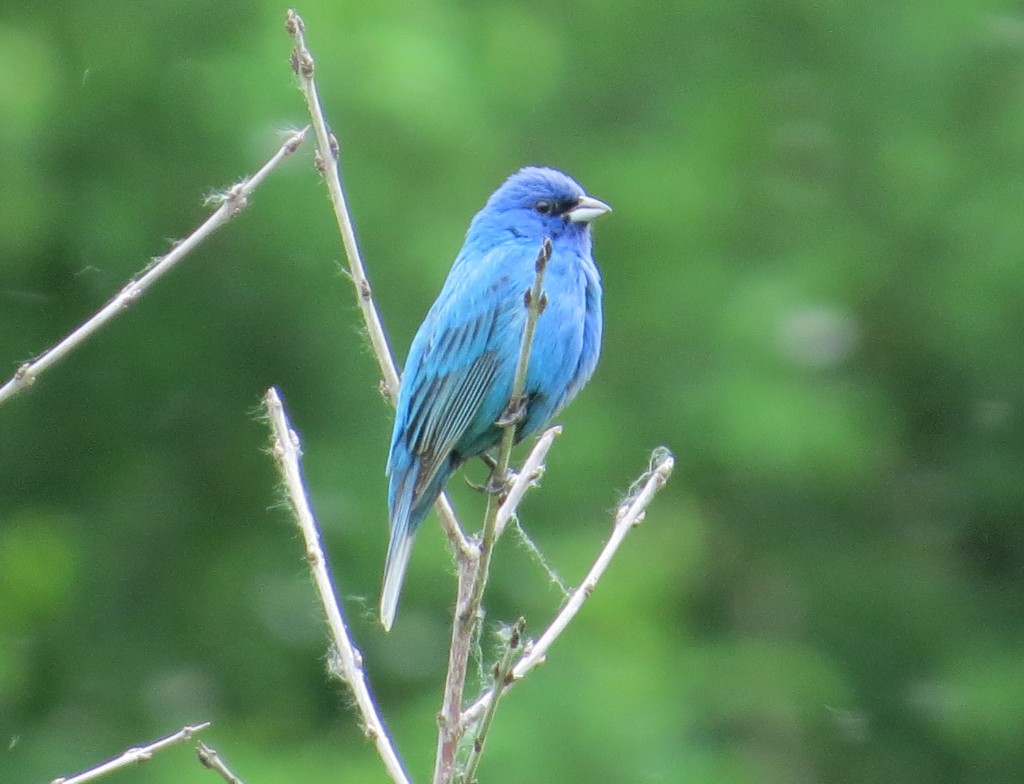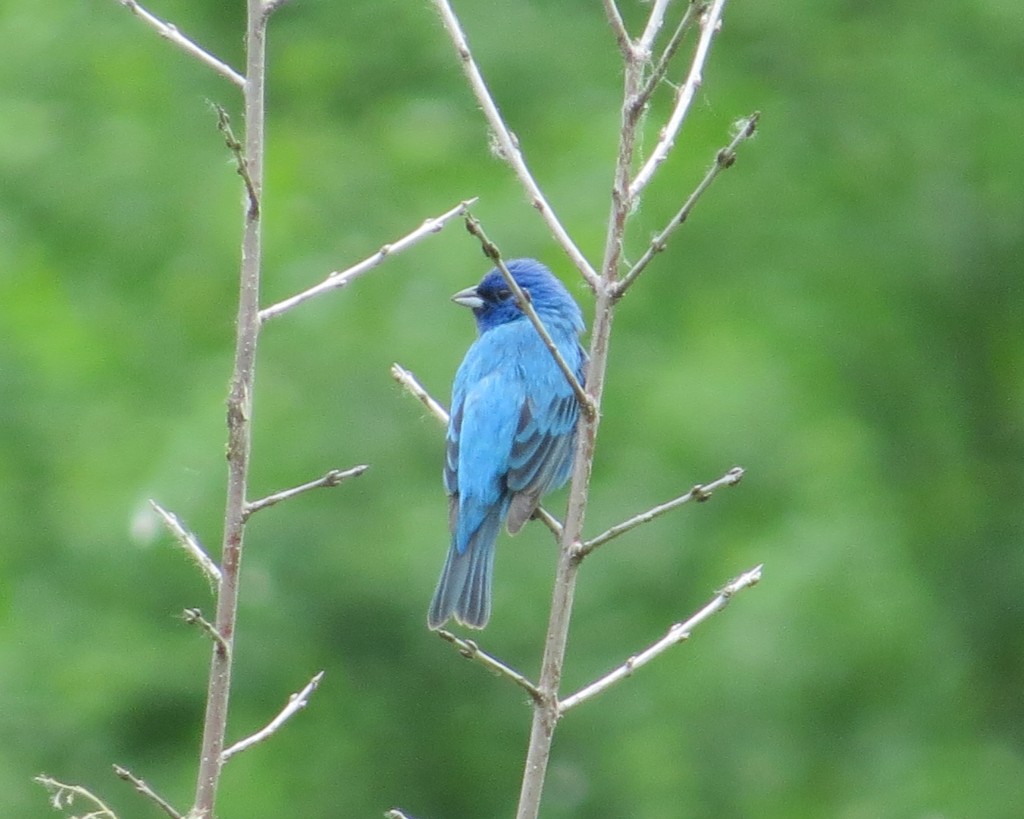The birds have not allowed any dust to collect on this blog. It is, of course, hard to collect dust when the bird clutter is accumulating at an alarming rate. Lest I be featured on some blogger hoarding show, it’s time to start shoveling. This post ties up a lot of loose birding ends. In truth I haven’t been too excited about writing it since it does not coalesce around a single bird or birding locale. Despite that, there are a lot of good nuggets in here–hopefully something for everybody.
Tommy Trip–The Rest of Wisconsin
Let’s get started with wrapping up the Tommy trip. Not making the cut for the Wisconsin posts was the locally common Eastern Towhee. Before this trip, this bird was still very novel to me as I had only ever seen just one male and one female. I got my fill after this trip. This bird, which was a lifer for Tommy, was everywhere.
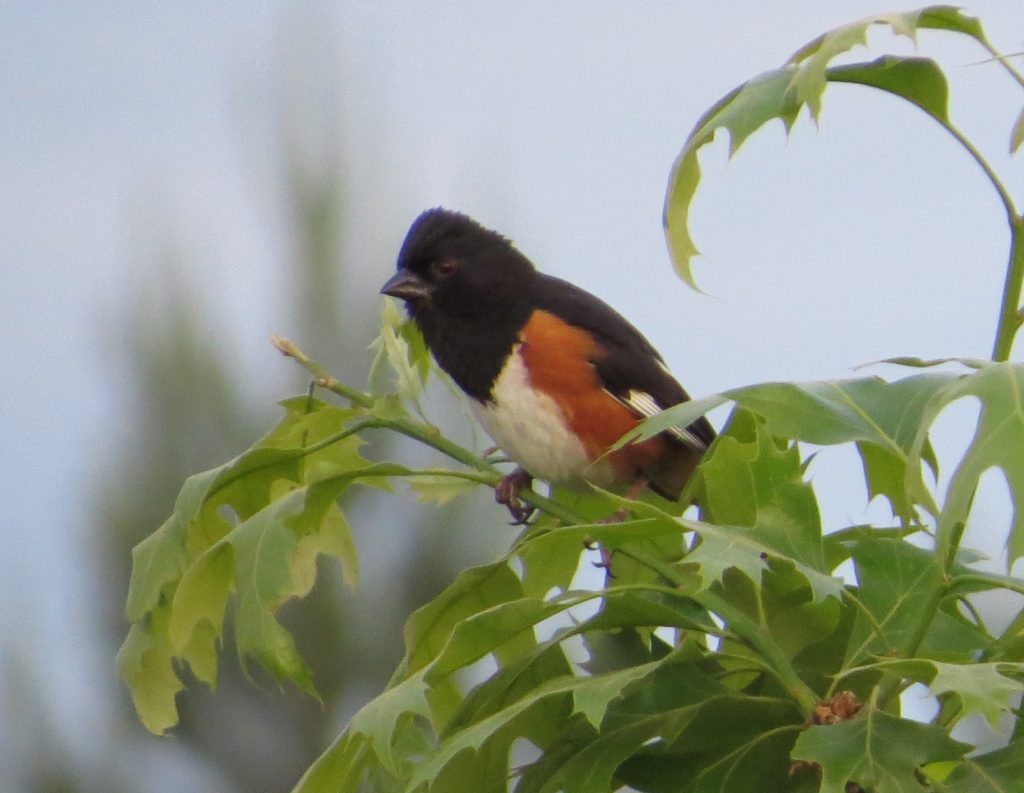
Birders like to say EATOs sound like they are saying “Drink your tea!” when they sing. This has been true in my very limited experience in Minnesota with this bird. But well-traveled birders know that birds in different geographical regions often have different dialects of the same song. I don’t know, maybe it’s just me, but in Wisconsin the Eastern Towhee sounded more like it was singing “Drink your beer!” Given how commonplace this bird was, it explains so much.
Another lifer for Tommy in Wisconsin that was surprisingly hard to track down was the Ruby-throated Hummingbird. Also surprising was that I had never before taken the time to photograph a male of our only, fairly common Hummingbird species. Luckily they had a feeder at Necedah National Wildlife Refuge with one lonely male showing up, allowing Tommy and me to rectify our respective deficits.
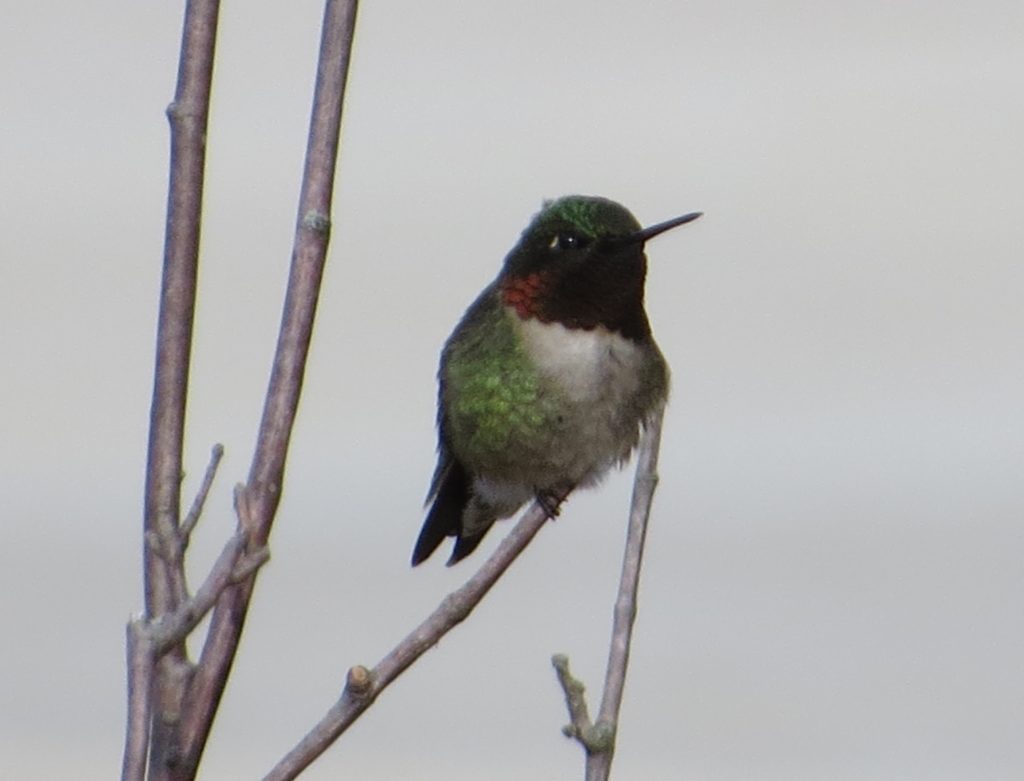
Another great find near the Visitors Center was a lifer Yellow-billed Cuckoo for Evan and me. Tommy found the bird for us which started as a heard-only bird and then eventually give us a quick fly-over sighting. It left me wanting more. Tommy always likes to “give back” something when he comes up birding. Last winter it was the Black-backed Woodpecker near my parents’ house that I had been wanting to see; this year it was the Cuckoo. So, thanks for the cool birds, Tommy!
Tommy Trip–Night Birding in the Minnesota River Valley
One night during Tommy’s stay, he and I ventured down to the Minnesota River Valley just east of Granite Falls for some night birding. Birding at night is always safer and more fun in good numbers, so we joined forces with Steve Gardner and Garrett Wee. Our prime target for the night was the Eastern Whip-poor-will. Tommy needed the lifer, and I was hoping to finally photograph one. Chippewa County Road 40 is probably the best place in the state to reliably find this bird. Despite Garrett already being down there before we arrived and having heard a half dozen of the Whips, the woods was completely silent when Steve, Tommy, and I got there. We birded on anyway and soon understood why the Whips weren’t whipping it good–a pair of Barred Owls vocalized right near us. We got amazing flashlight views as one soared just over our heads. It was eerie and awesome.
Eventually the Barred Owls disappeared, and the Whips began to sing their unending songs as they are so well known for. We never could get a visual unfortunately, but at least Tommy got to tally the bird for his life list. I also got to tally a new bird for my Minnesota list: a calling Yellow-billed Cuckoo in the dark! Even though Tommy had it directly above his head at one point, we never were able to get the flashlight on it. So the bird went from being a lifer to a state bird in a matter of two days but still left me unsatisfied.
Tommy Trip–Keeping it Local
For Tommy’s last full day of birding we decided to bird close to home even though two Minnesota Megas showed up that very day, a Baird’s Sparrow and a Calliope Hummingbird. A chase would have been fun but exhausting given all our recent travels. We started at Prairie Woods Environmental Learning Center. I had never really explored this place before, so it was fun to give it some serious attention. One of our highlights was yet another Scarlet Tanager. This one behaved like a proper Scarlet, hanging out exclusively in the canopy.
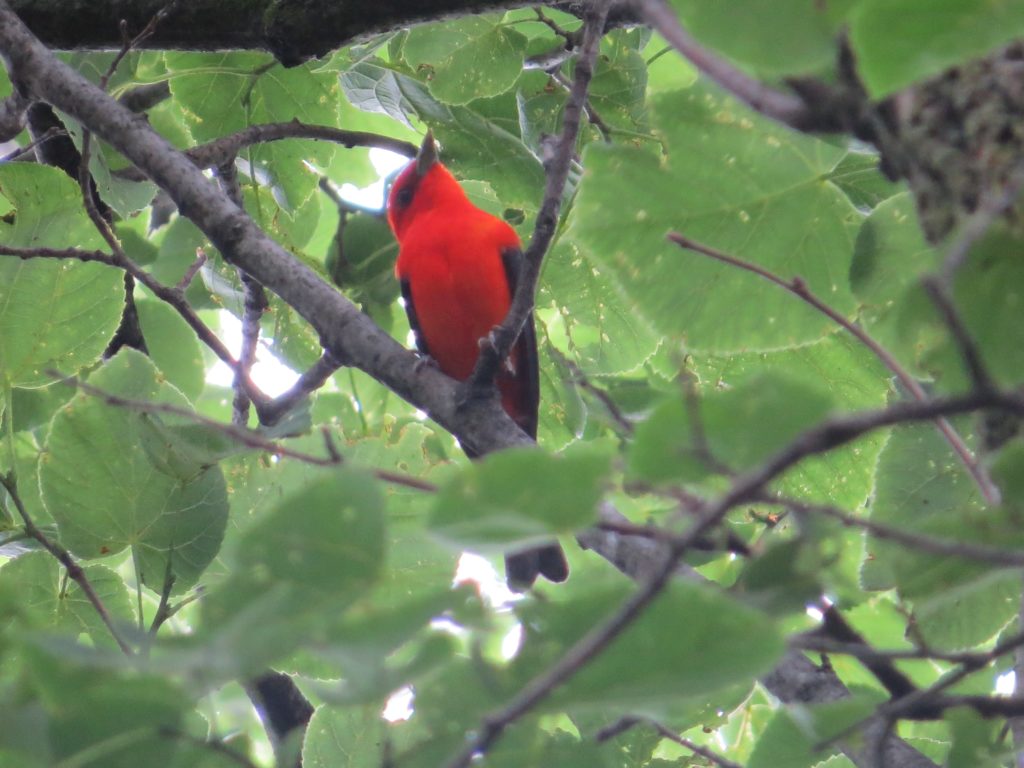 The other highlight was when Tommy picked out the sound of a calling Yellow-billed Cuckoo, a county bird for me! Once again, Tommy gives back! So in three successive days, this bird went from life bird to state bird to county bird. But it still was a no show. Someday.
The other highlight was when Tommy picked out the sound of a calling Yellow-billed Cuckoo, a county bird for me! Once again, Tommy gives back! So in three successive days, this bird went from life bird to state bird to county bird. But it still was a no show. Someday.
One of our other stops of the day was Sibley State Park. Despite this gem being so close to me, I haven’t given much time to explore it which is something I really need to resolve. Tommy and I gave it a good effort that day, though. It was fun to look at some common-place birds through Tommy’s fresh perspective. We took time to enjoy Ovenbirds, Field Sparrows, and Swamp Sparrows.
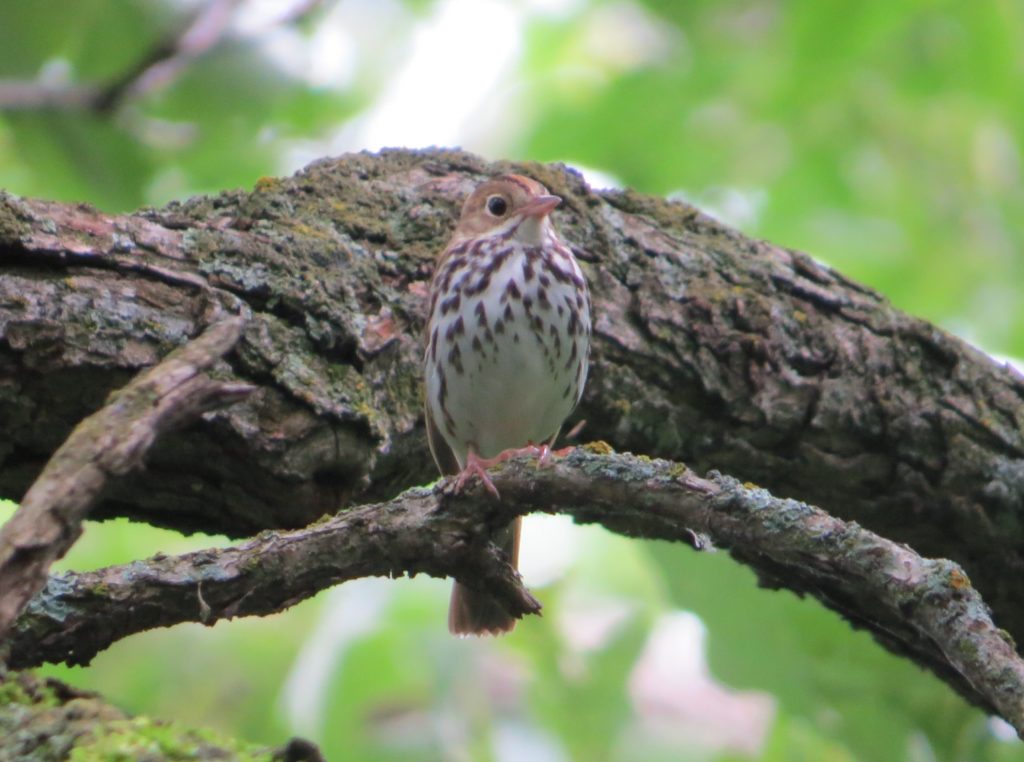
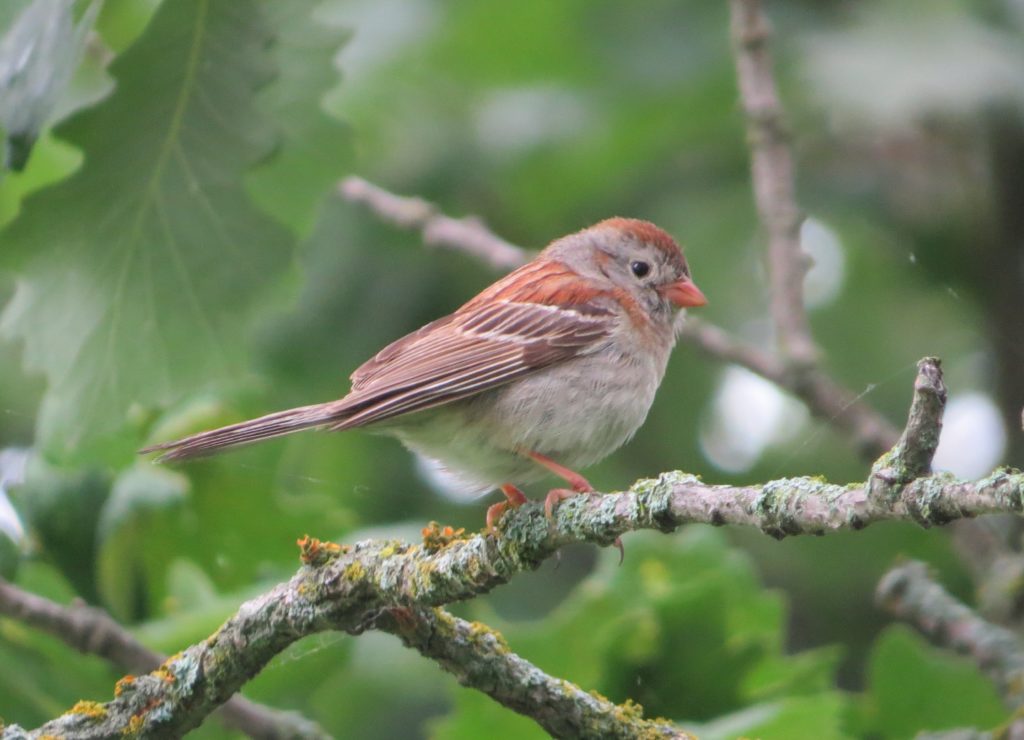
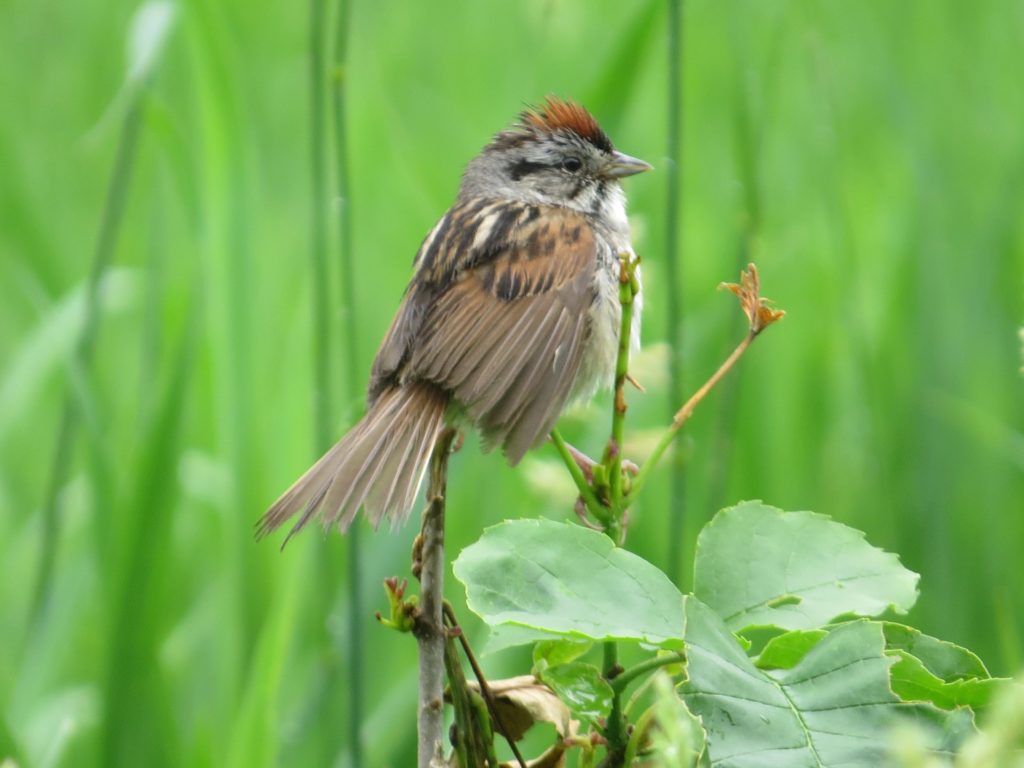
We also had a couple of good finds in the more uncommon species, like three additional Scarlet Tanagers…
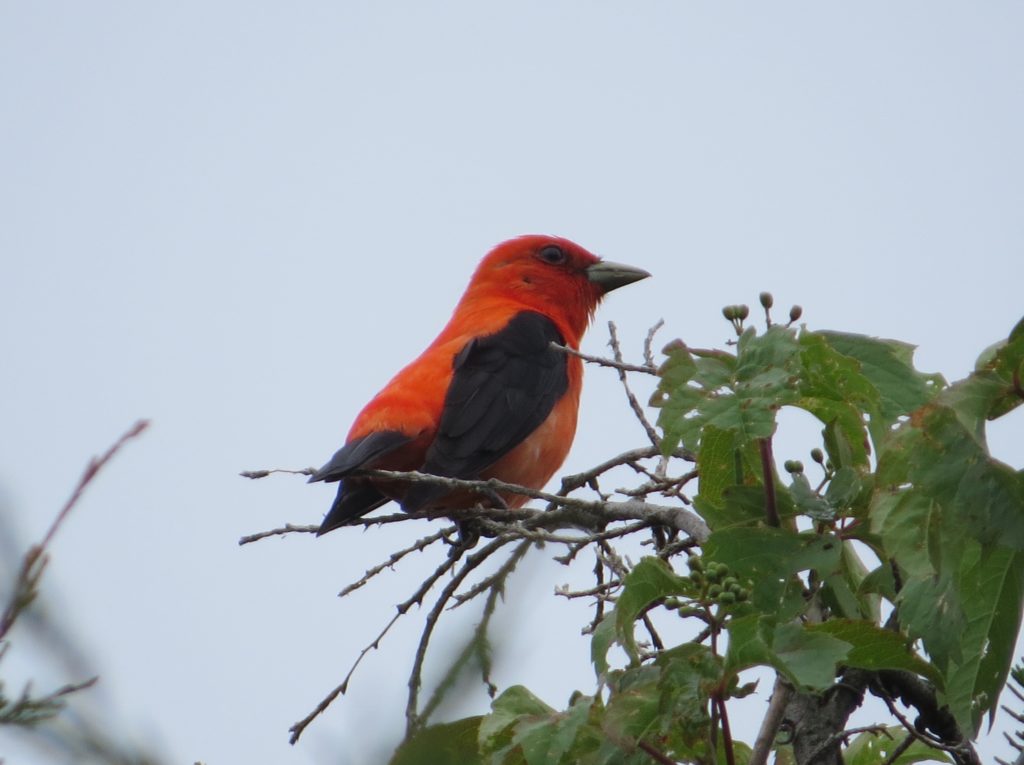 …and two Blue-winged Warblers, a very good bird for central Minnesota.
…and two Blue-winged Warblers, a very good bird for central Minnesota.
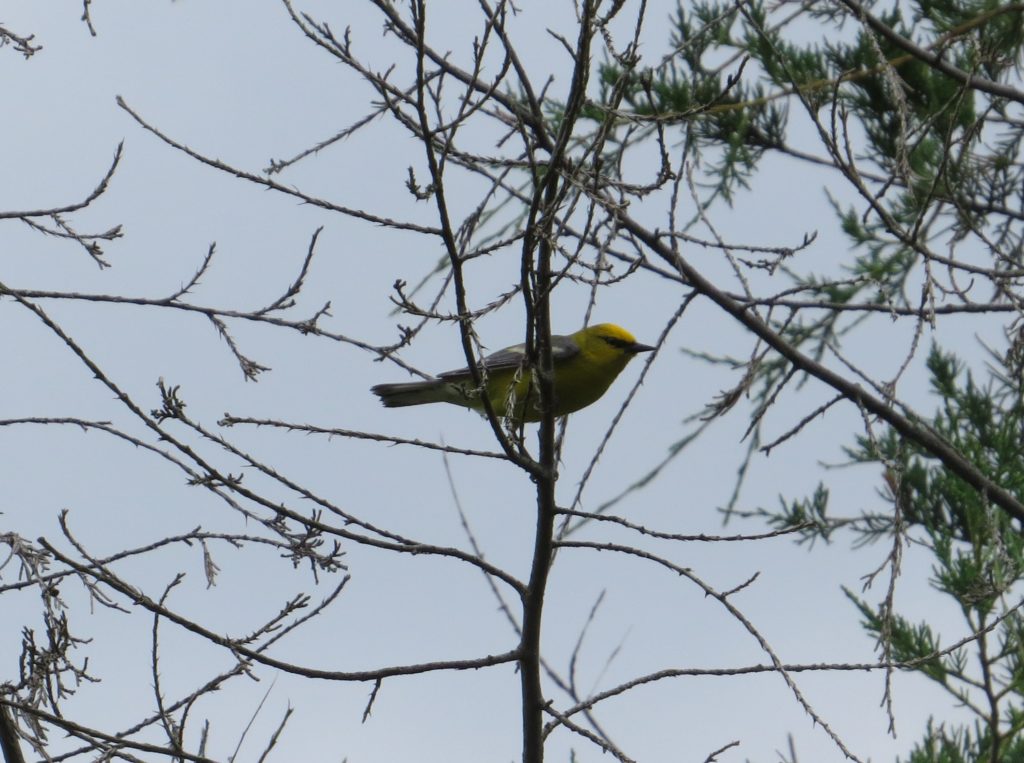
Birding After Tommy
After Tommy went home with a hefty bag of 26 lifers and a plethora of good bird sightings, I have continued to poke around close to home. The Dickcissels have invaded the state in good numbers this year. In fact, I even added one to my yard list.
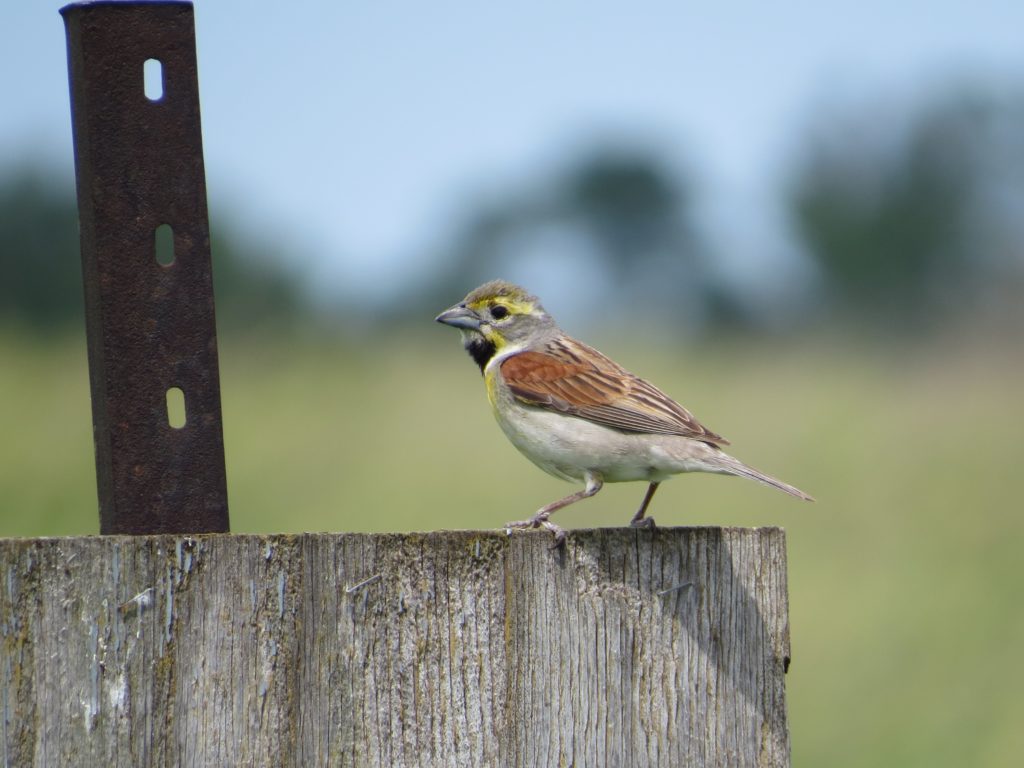 Another fun find I had one evening when I went out to a local wildlife management area was a completely unexpected county Least Bittern. Though I had a killer look at one flying toward me, I wasn’t able to get any photos but did record two Least Bitterns giving their “chuckling” call. You may have to turn up the volume.
Another fun find I had one evening when I went out to a local wildlife management area was a completely unexpected county Least Bittern. Though I had a killer look at one flying toward me, I wasn’t able to get any photos but did record two Least Bitterns giving their “chuckling” call. You may have to turn up the volume.
Birders can never turn off the birding. Even when I accompanied Evan to a Cub Scout camping weekend, I had a couple of fun finds. Highlights included yet another Scarlet Tanager and this Pine Warbler.
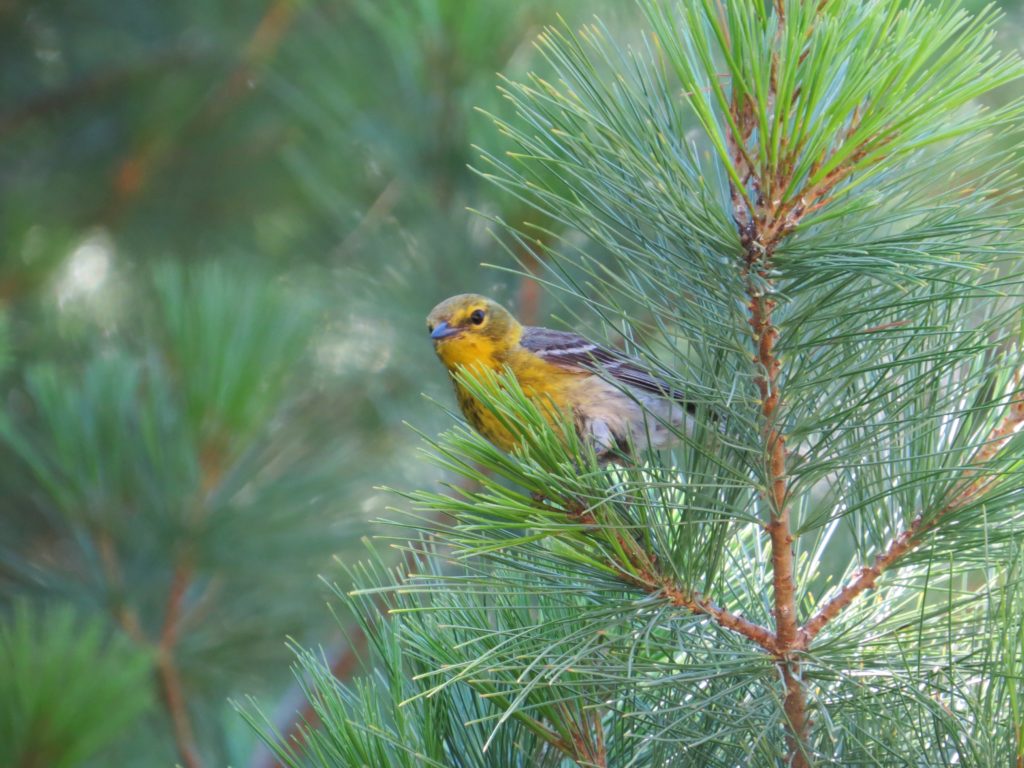
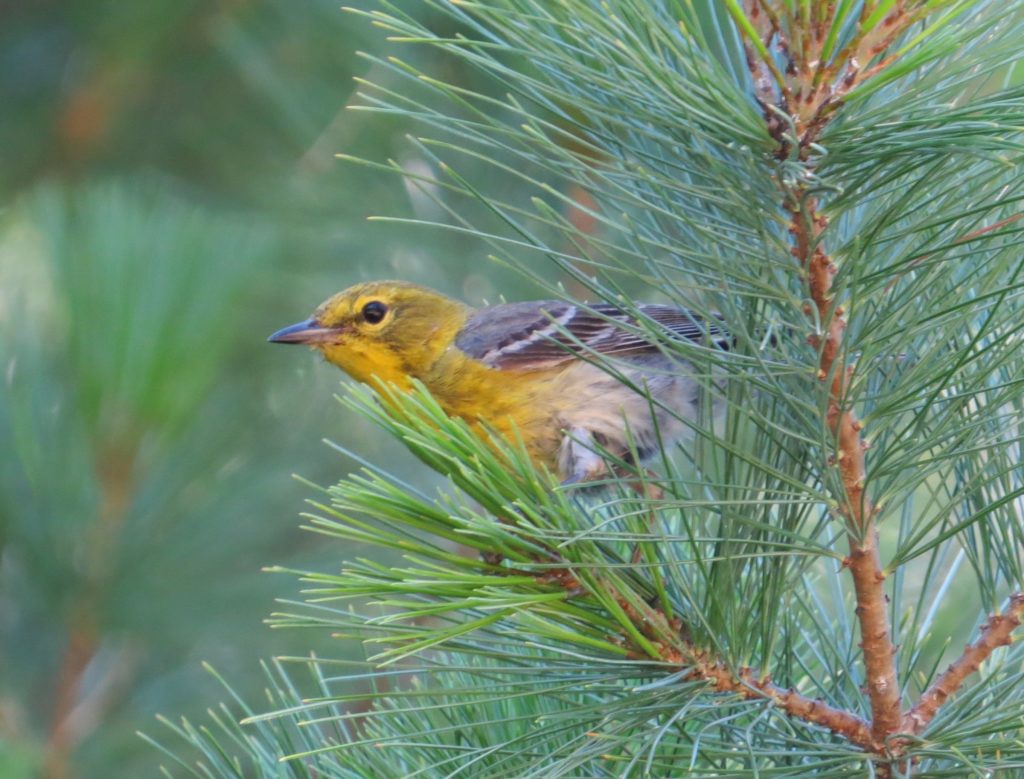
While the Pine Warbler was a good find this far south, I found something even better at Scout camp, probably my best sighting yet…
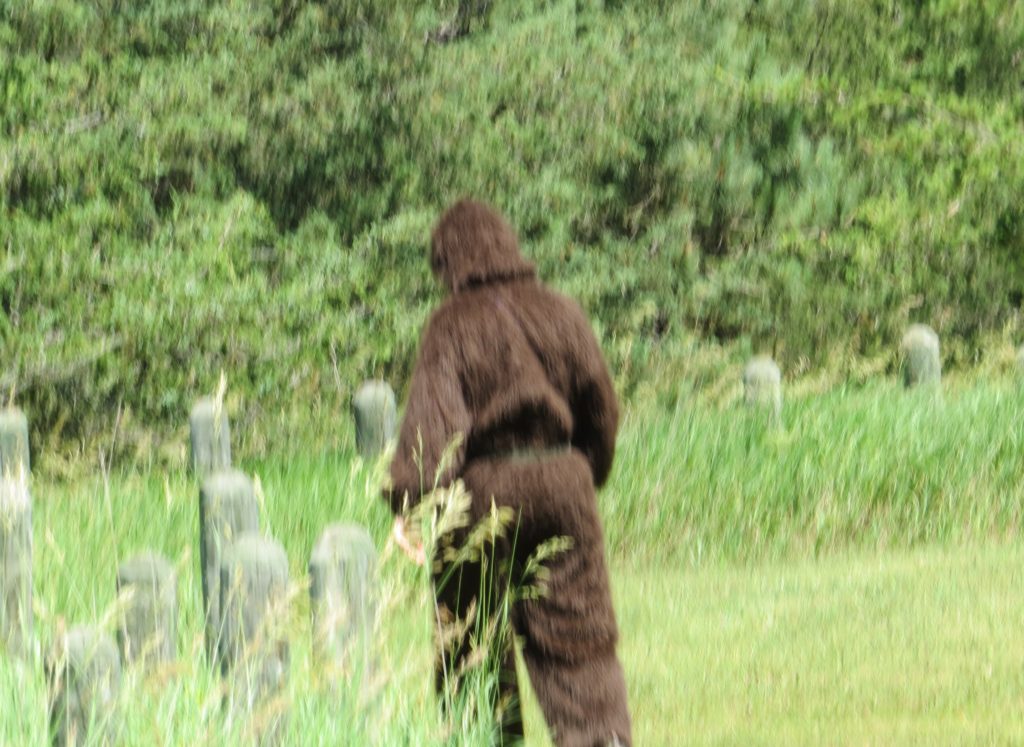
There are two more fun posts coming out soon–a chase to see a rare bird and an exciting Woodpecker encounter while visiting family in northern Minnesota over the 4th.

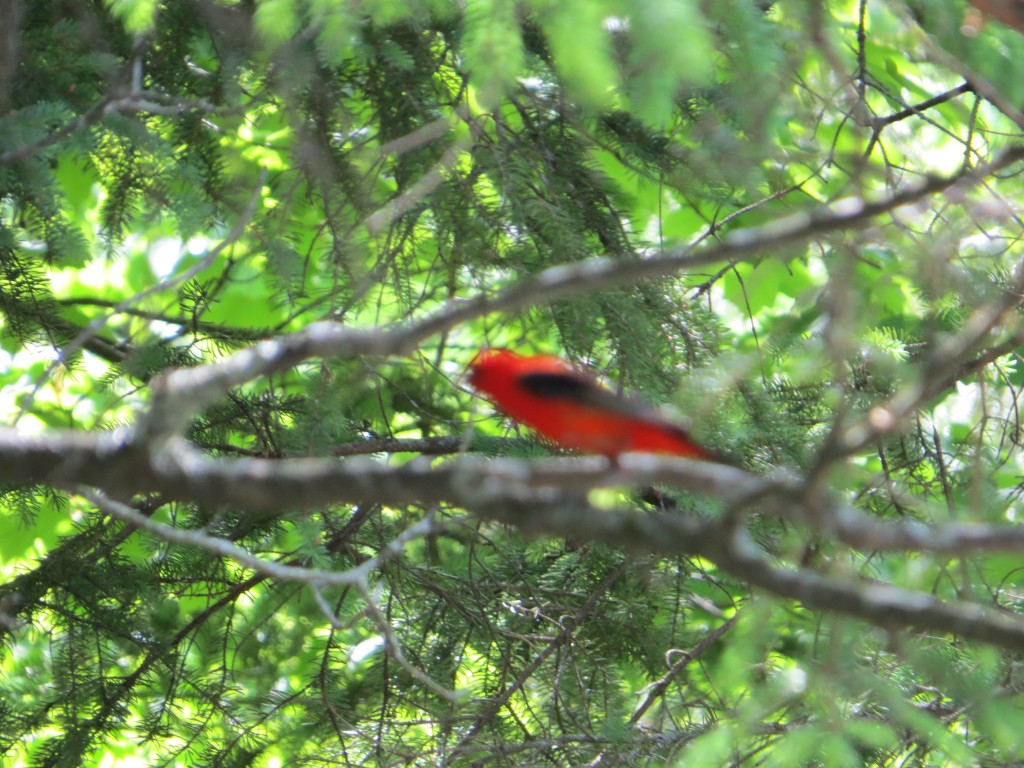
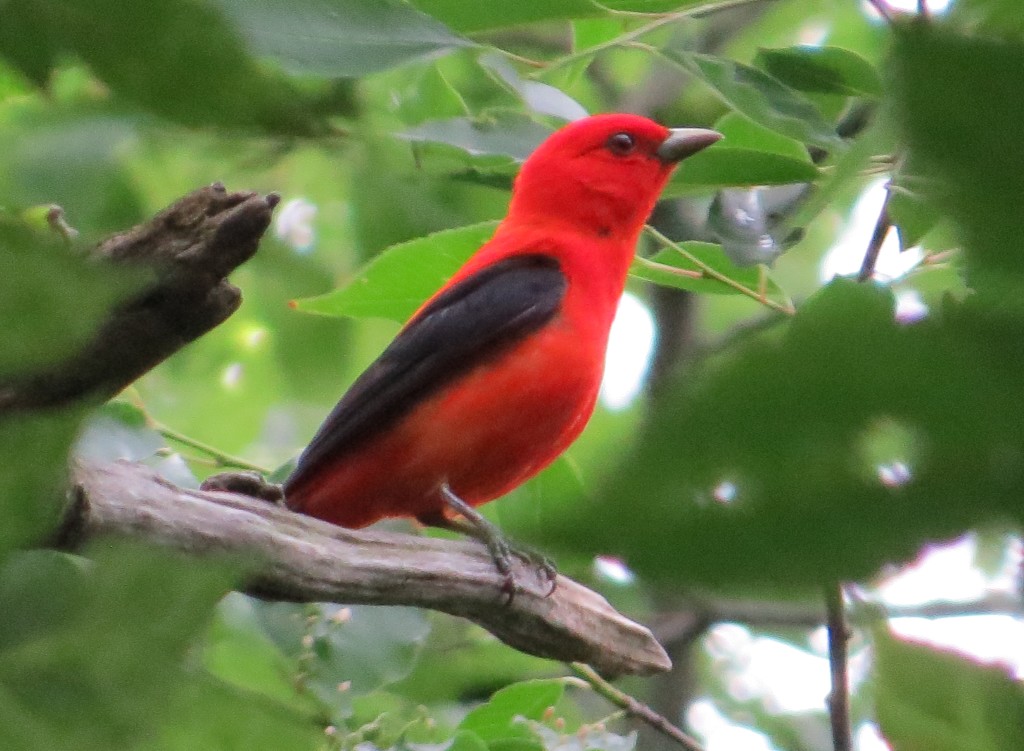 What a splashy bird for Tommy’s 500th! I wish I could say the same for {spoiler alert} my 400th. More on that later. And this photo felt good after the flop at Mille Lacs. We also got to see a female Scarlet Tanager with this male.
What a splashy bird for Tommy’s 500th! I wish I could say the same for {spoiler alert} my 400th. More on that later. And this photo felt good after the flop at Mille Lacs. We also got to see a female Scarlet Tanager with this male.
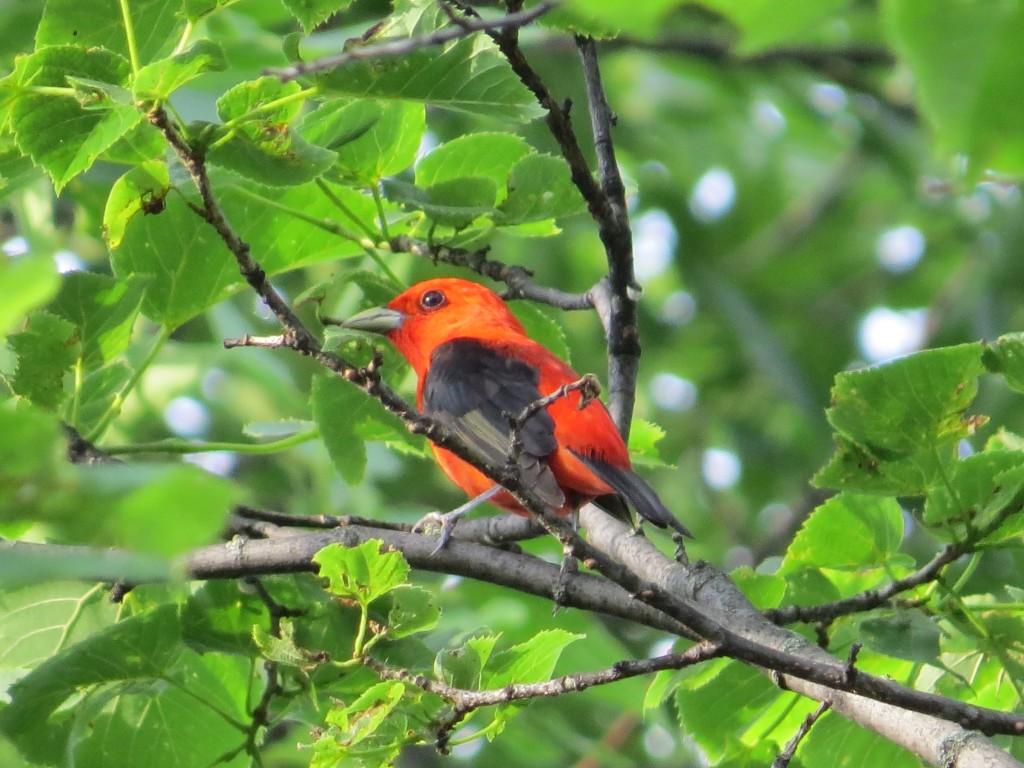
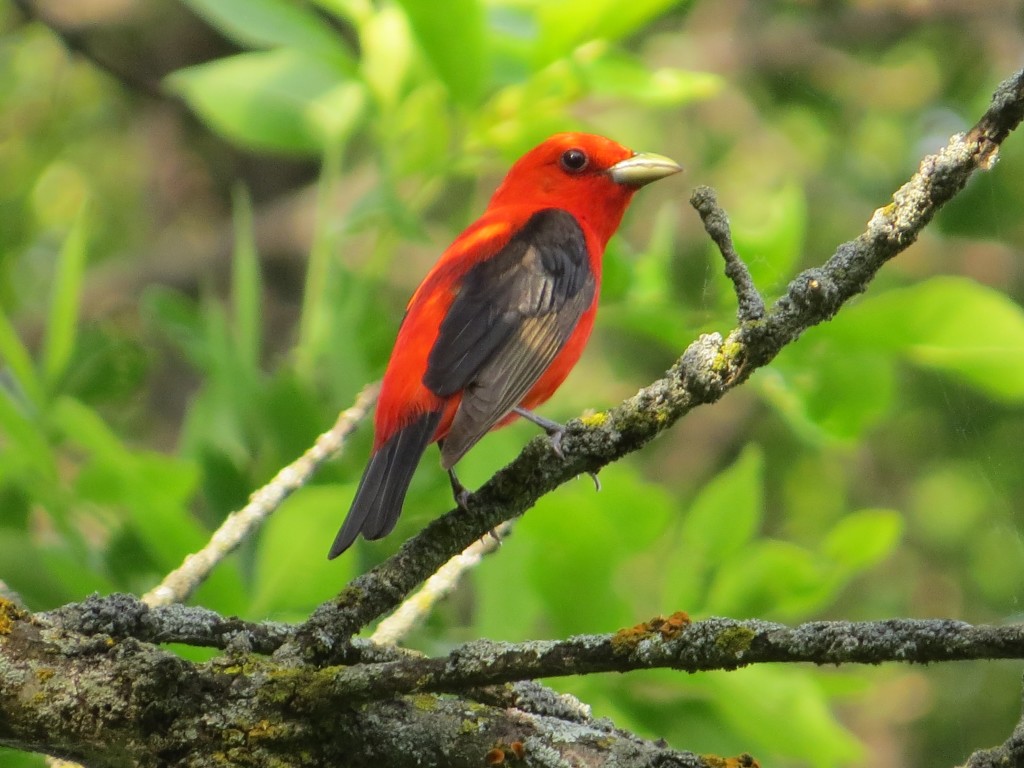 Nothing beats a home remedy. I think my Scarlet fever is finally cured.
Nothing beats a home remedy. I think my Scarlet fever is finally cured.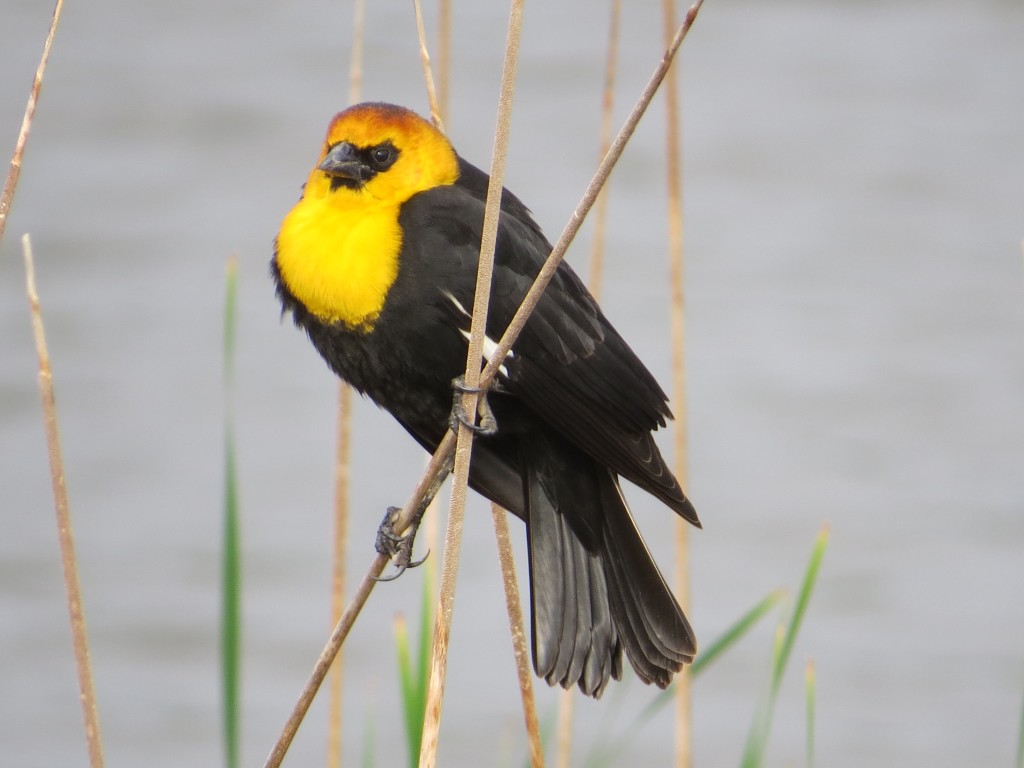
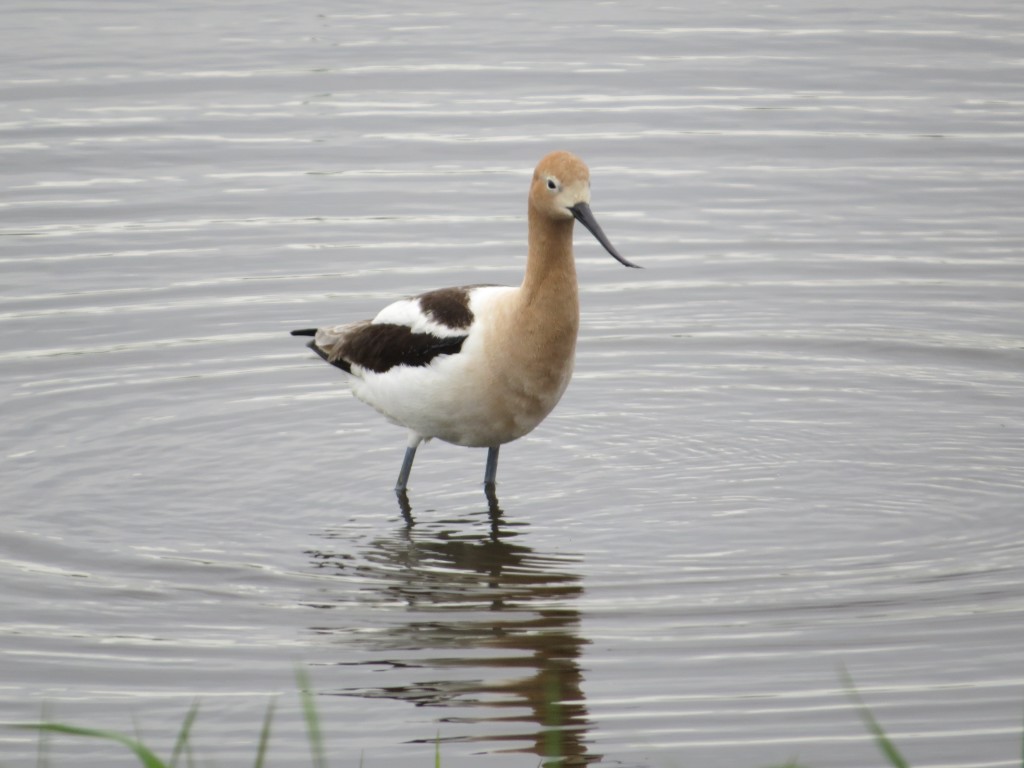
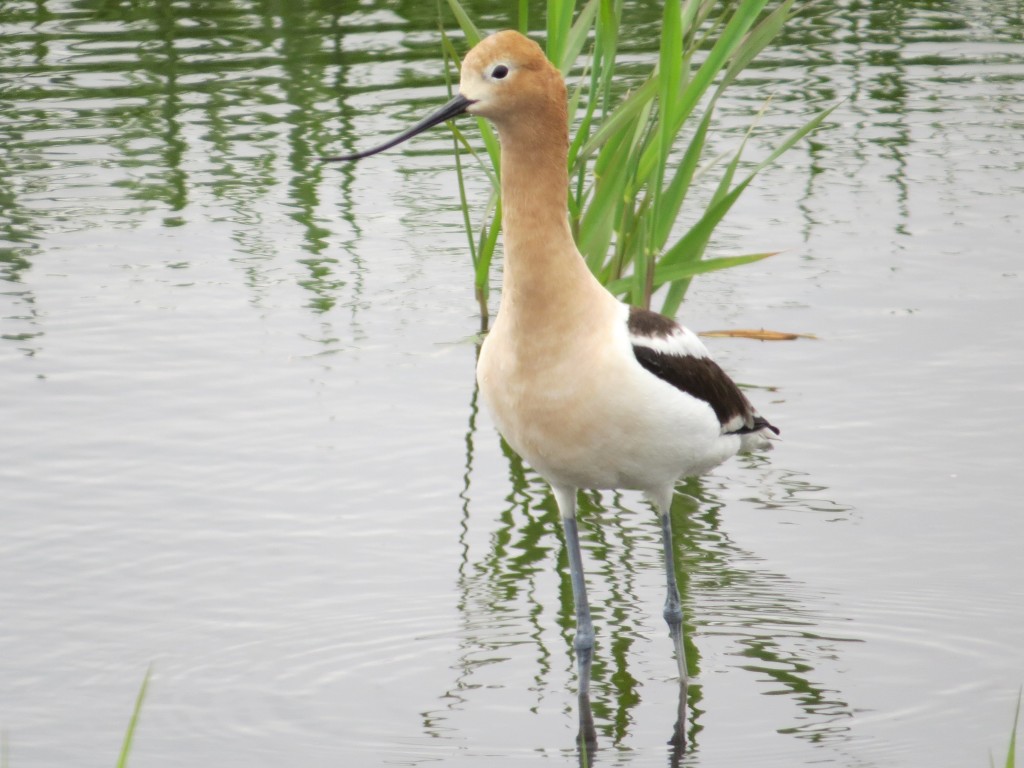 I was hoping for lifer Short-billed Dowitchers, but an Avocet is a nice consolation. Evan and I enjoyed watching this bird for 15 minutes while it chowed down.
I was hoping for lifer Short-billed Dowitchers, but an Avocet is a nice consolation. Evan and I enjoyed watching this bird for 15 minutes while it chowed down.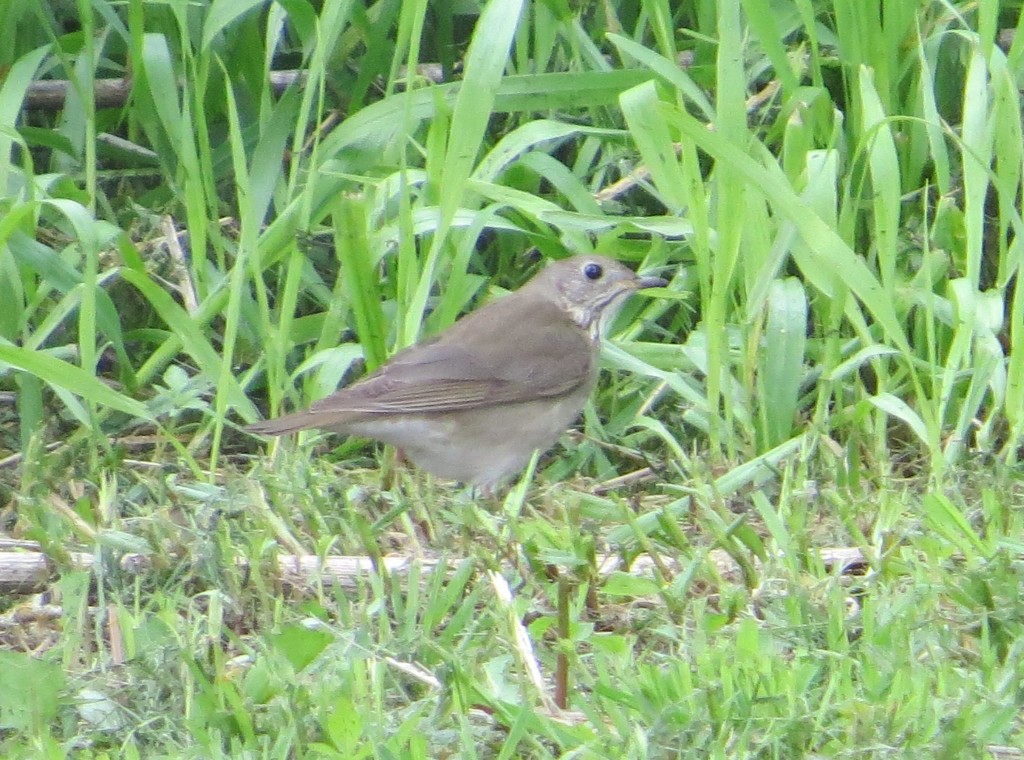 My addition of Gray-cheeked Thrush to my life list has always been tainted with doubt–mostly because I never obtained a photo to back up my sighting. While the kids admired the local Chickens and while I was Thrush sorting, I was still keeping an eye out for the main thing. It was proving harder than I thought, especially since other birders saw it just a minute before I arrived. Finally I spotted the tie-died wonder, a first year male. It wasn’t the coveted bright red adult male, but a cool lifer nonetheless. My camera had difficulty focusing on its mottled plumage.
My addition of Gray-cheeked Thrush to my life list has always been tainted with doubt–mostly because I never obtained a photo to back up my sighting. While the kids admired the local Chickens and while I was Thrush sorting, I was still keeping an eye out for the main thing. It was proving harder than I thought, especially since other birders saw it just a minute before I arrived. Finally I spotted the tie-died wonder, a first year male. It wasn’t the coveted bright red adult male, but a cool lifer nonetheless. My camera had difficulty focusing on its mottled plumage.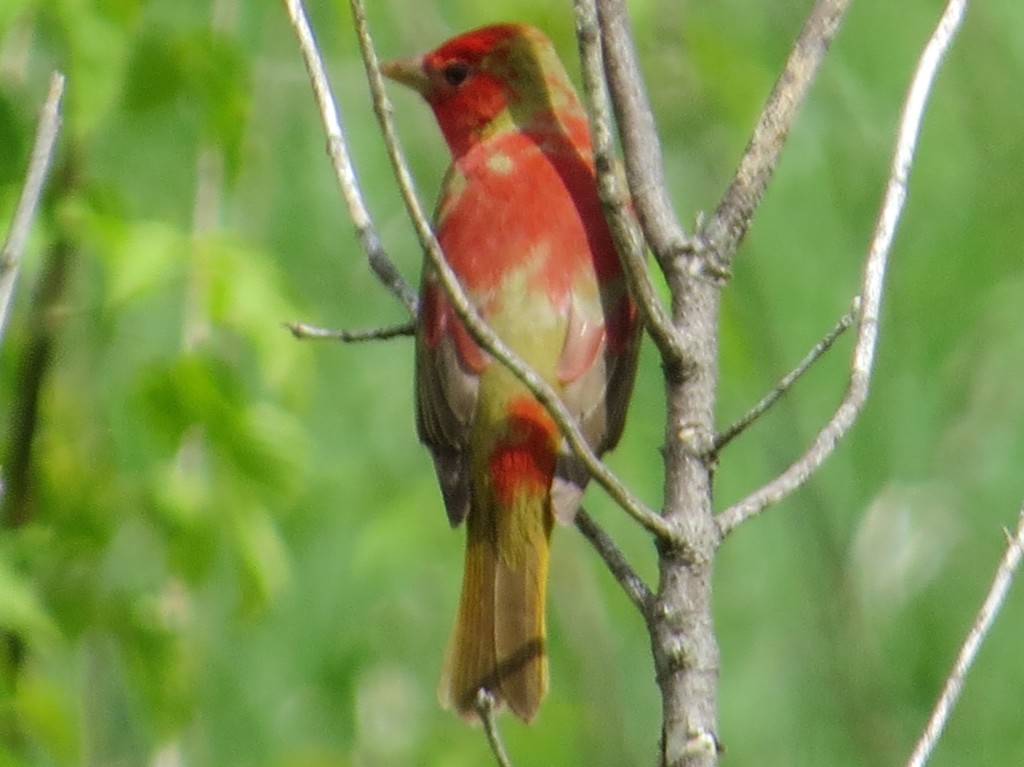
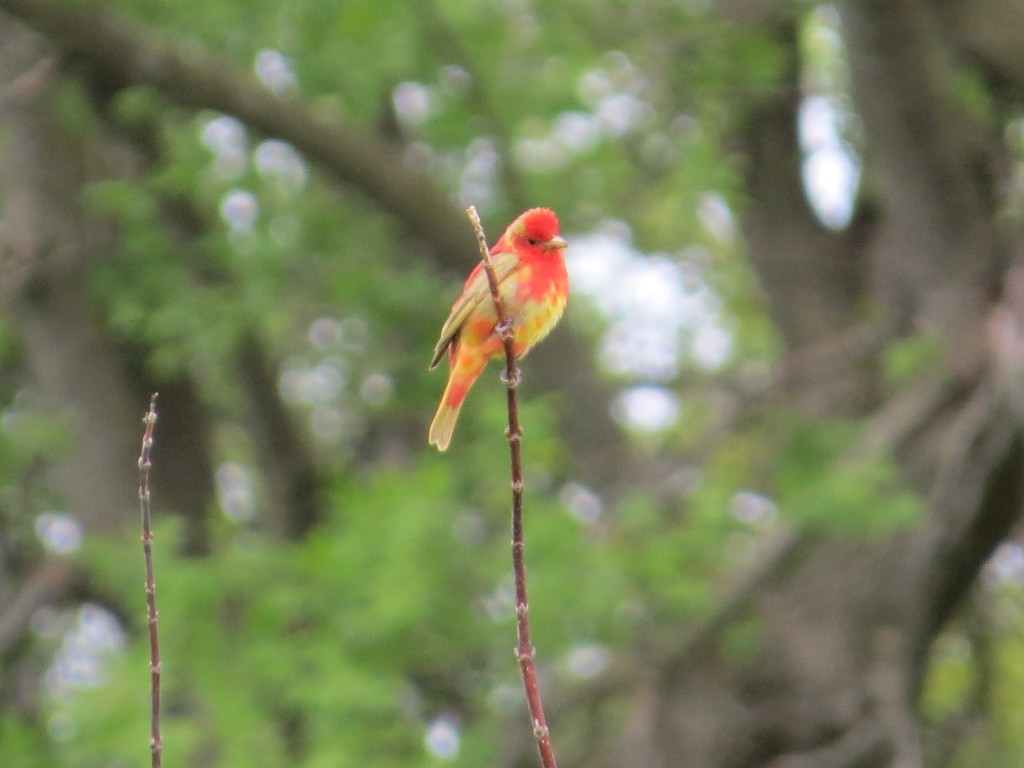
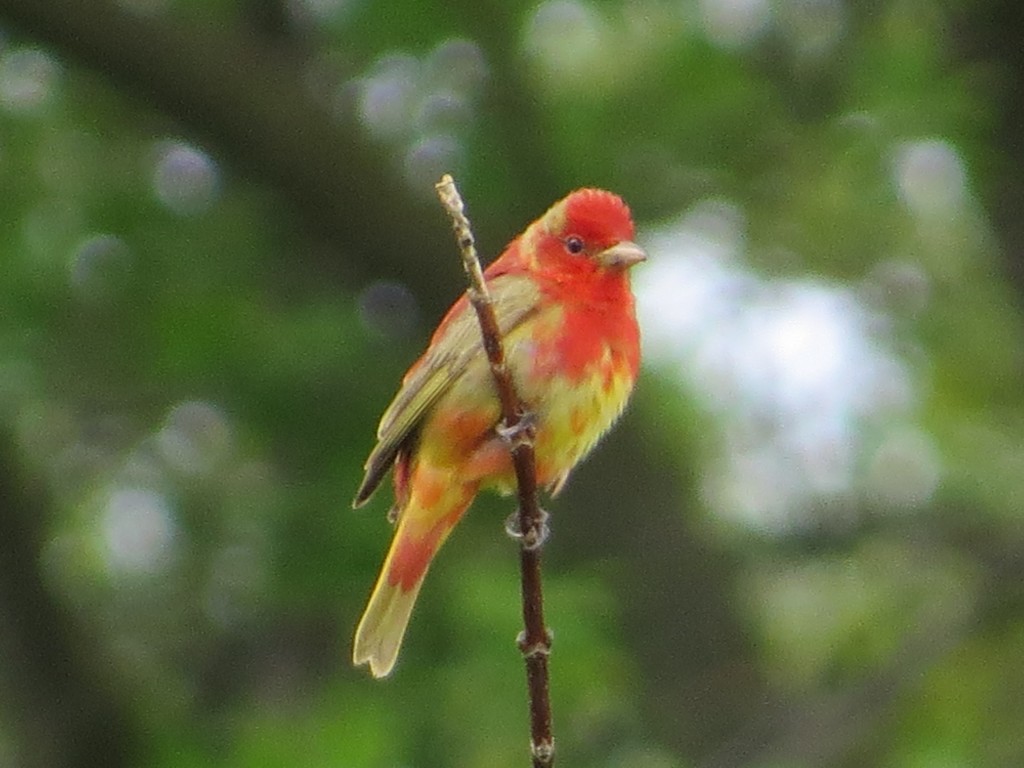

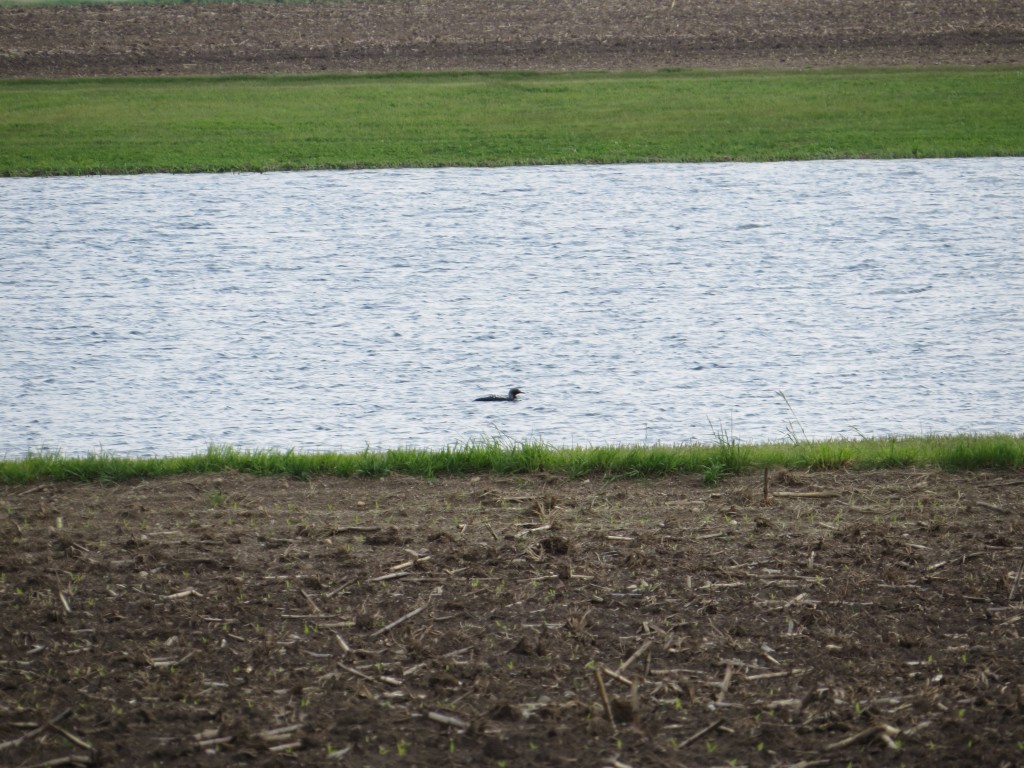 I was not anticipating such a great distance to the bird. The distance coupled with heat waves emanating from the soil made photography difficult. The temptation to trespass was real. But those tiny green specks in the soil are brand new corn plants. I did not want to tick off some farmer. I did ask a couple of neighboring residents about who owned the land and was bummed to find out the owner didn’t even live around this spot. So, I did the best I possibly could given the circumstances.
I was not anticipating such a great distance to the bird. The distance coupled with heat waves emanating from the soil made photography difficult. The temptation to trespass was real. But those tiny green specks in the soil are brand new corn plants. I did not want to tick off some farmer. I did ask a couple of neighboring residents about who owned the land and was bummed to find out the owner didn’t even live around this spot. So, I did the best I possibly could given the circumstances.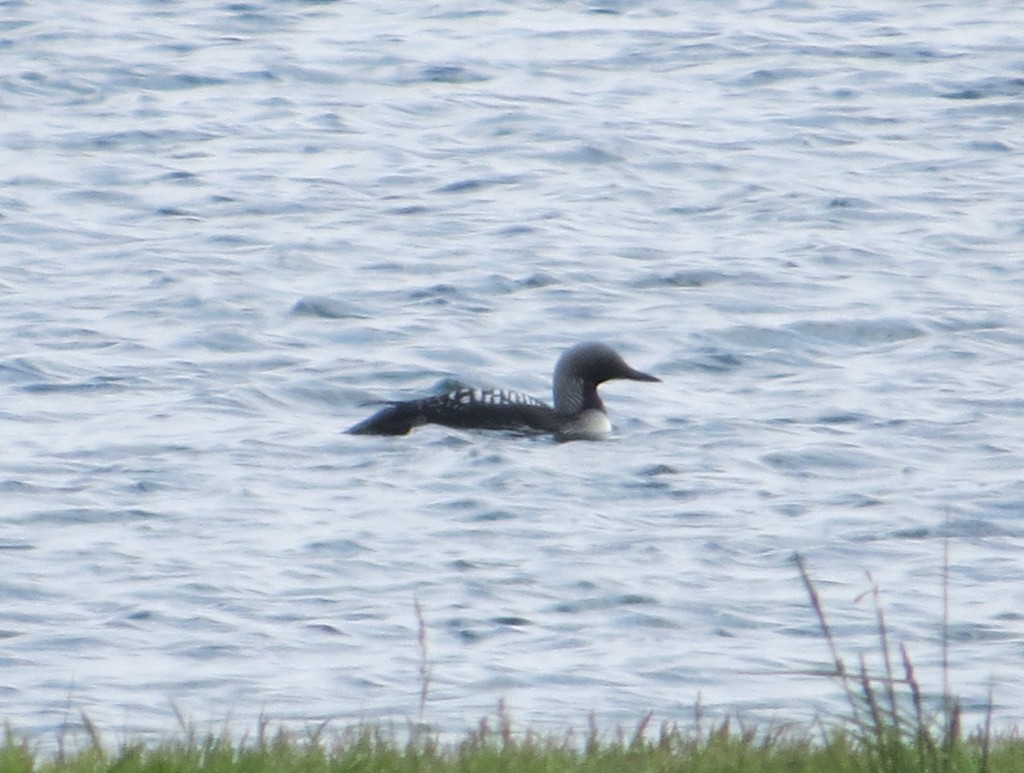
 Despite the distance, this was a thrilling bird to see. It is a life bird I always imagined getting as a speck on Lake Superior and being nothing more than a check mark on my life list. I had another fun find while seeing the Loon: Janet Timmerman whose yard I was just in the day before. We shared a laugh over the double chase and enjoyed the Loon together for a bit.
Despite the distance, this was a thrilling bird to see. It is a life bird I always imagined getting as a speck on Lake Superior and being nothing more than a check mark on my life list. I had another fun find while seeing the Loon: Janet Timmerman whose yard I was just in the day before. We shared a laugh over the double chase and enjoyed the Loon together for a bit.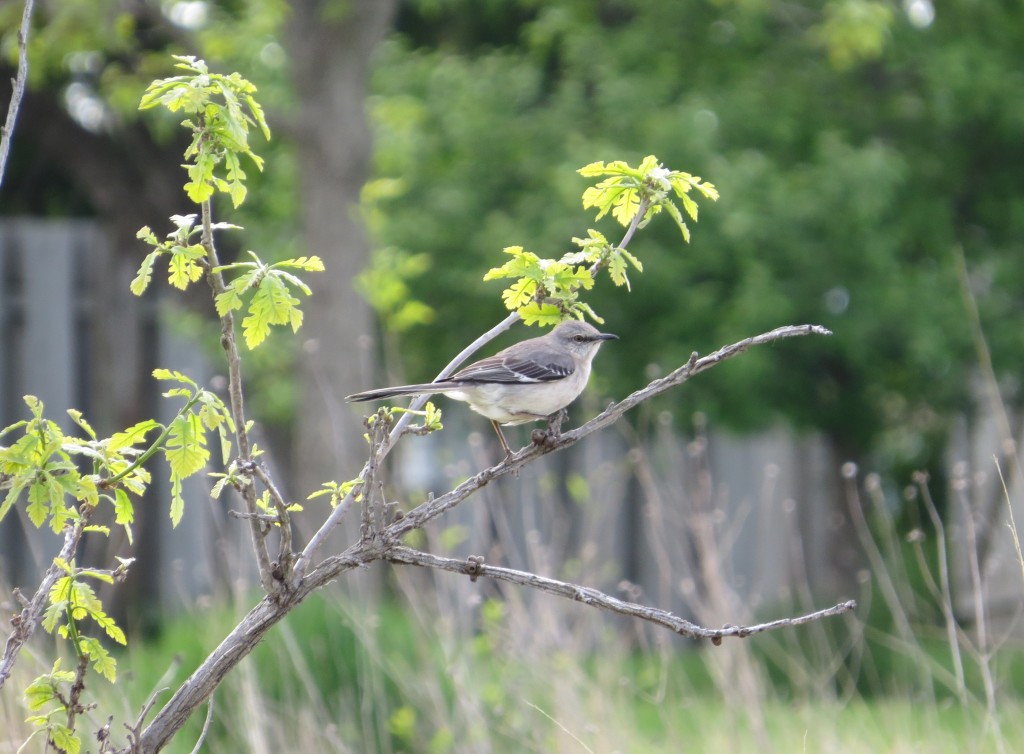
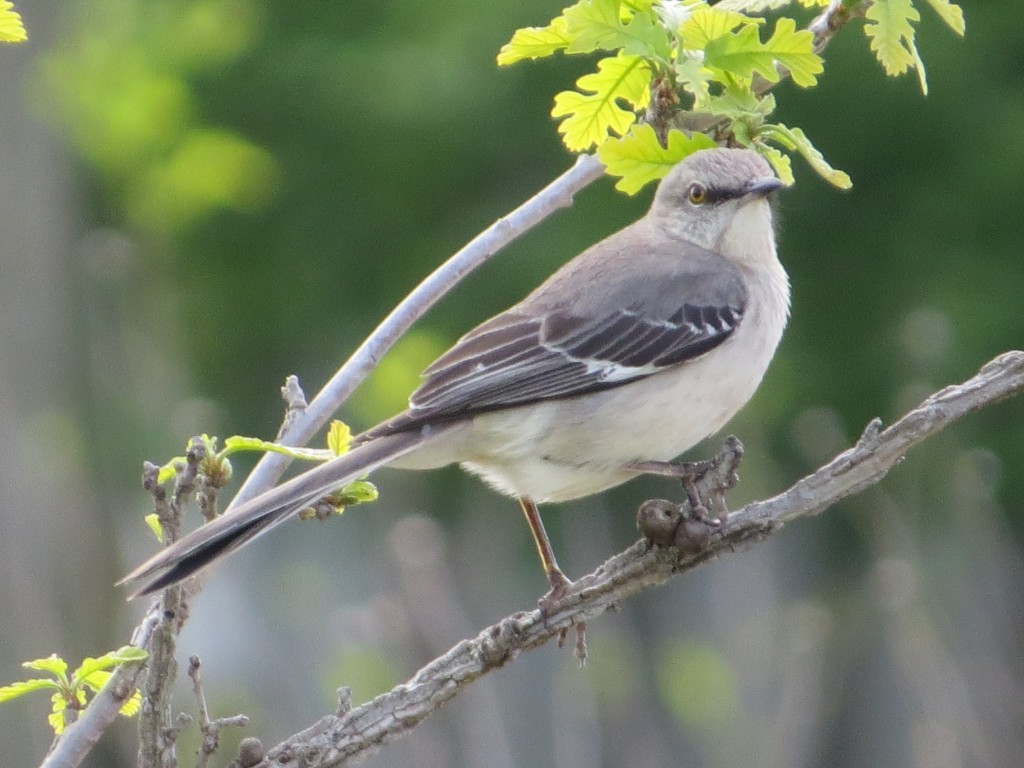
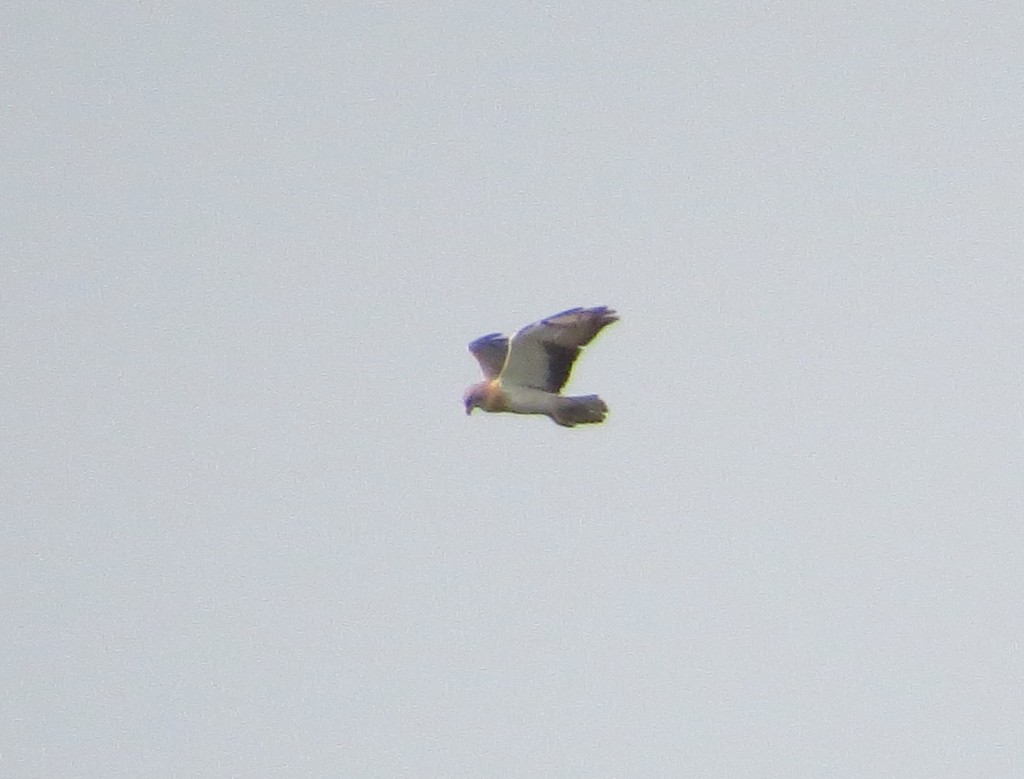
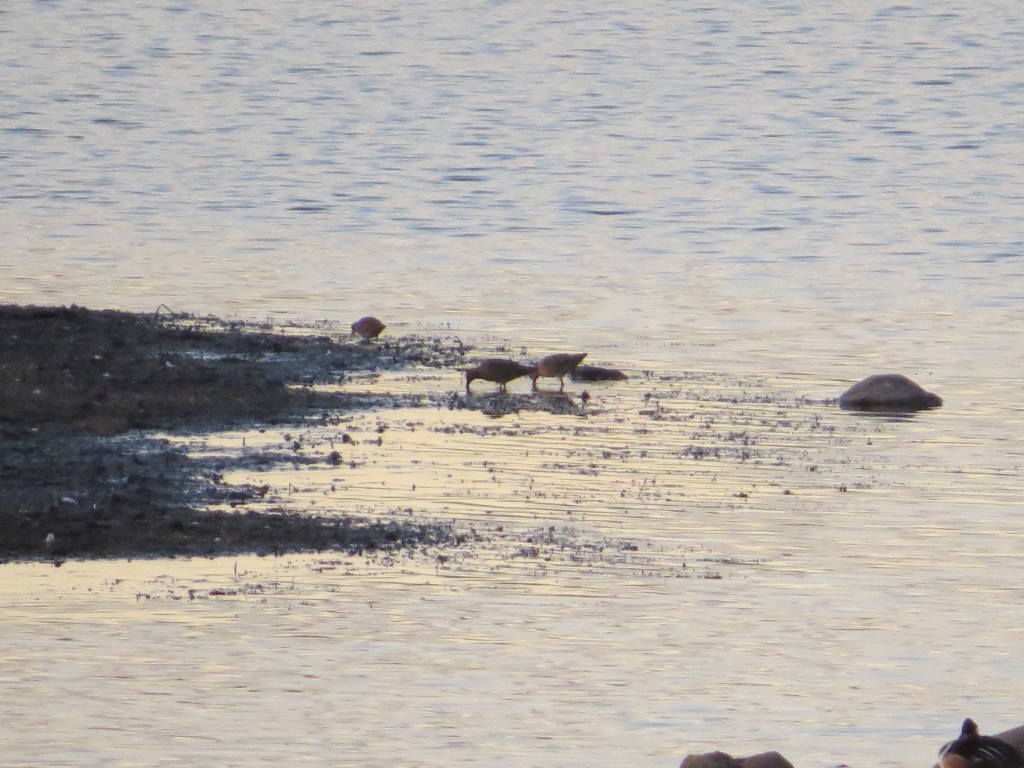
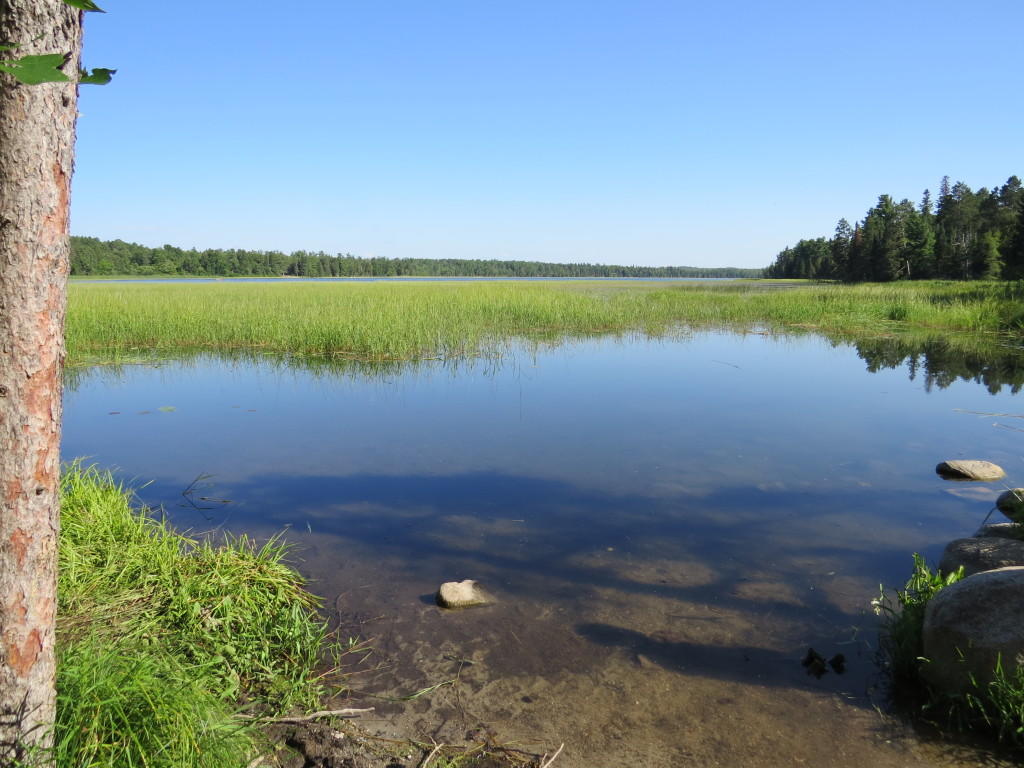 That’s it, right there–the rocks at the bottom right of the photo above mark the terminus of Lake Itasca and the beginning of the mighty Mississippi. Here massive hordes of humanity, some more clothed than others, take their turn walking, slipping, and selfie-ing across the rocks at the Mississippi Headwaters in Itasca State Park.
That’s it, right there–the rocks at the bottom right of the photo above mark the terminus of Lake Itasca and the beginning of the mighty Mississippi. Here massive hordes of humanity, some more clothed than others, take their turn walking, slipping, and selfie-ing across the rocks at the Mississippi Headwaters in Itasca State Park. Getting a photo of your significant people making the famous 20-foot trek without other tourists in the frame is about as easy as seeing a Black-backed Woodpecker in the park. Of course, both become much easier in January…
Getting a photo of your significant people making the famous 20-foot trek without other tourists in the frame is about as easy as seeing a Black-backed Woodpecker in the park. Of course, both become much easier in January…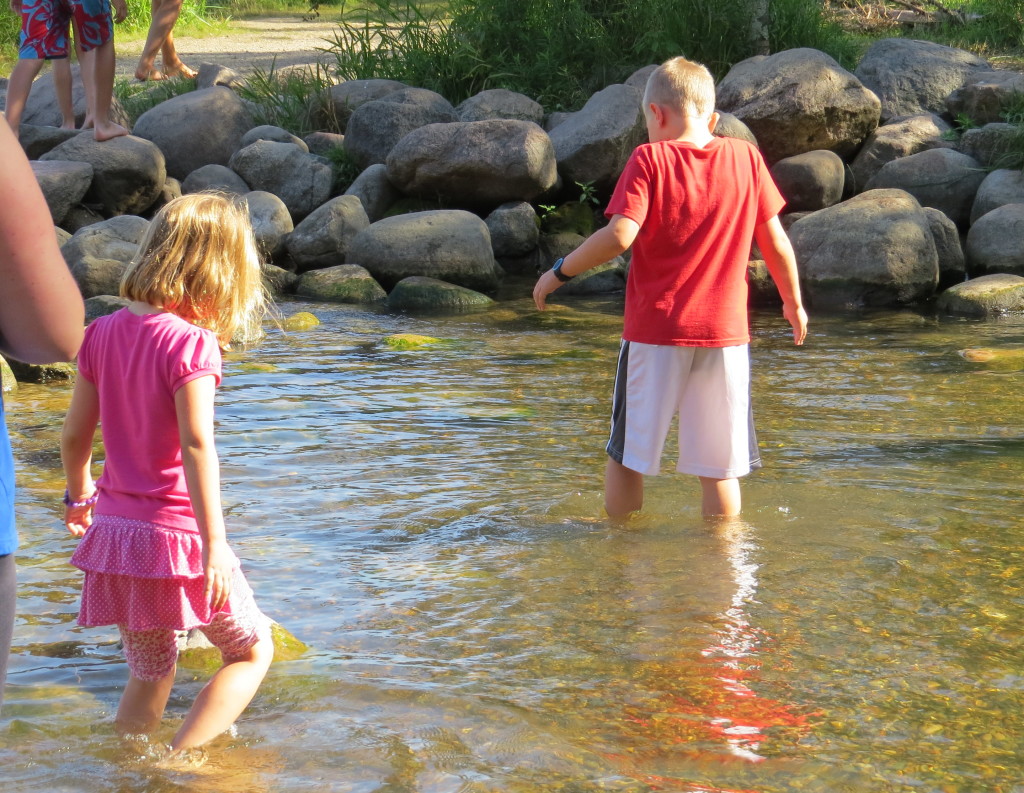
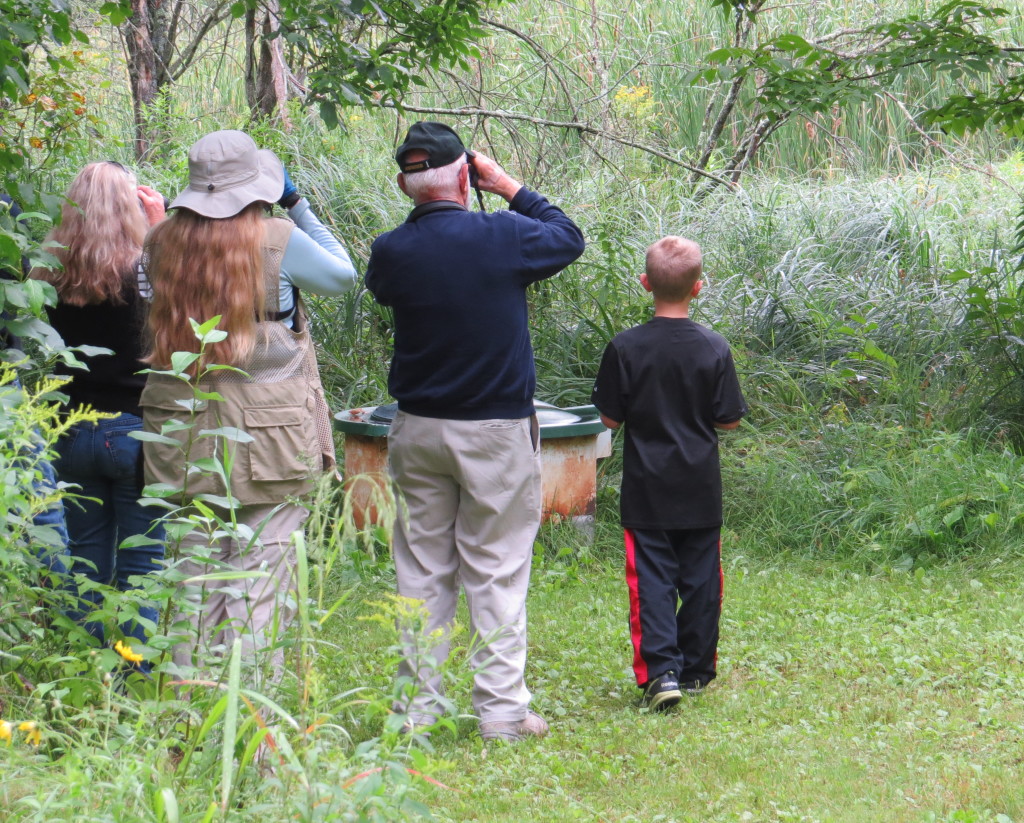
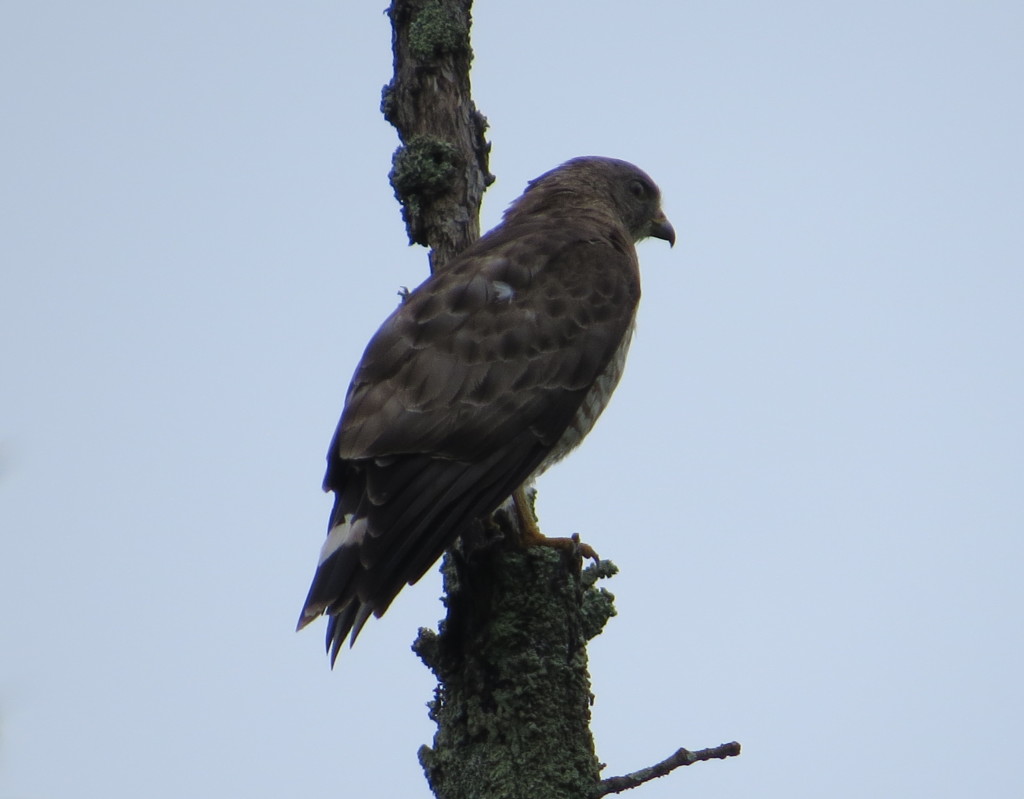
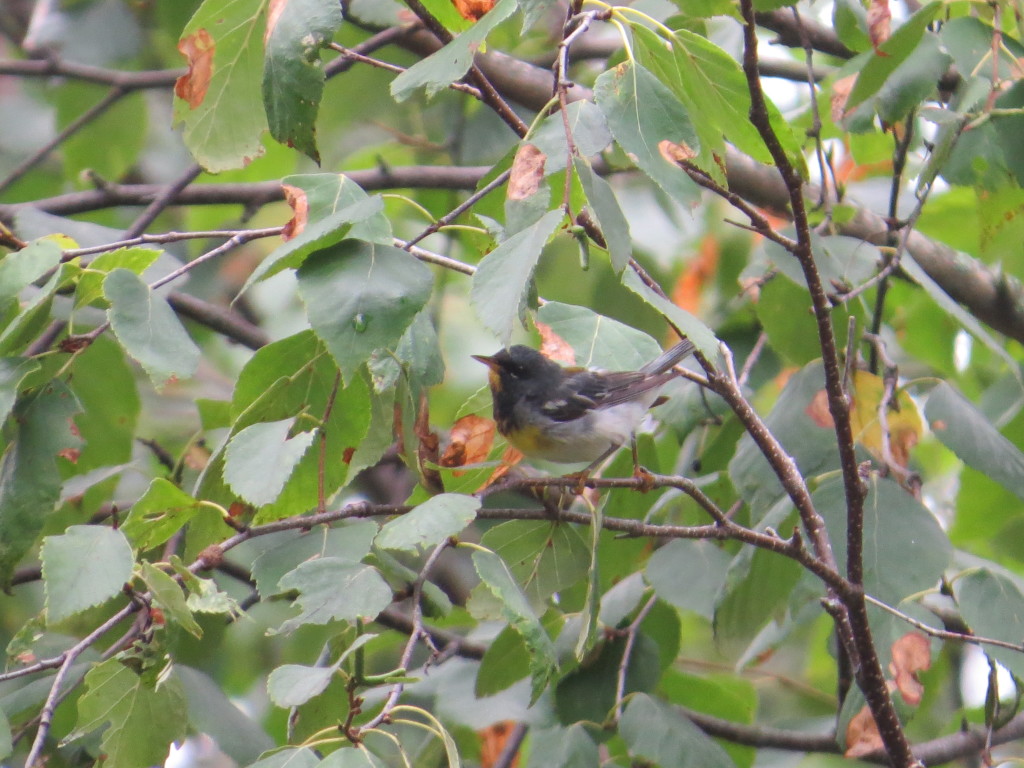 Though the light was bad and some birds were changing into their fall clothes, the flurry of activity kept it exciting even if it was just over binocular views. I did manage to photograph a cooperative juvenile Chestnut-sided Warbler. Just as some people aren’t fond of babies (the human kind), I am not found of juvenile birds. This one I found striking, however.
Though the light was bad and some birds were changing into their fall clothes, the flurry of activity kept it exciting even if it was just over binocular views. I did manage to photograph a cooperative juvenile Chestnut-sided Warbler. Just as some people aren’t fond of babies (the human kind), I am not found of juvenile birds. This one I found striking, however.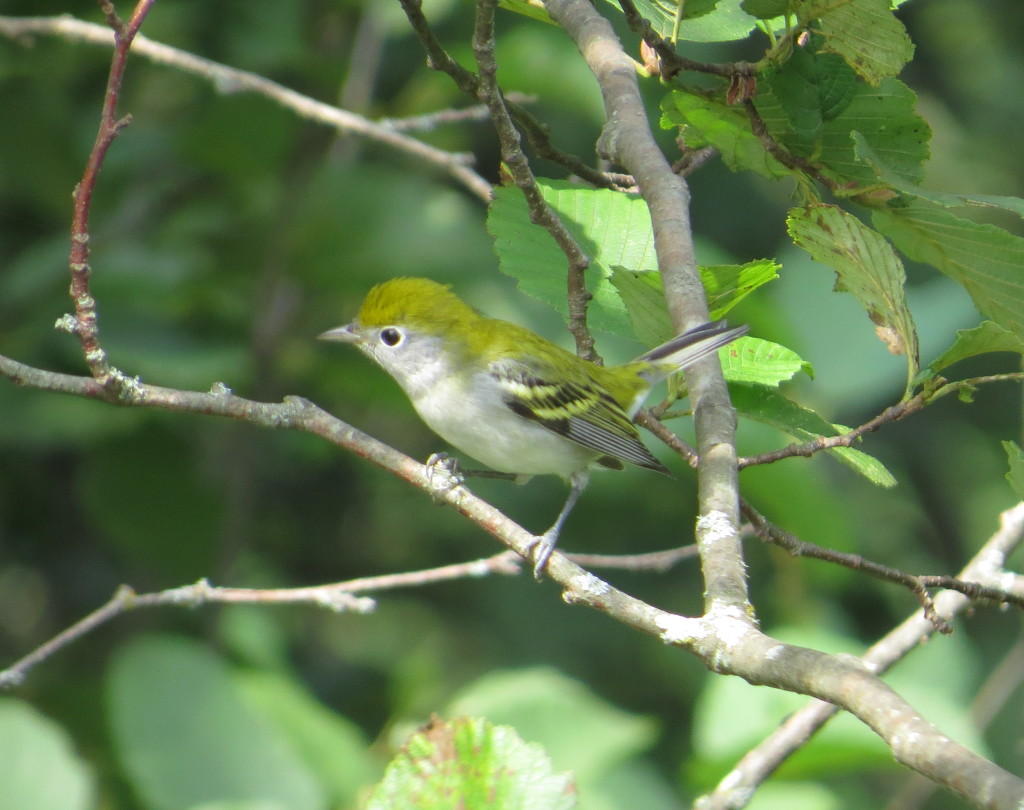
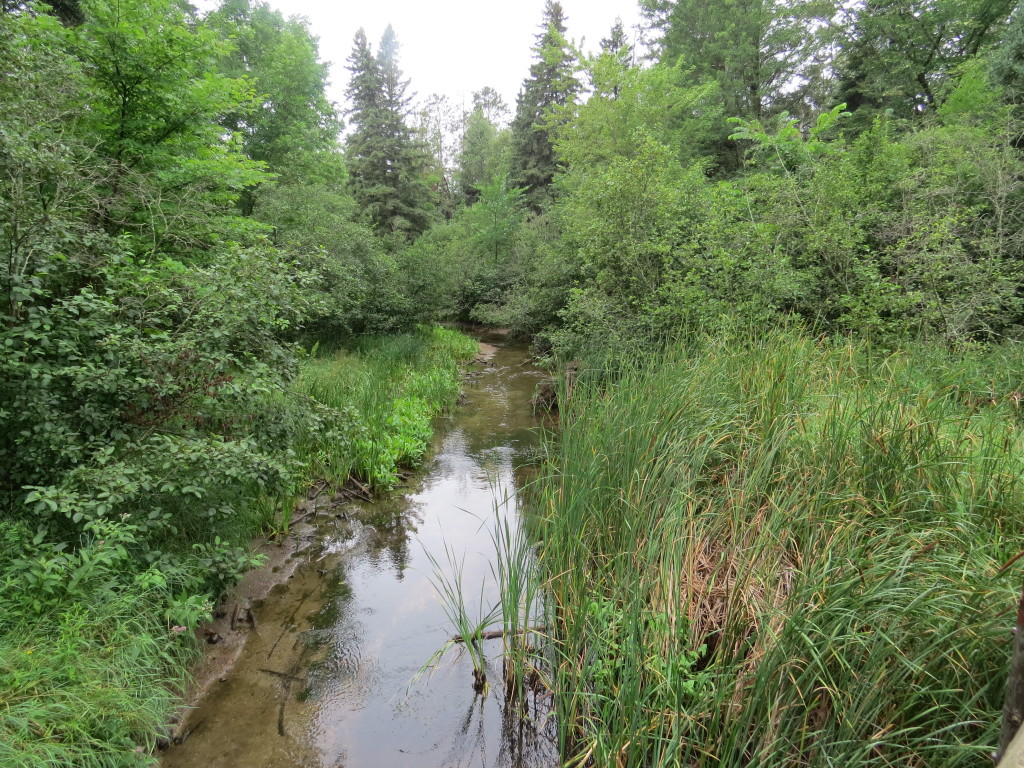
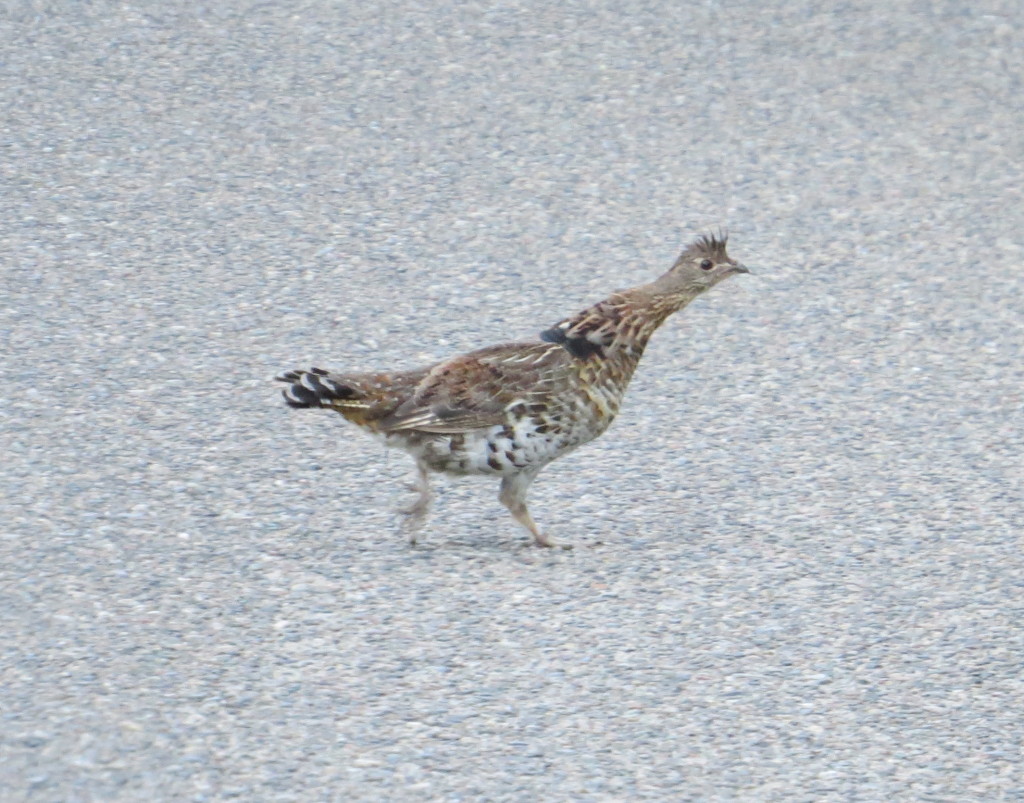
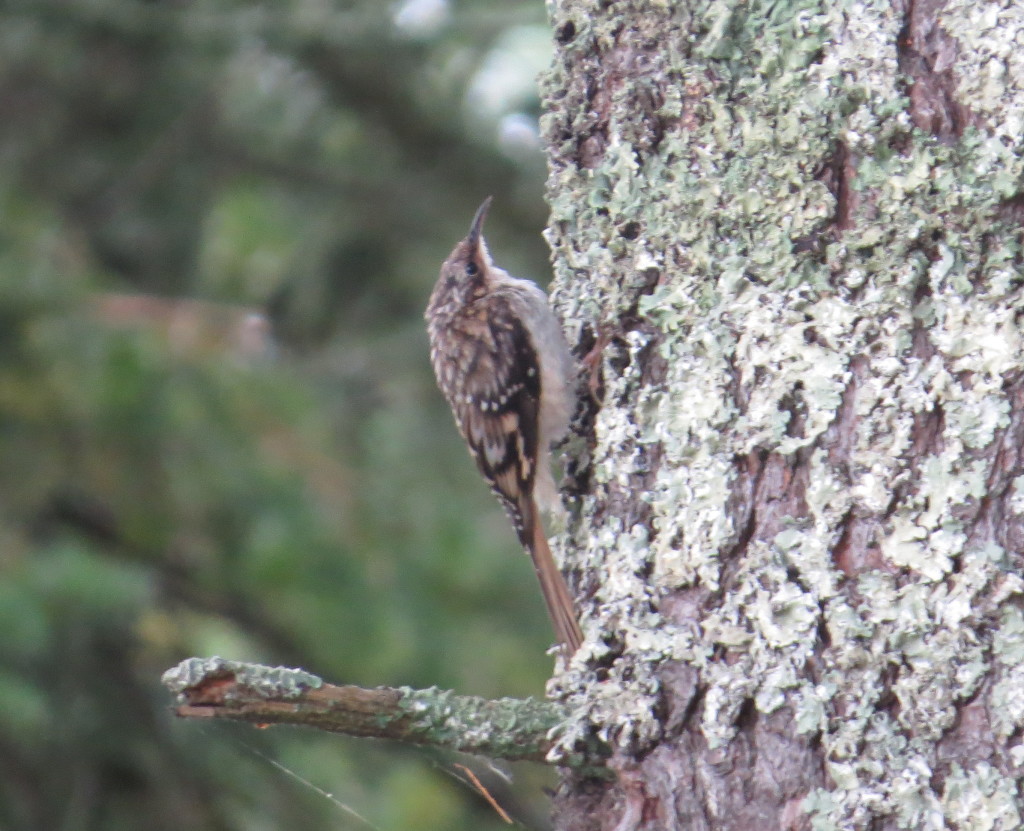
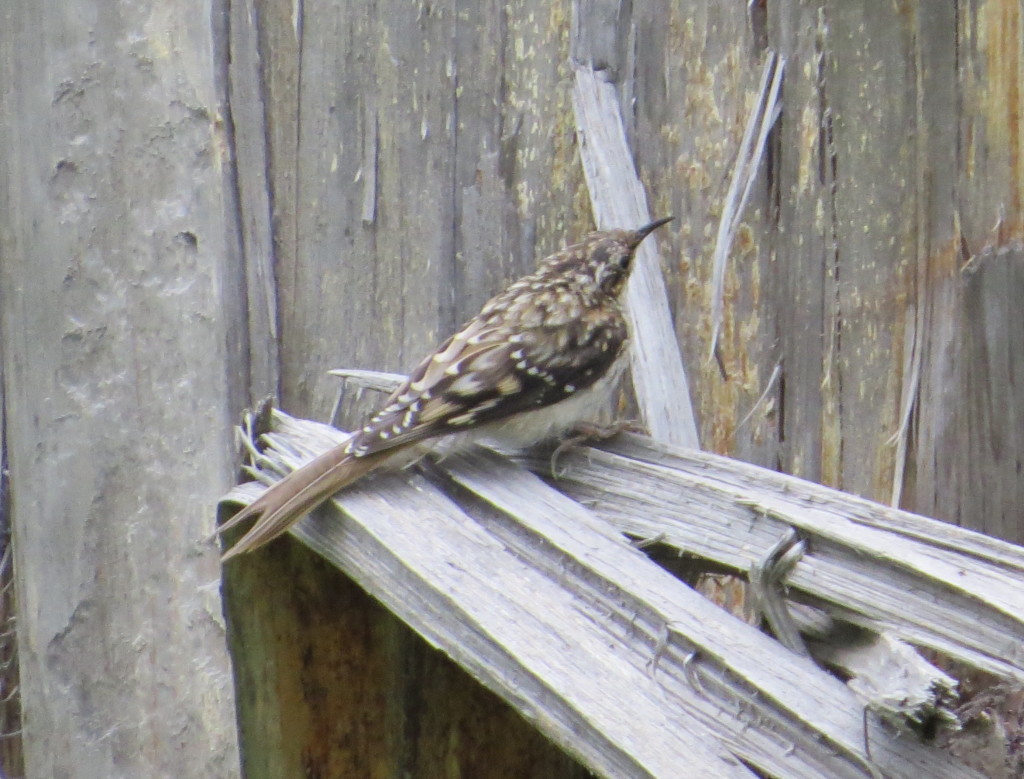
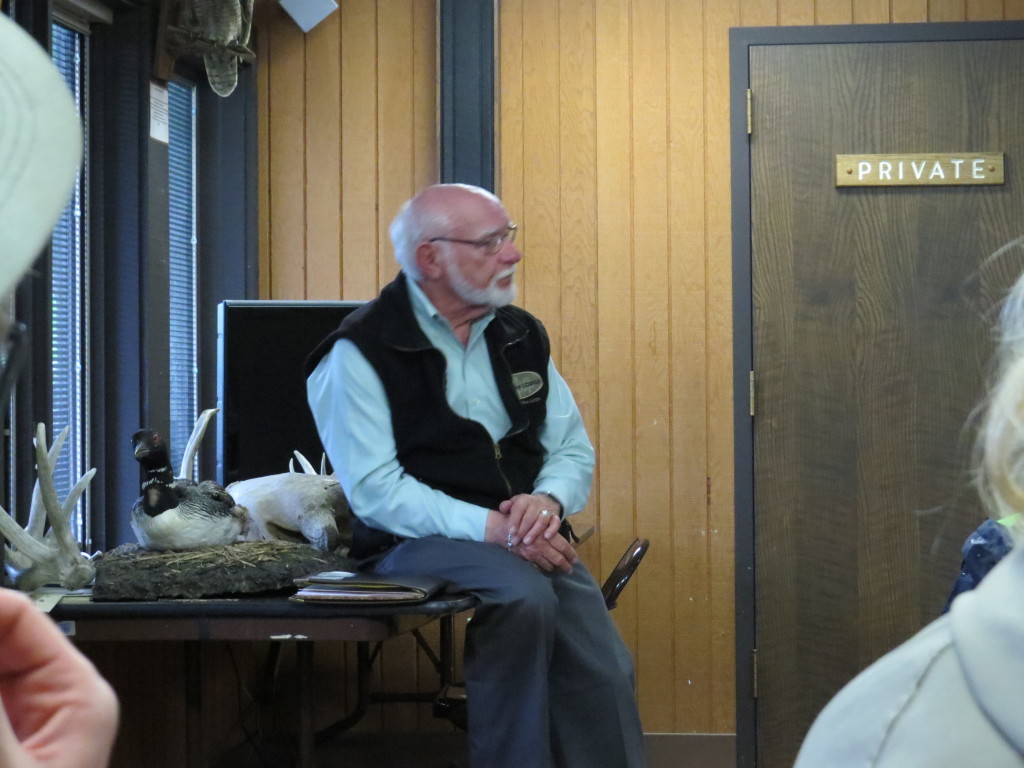

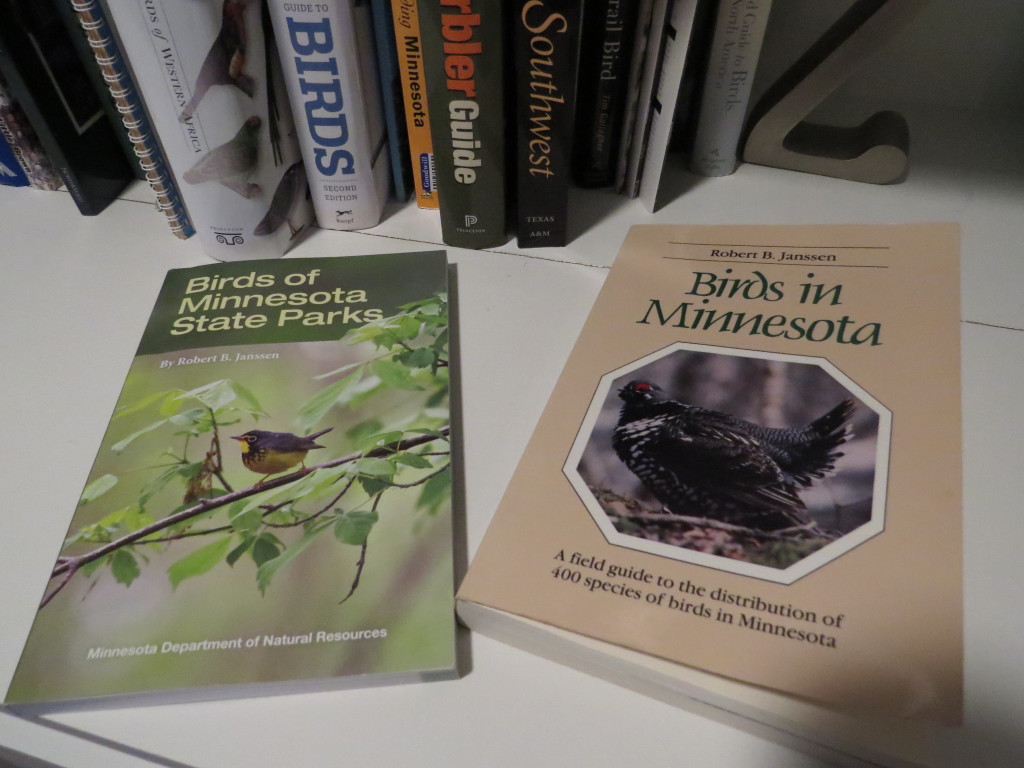
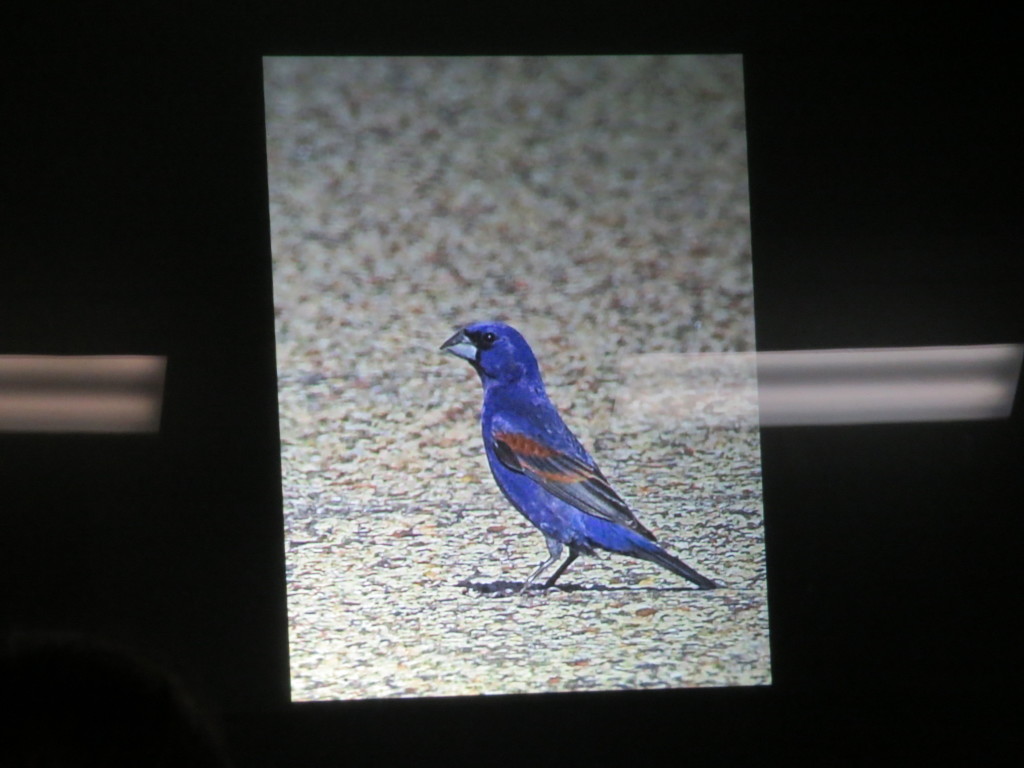

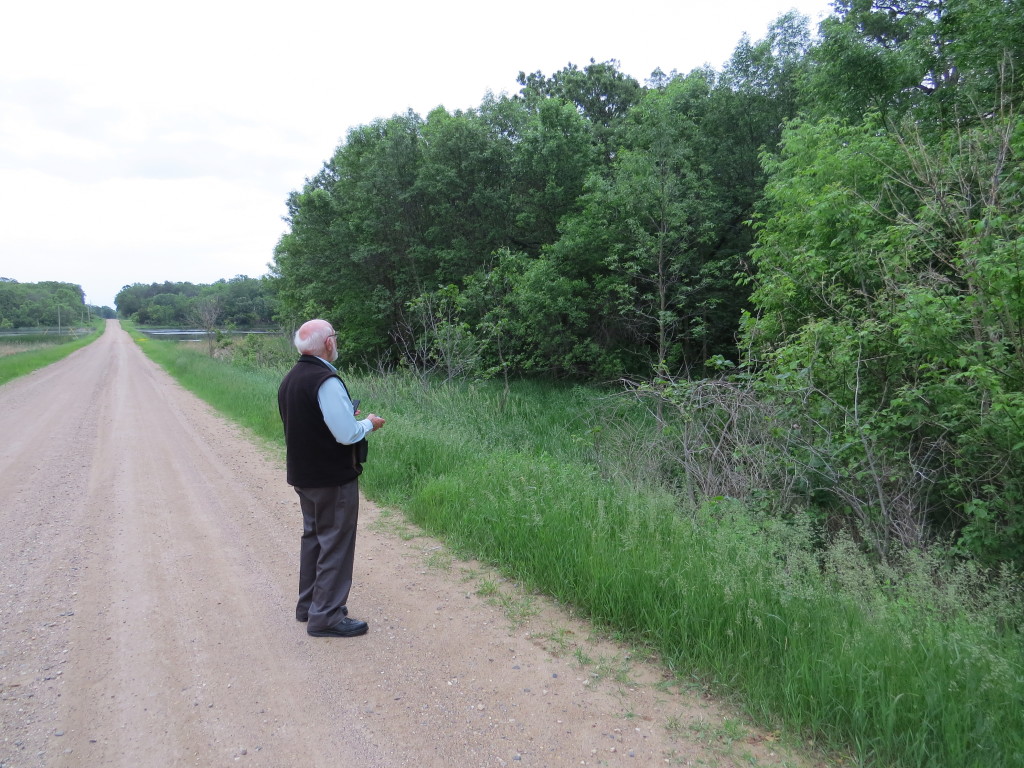
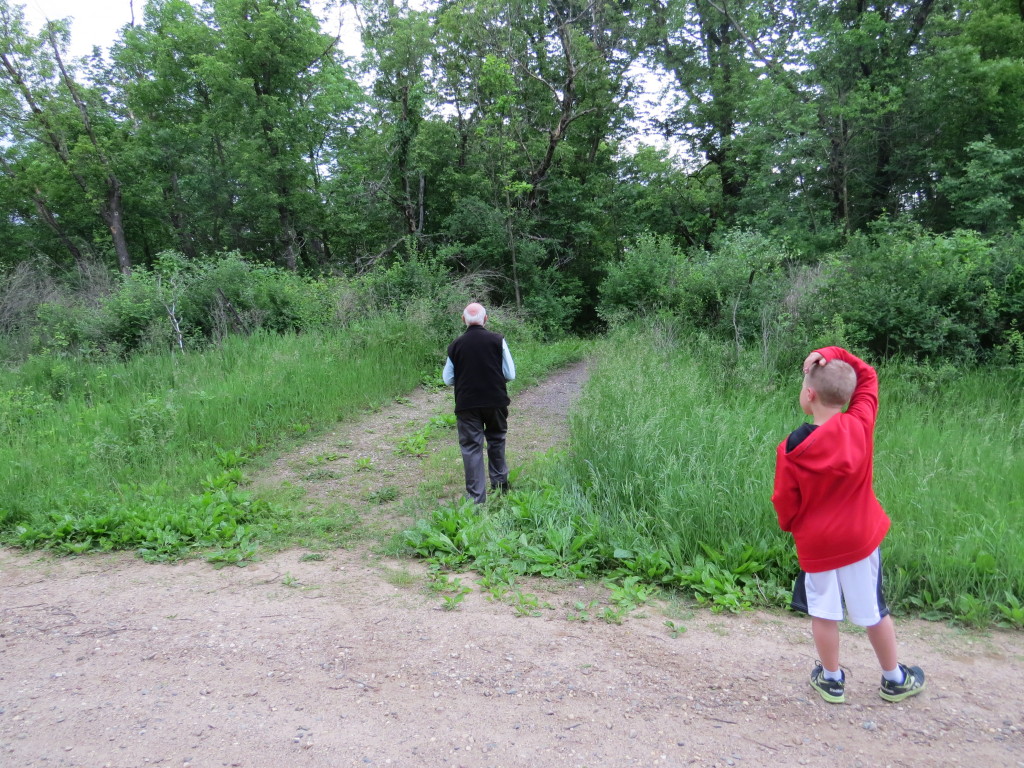
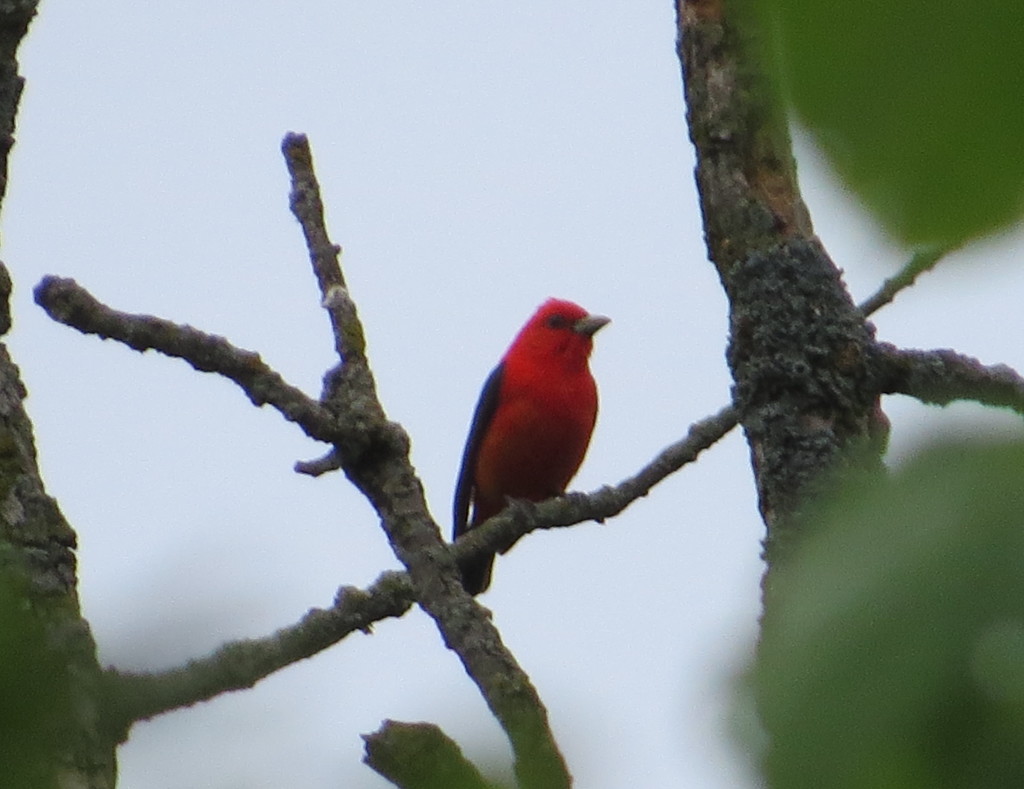 It was an even bigger thrill than my Wood Thrush lifer.
It was an even bigger thrill than my Wood Thrush lifer.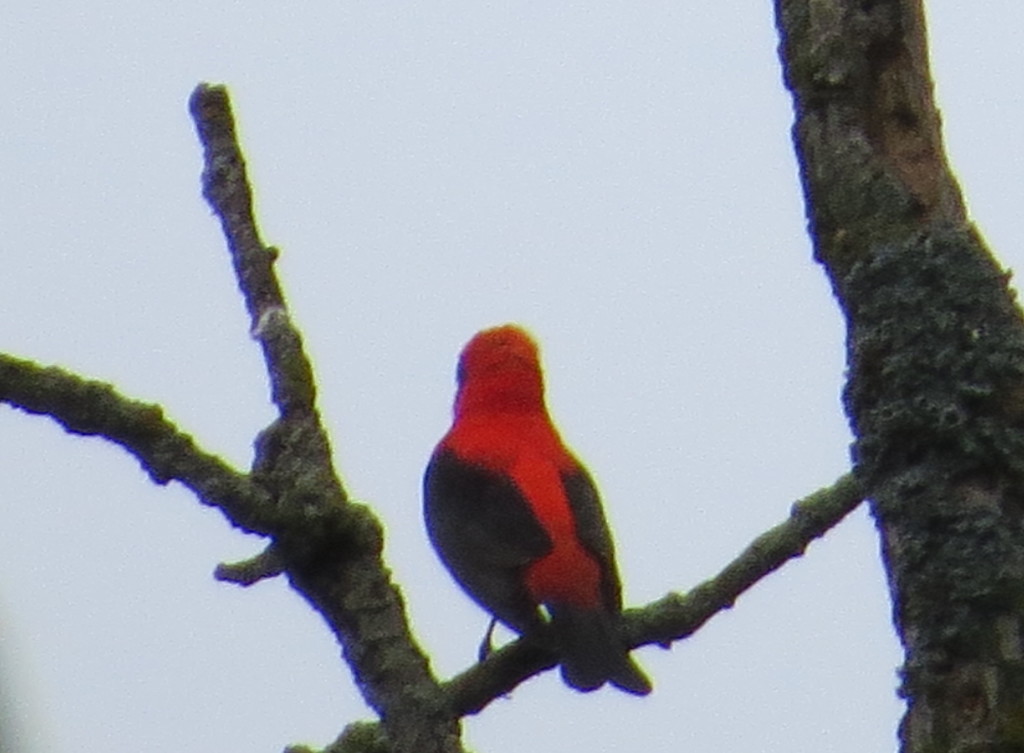 This is ten minutes from home. Ten minutes!
This is ten minutes from home. Ten minutes!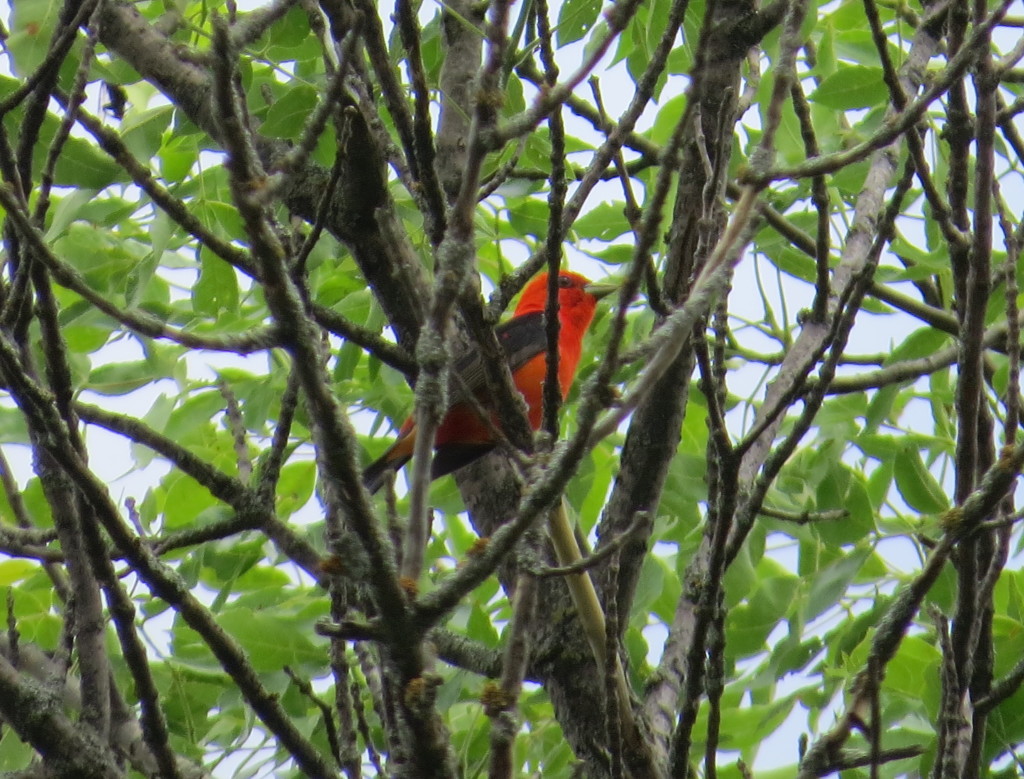
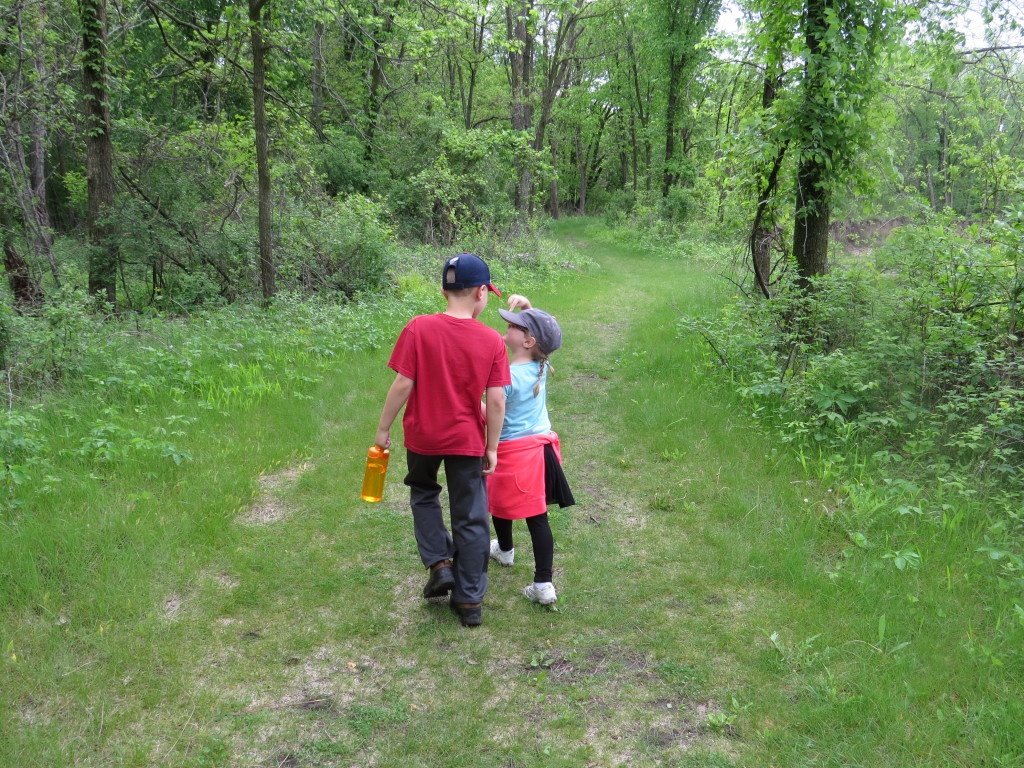 Getting to the scene a few hundred yards down the trail, I heard the bird immediately. Several birders and I strained to locate it. One lady claimed she saw it.
Getting to the scene a few hundred yards down the trail, I heard the bird immediately. Several birders and I strained to locate it. One lady claimed she saw it.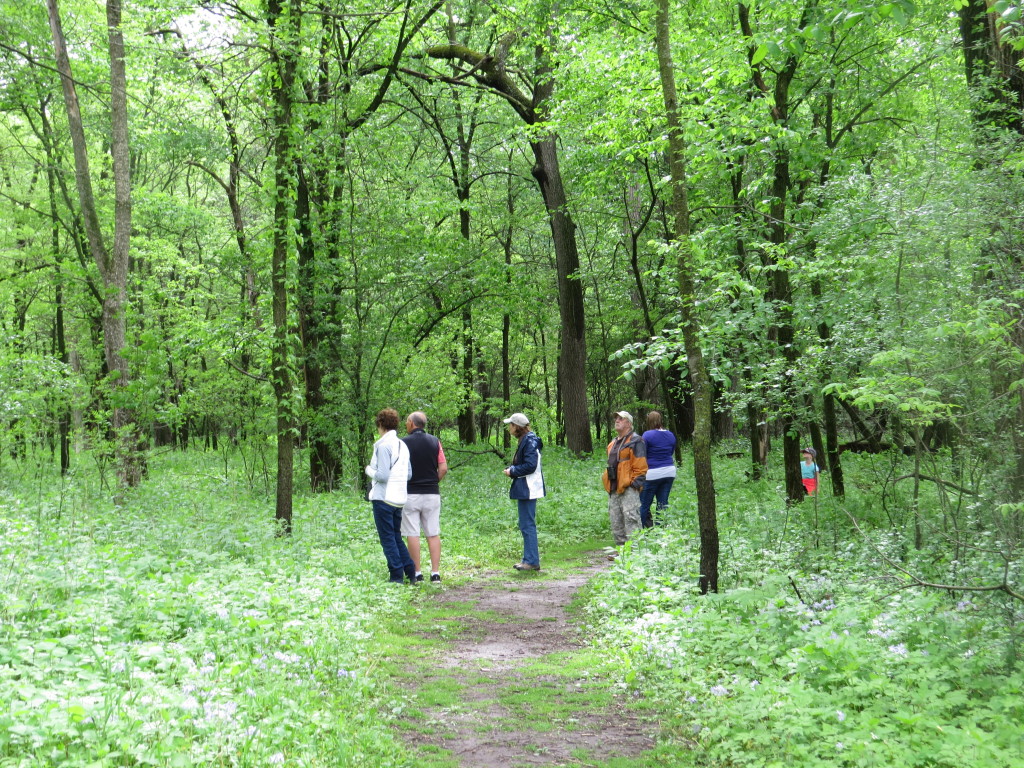
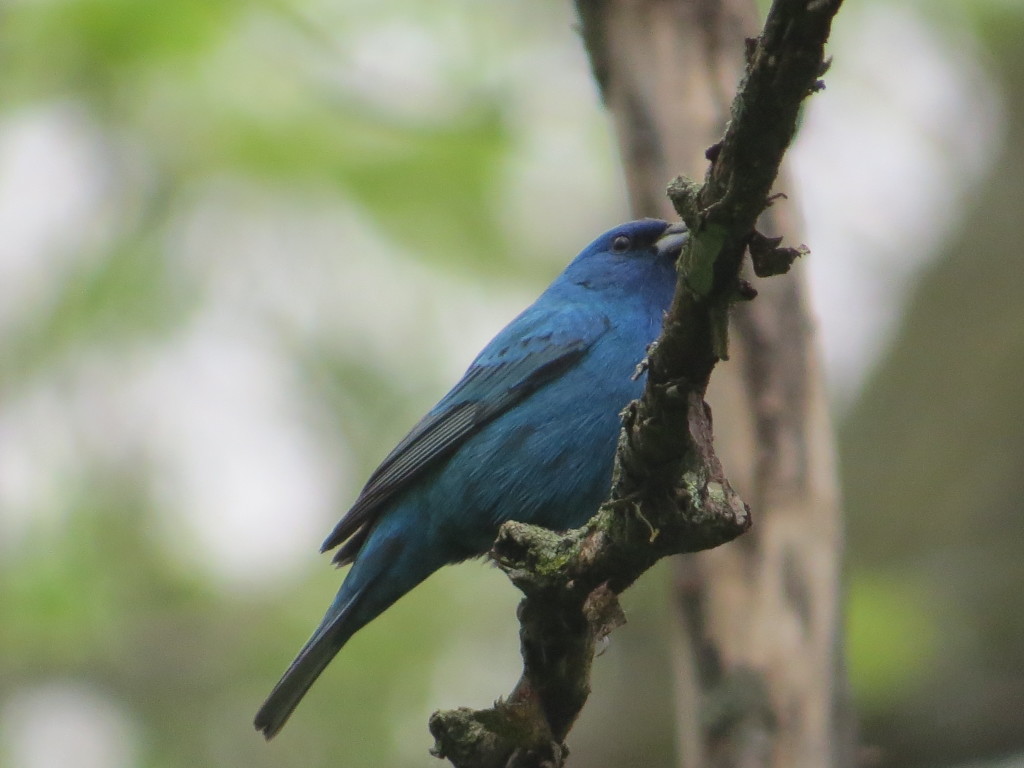 Before we left, I thought I heard the soft bee-buzzzz call of a Blue-winged Warbler. Nah, couldn’t be…
Before we left, I thought I heard the soft bee-buzzzz call of a Blue-winged Warbler. Nah, couldn’t be…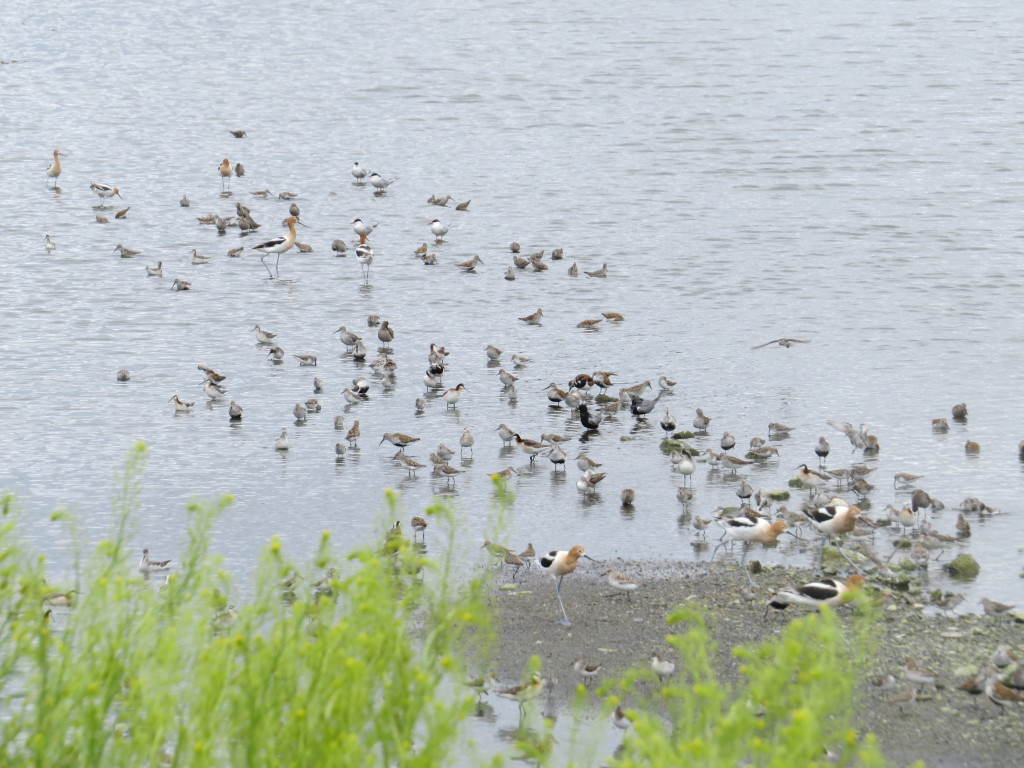
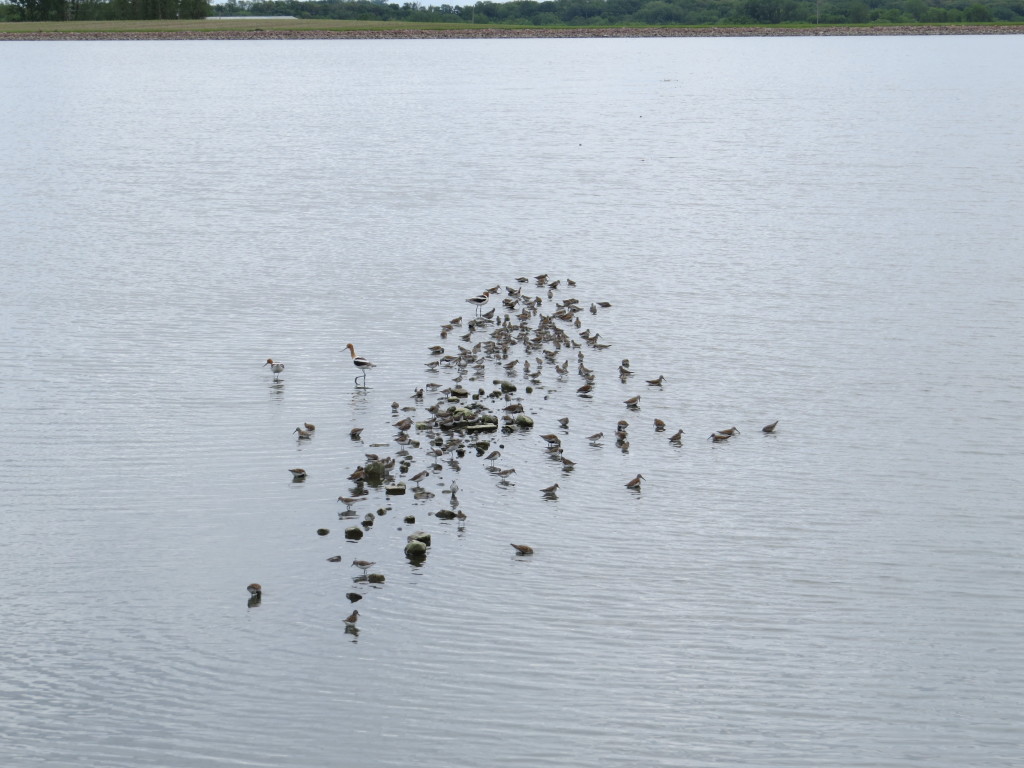
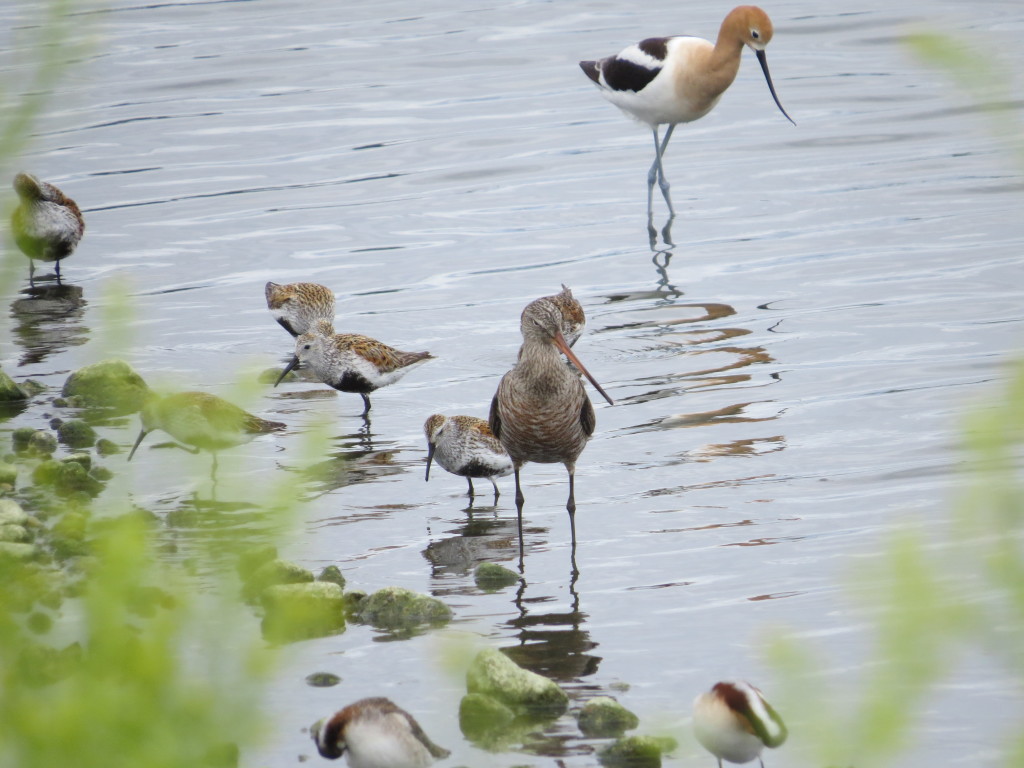
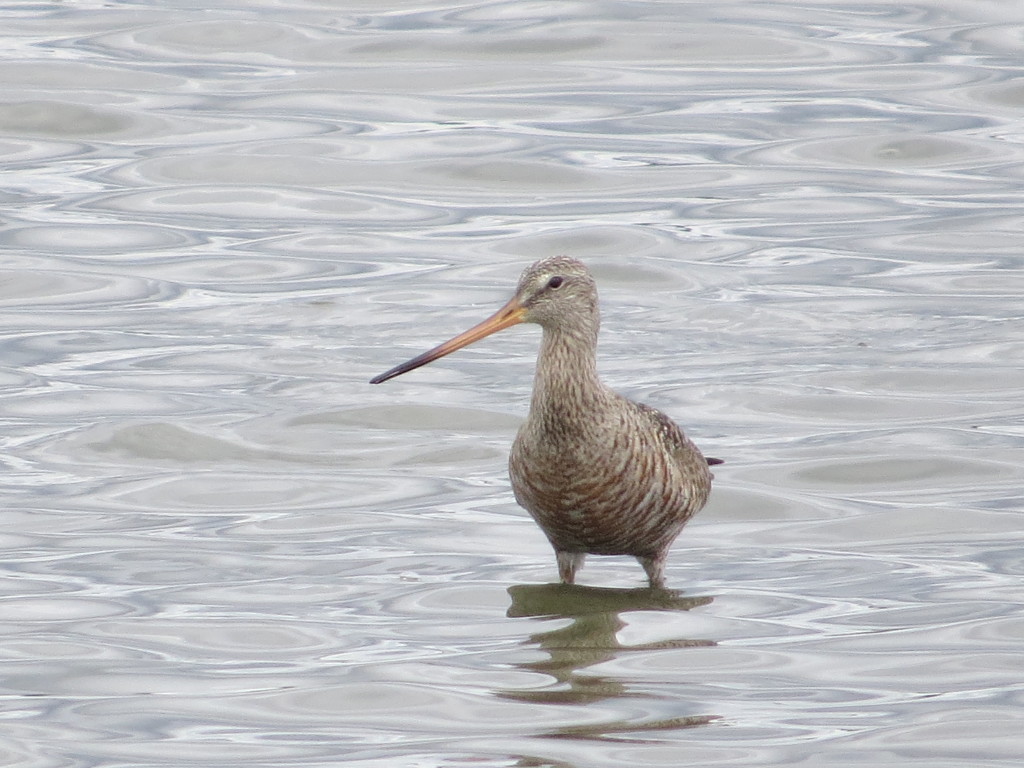
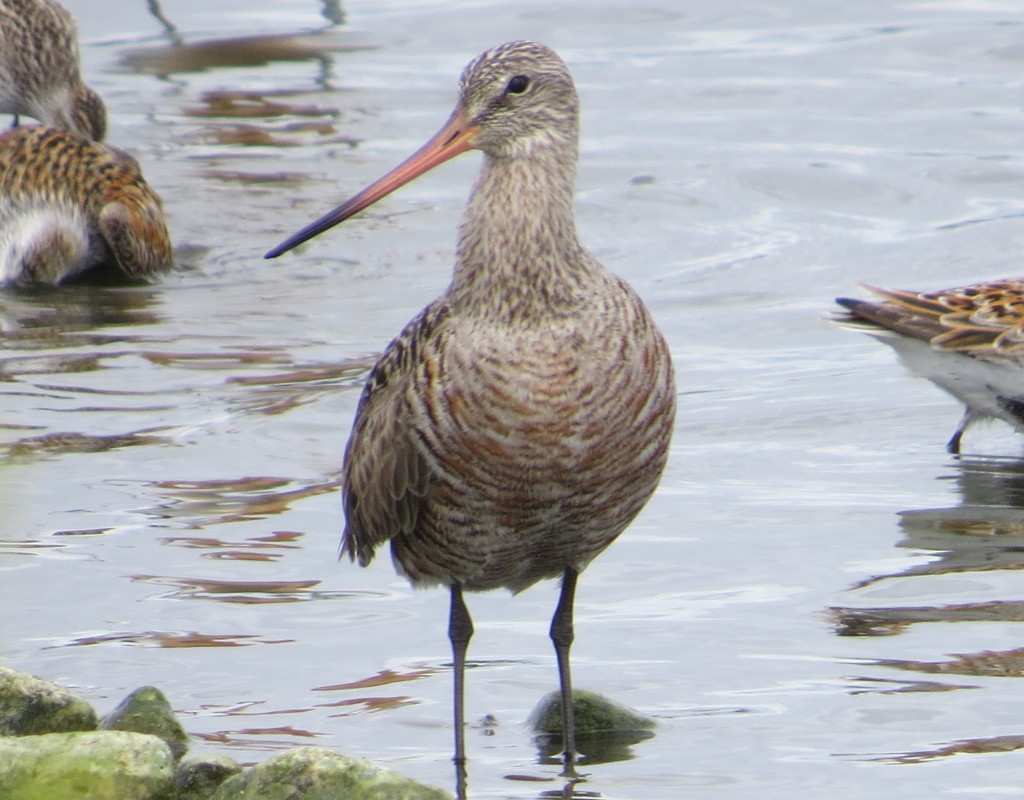
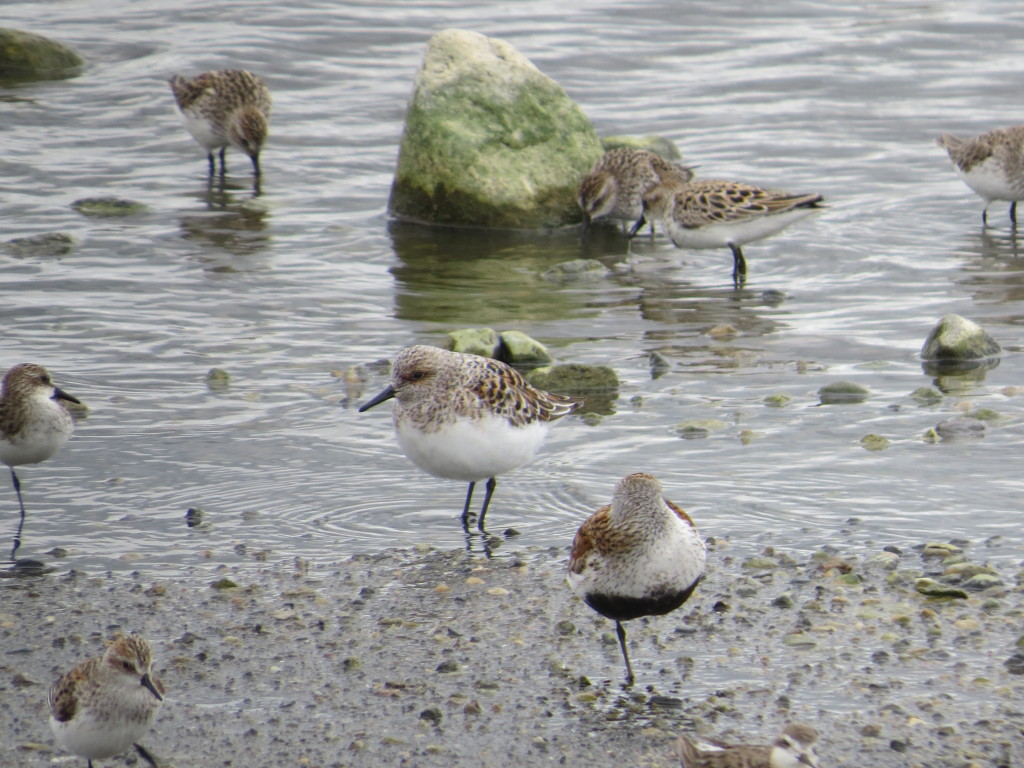
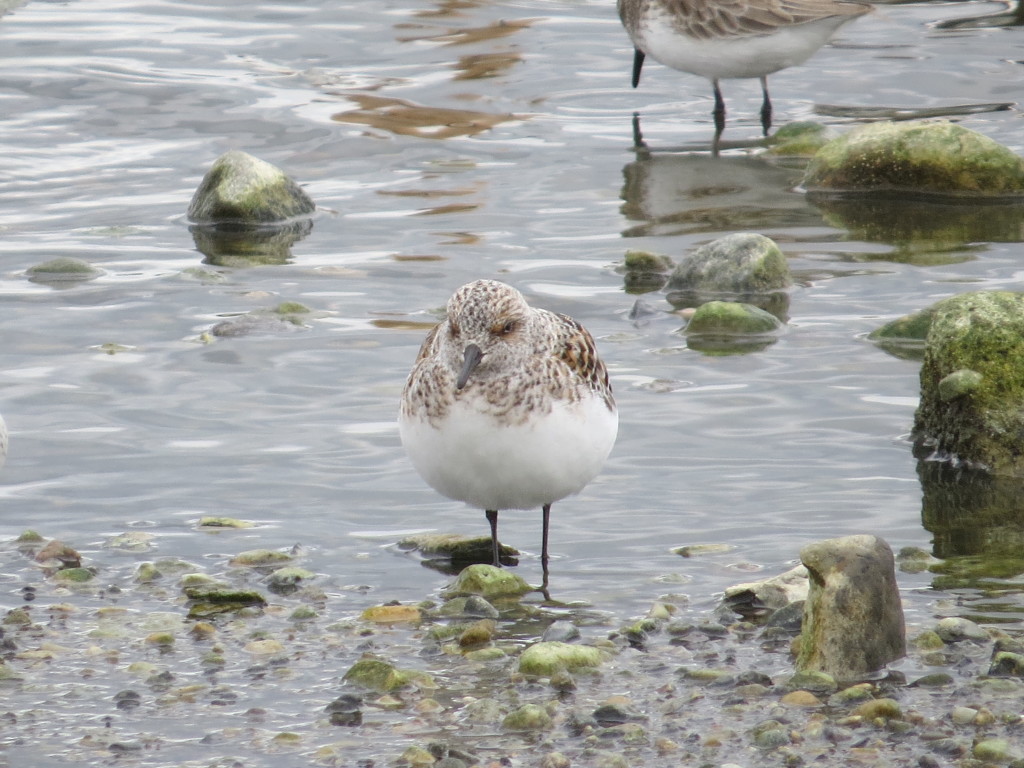 If two unplanned lifers weren’t enough, how about a third?! Several Terns caught my eye right away when we got to the ponds. Their bills looked excessively reddish and other clues were leading me to the conclusion that I was looking at Common Terns, which aren’t so common in Minnesota compared to the excessively common Forster’s Tern.
If two unplanned lifers weren’t enough, how about a third?! Several Terns caught my eye right away when we got to the ponds. Their bills looked excessively reddish and other clues were leading me to the conclusion that I was looking at Common Terns, which aren’t so common in Minnesota compared to the excessively common Forster’s Tern.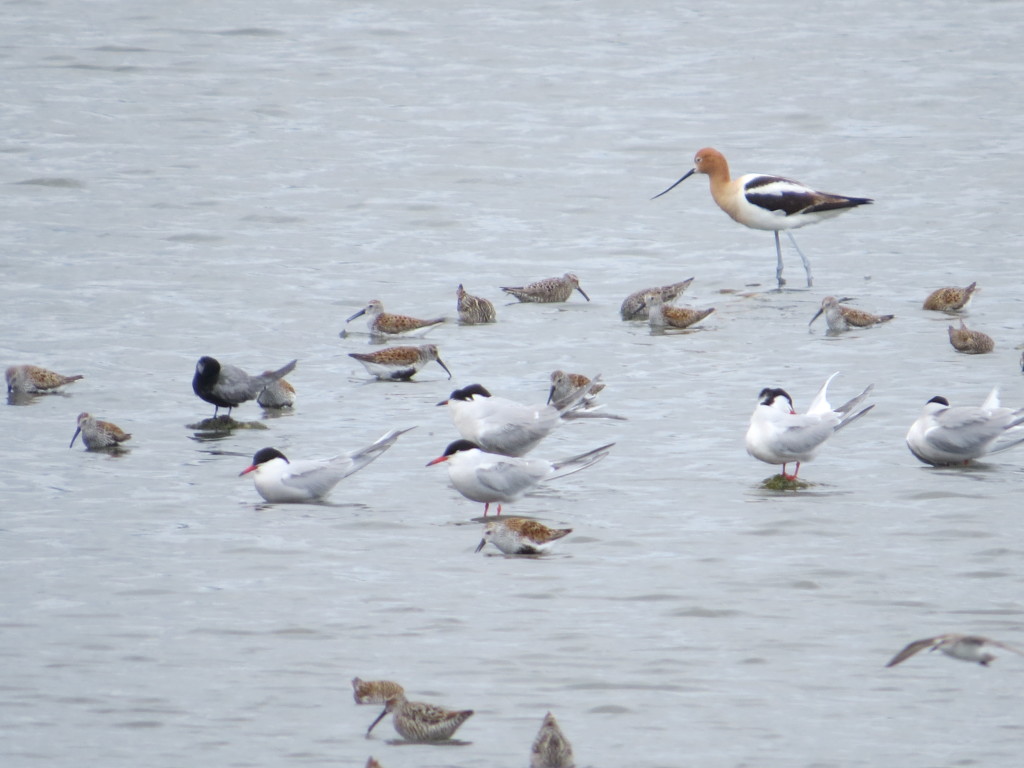 I spent much time agonizing over this ID after the fact as Common and Forster’s Terns are incredibly similar looking. Many hours were spent scouring images on Google, studying Sibley, etc. Common Terns have reddish-orange bills while Forster’s Terns have a straight-up orange color. The red really popped when I looked at these birds.
I spent much time agonizing over this ID after the fact as Common and Forster’s Terns are incredibly similar looking. Many hours were spent scouring images on Google, studying Sibley, etc. Common Terns have reddish-orange bills while Forster’s Terns have a straight-up orange color. The red really popped when I looked at these birds.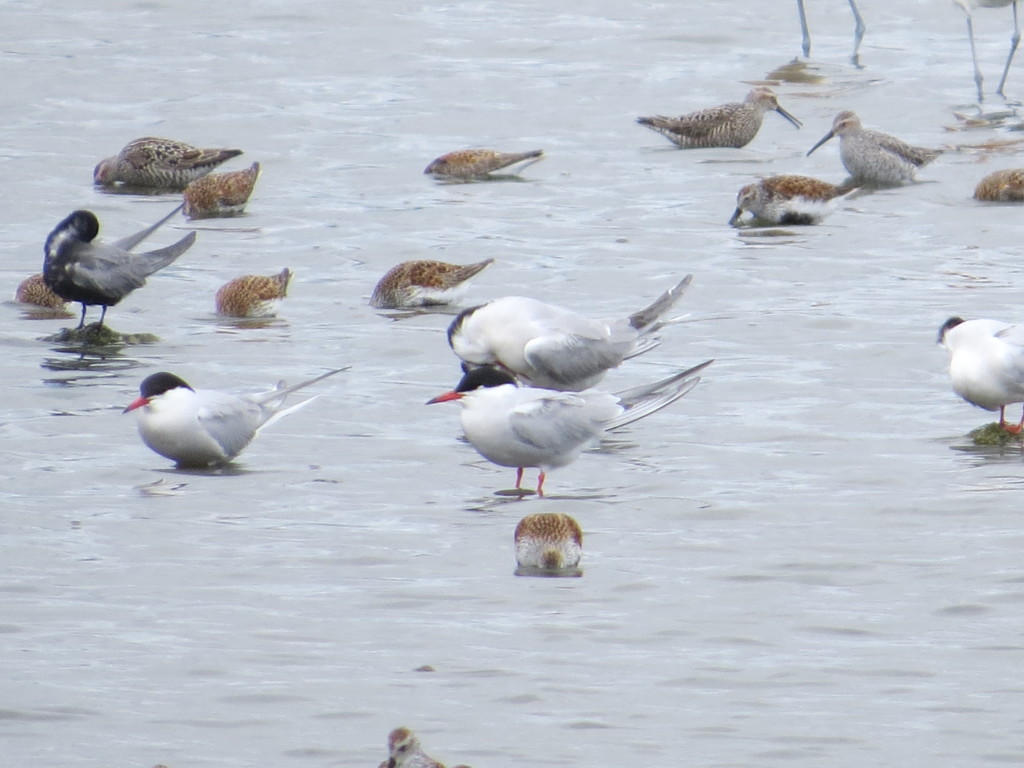
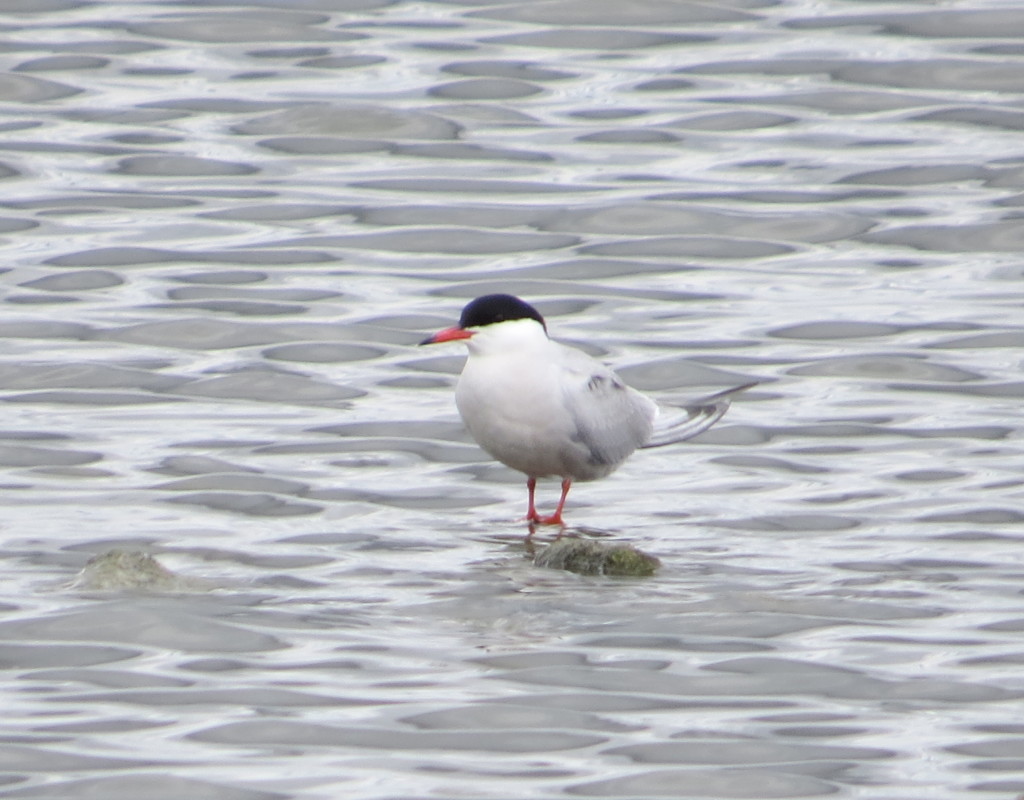
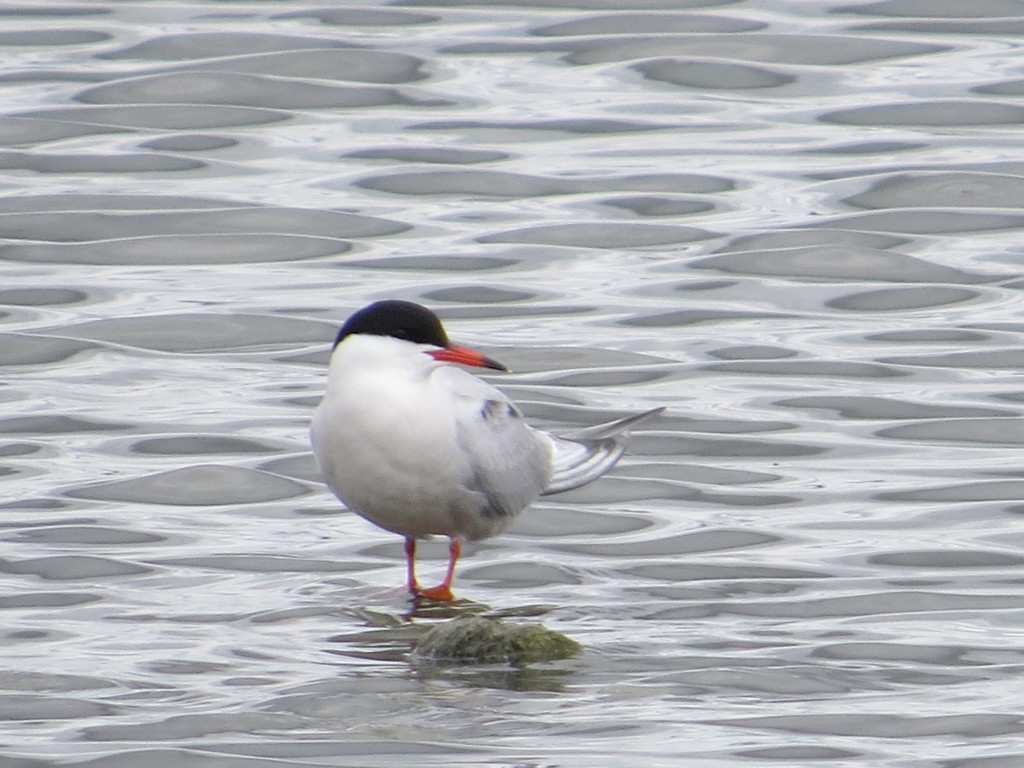
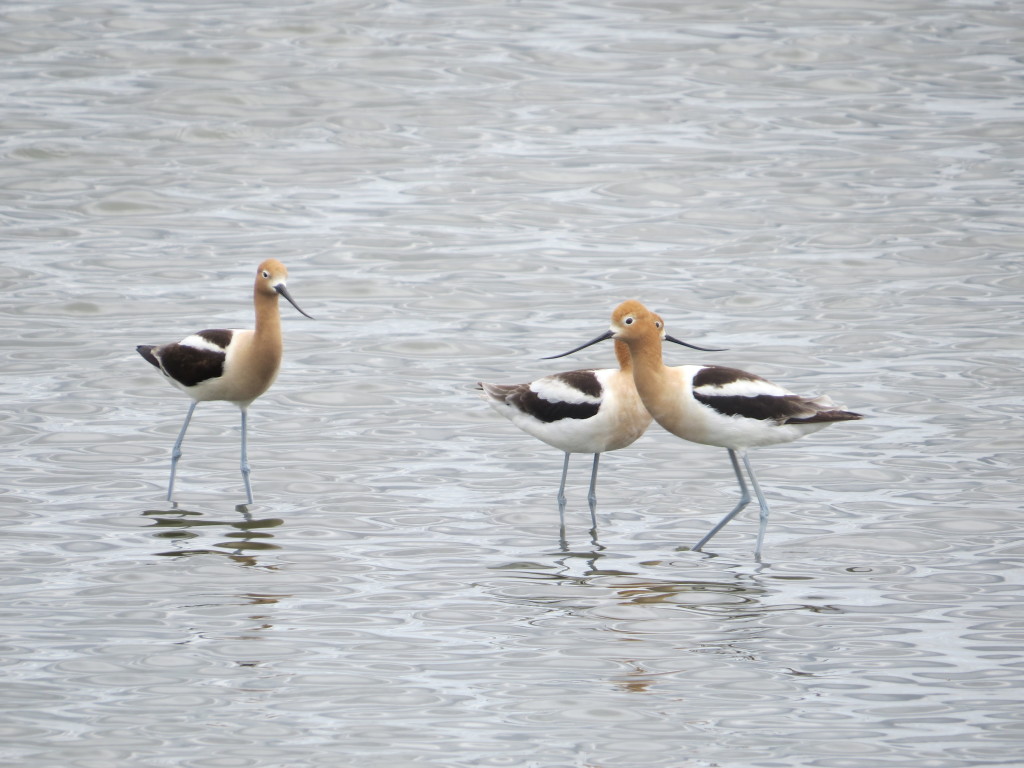
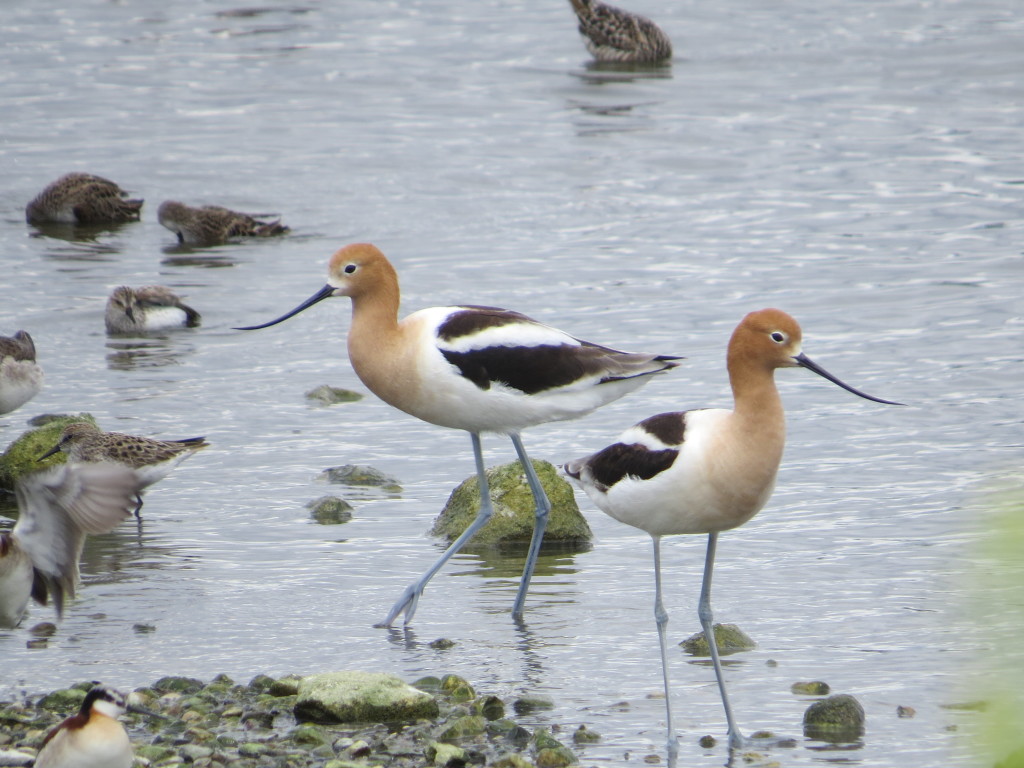
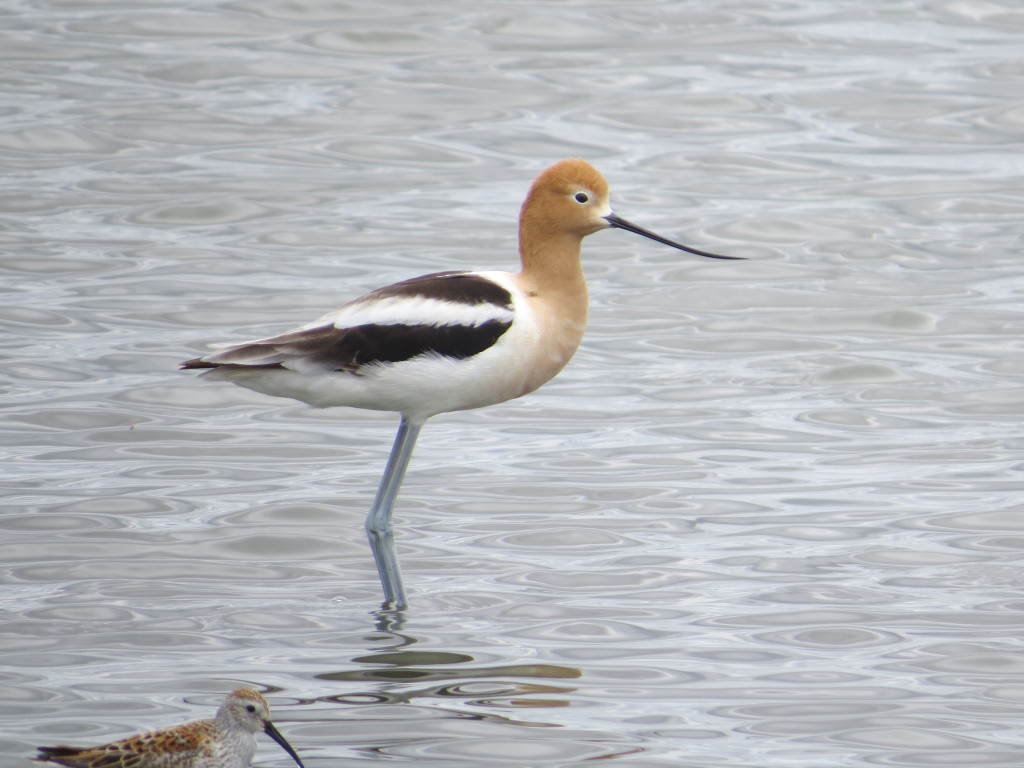
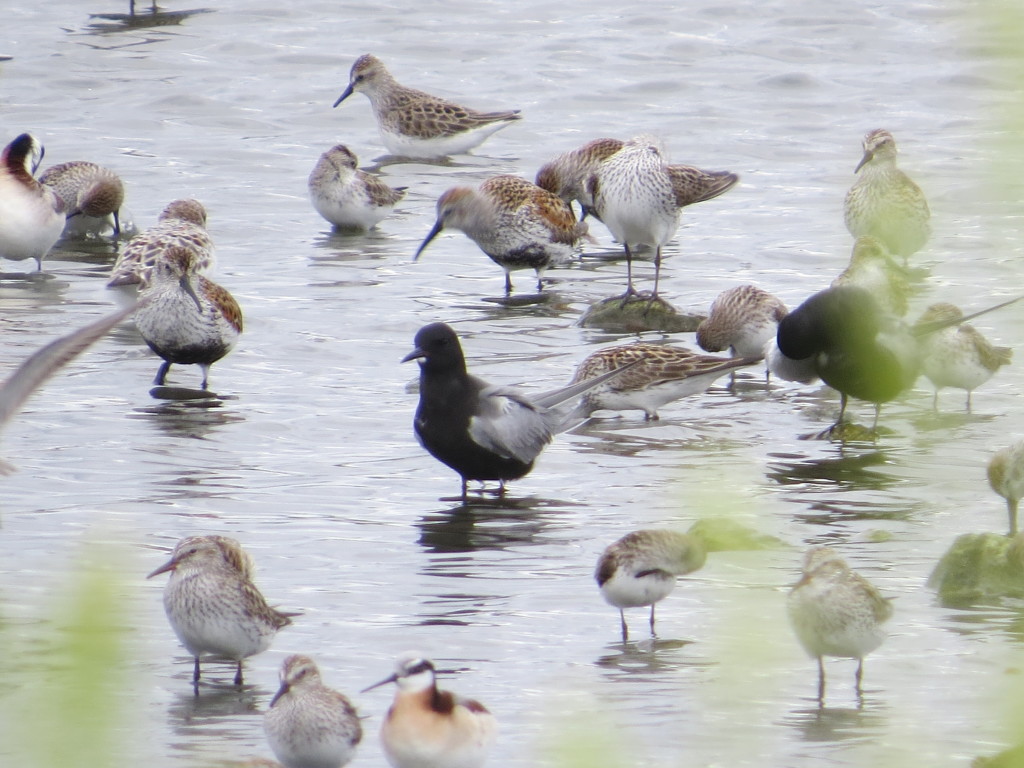 Dunlin were excessively plentiful and quite striking in full breeding plumage.
Dunlin were excessively plentiful and quite striking in full breeding plumage.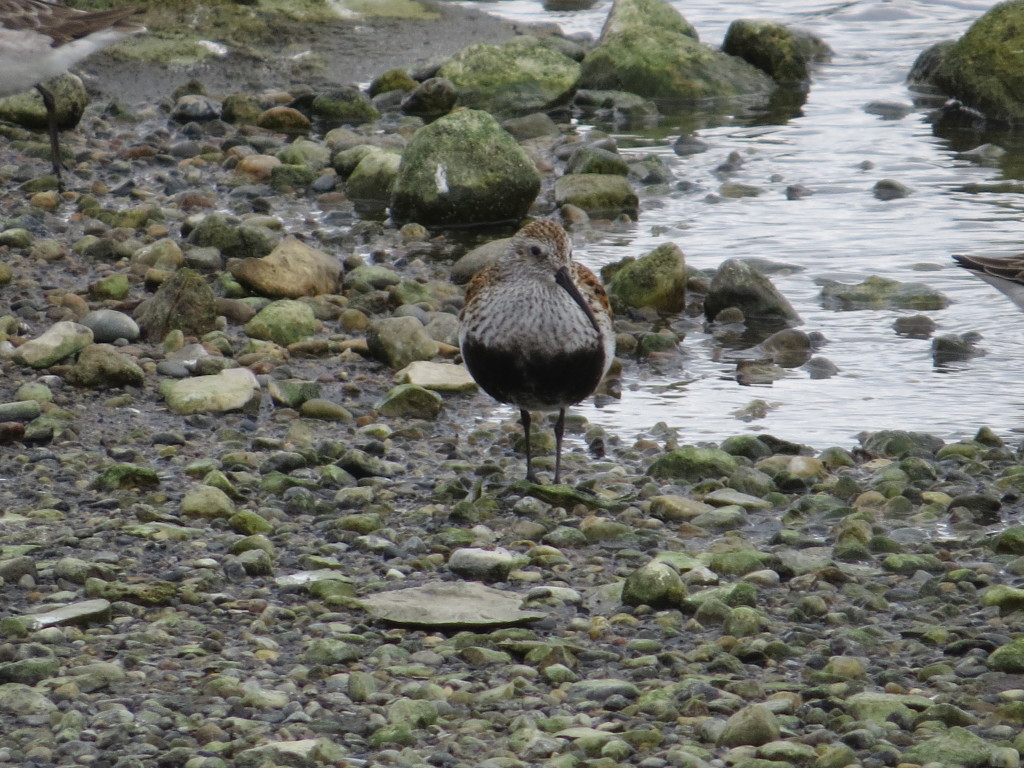
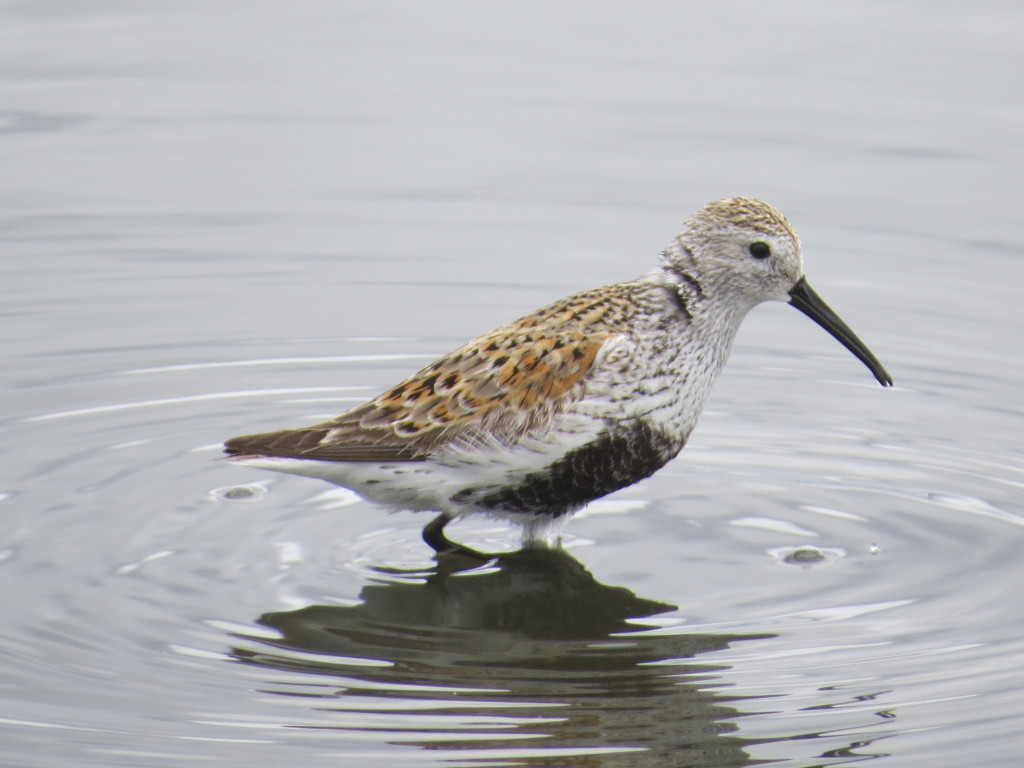
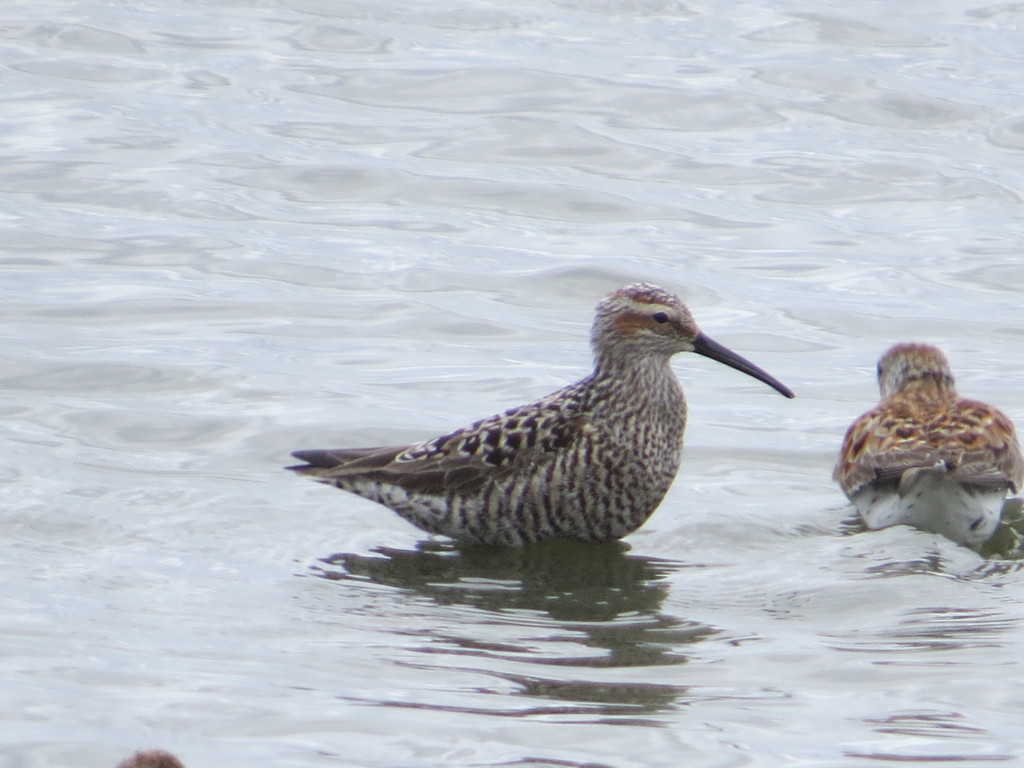
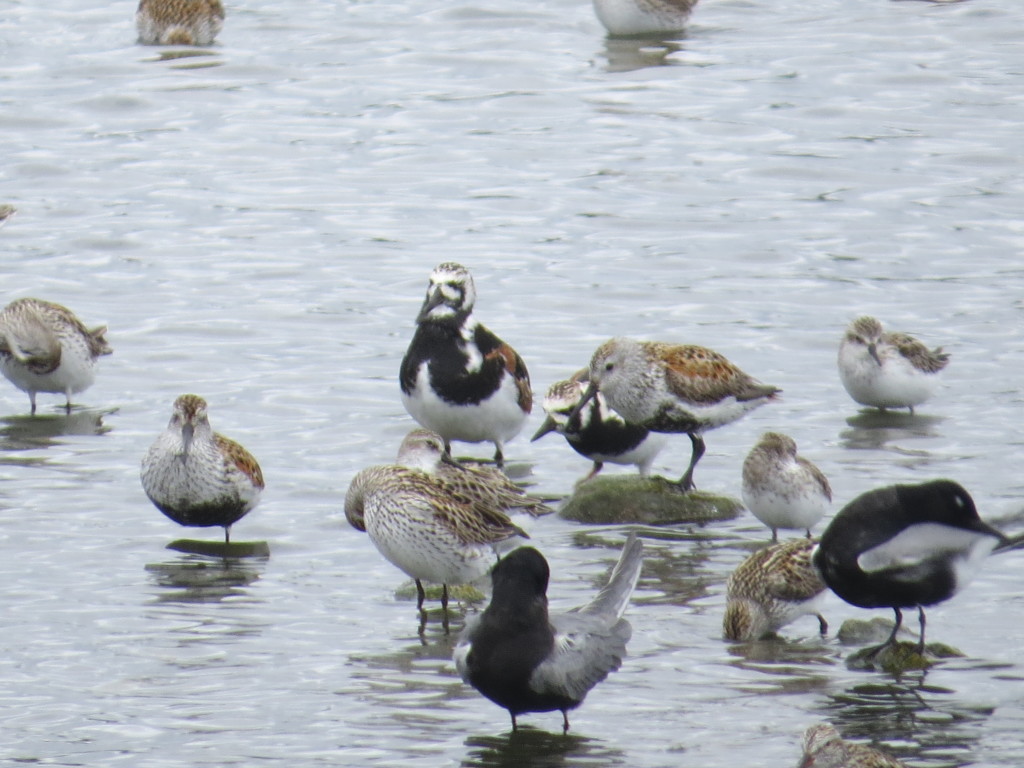 There was a lot going on with the shorebirds, both in numbers of birds and numbers of species. Wilson’s Phalaropes and White-rumped Sandpipers can be seen in my photos, but I didn’t focus any of my photography efforts on them. I probably could have spent hours photographing all these shorebirds, but I wanted to take another crack at that White-eyed Vireo and the day was already getting long for the non-birders. It was time to head back to New Ulm and hit the trail one last time.
There was a lot going on with the shorebirds, both in numbers of birds and numbers of species. Wilson’s Phalaropes and White-rumped Sandpipers can be seen in my photos, but I didn’t focus any of my photography efforts on them. I probably could have spent hours photographing all these shorebirds, but I wanted to take another crack at that White-eyed Vireo and the day was already getting long for the non-birders. It was time to head back to New Ulm and hit the trail one last time.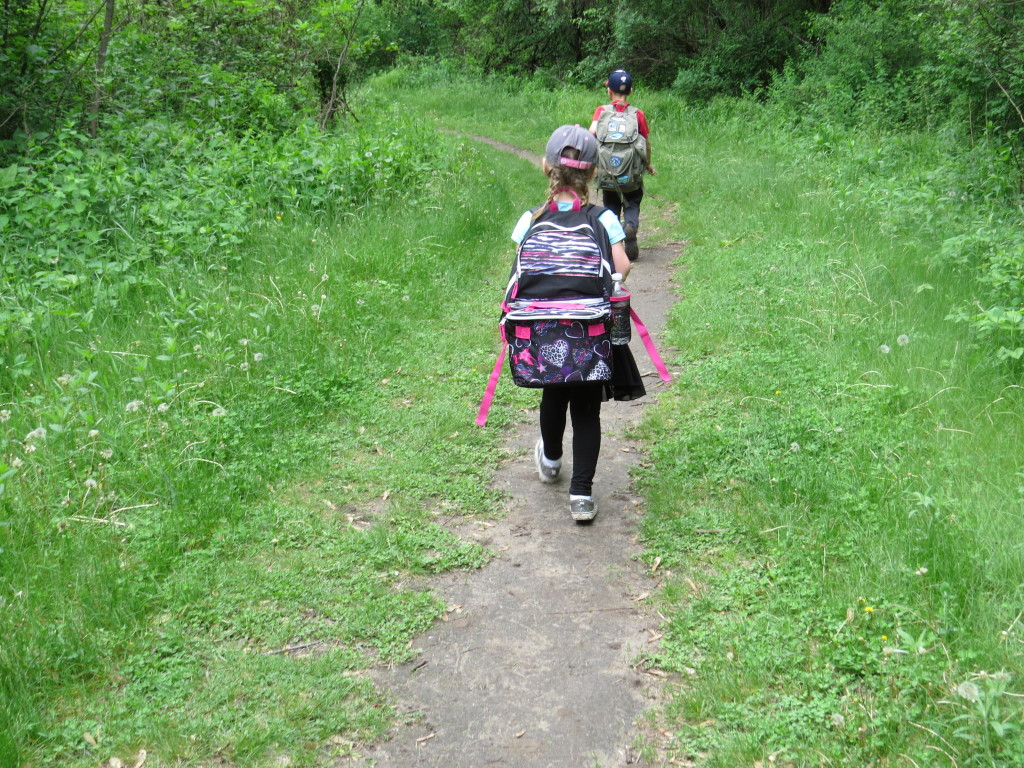
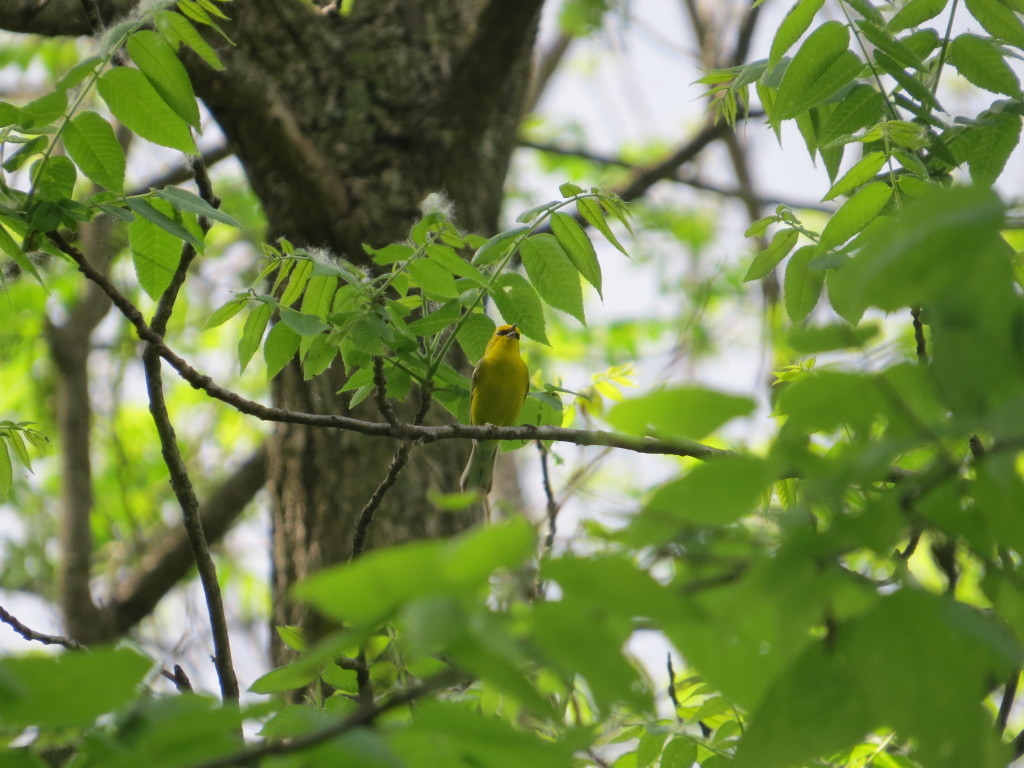
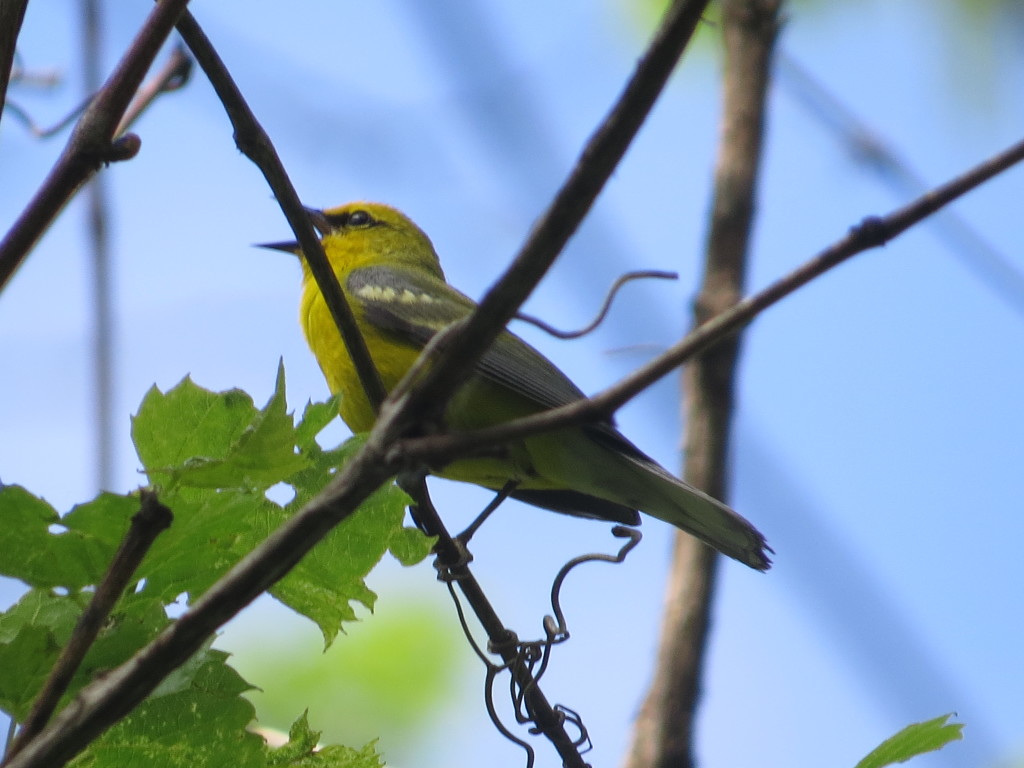 The Blue-winged Warbler was another great consolation prize in a day full of consolation goodies. It felt good to get better photos of this species.
The Blue-winged Warbler was another great consolation prize in a day full of consolation goodies. It felt good to get better photos of this species.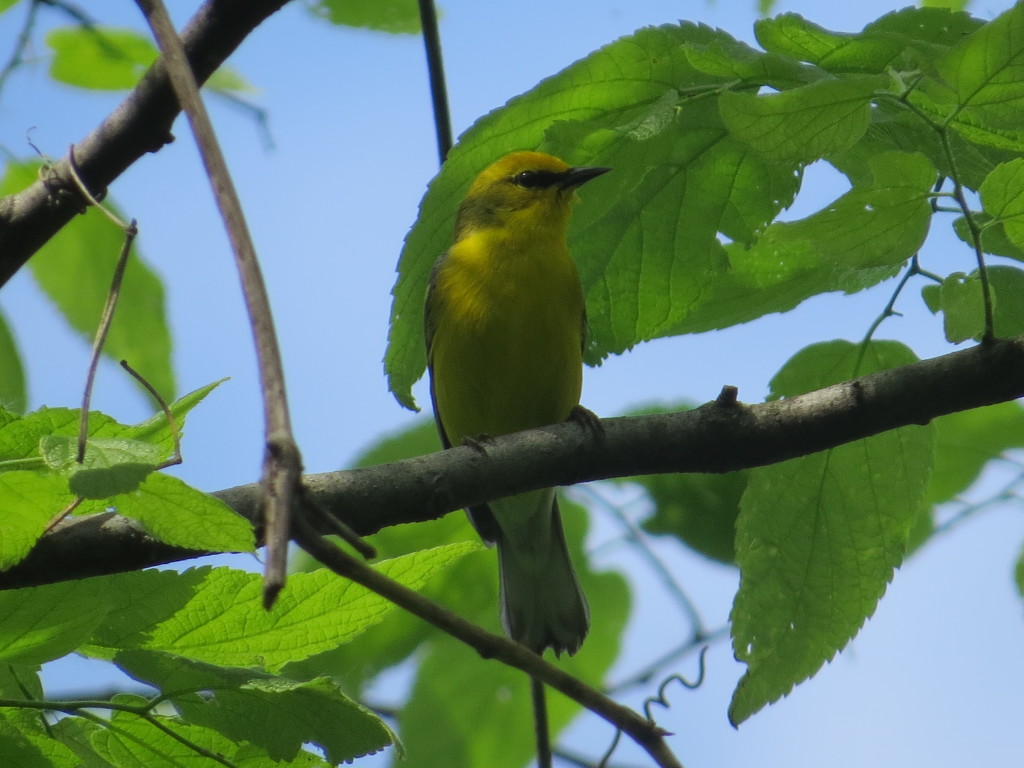 So, we went to see a White-eyed Vireo and failed in that regard. However, this day was an unimaginable lifer and FOY grab. Getting four lifers (WEVI, HUGO, SAND, COTE) in a day instate is unheard of at this stage in our birding. Topping it off with some incredible shorebirds like the Avocets and Turnstones as well as the Blue-winged Warbler really made for an exciting day back on our old stomping grounds.
So, we went to see a White-eyed Vireo and failed in that regard. However, this day was an unimaginable lifer and FOY grab. Getting four lifers (WEVI, HUGO, SAND, COTE) in a day instate is unheard of at this stage in our birding. Topping it off with some incredible shorebirds like the Avocets and Turnstones as well as the Blue-winged Warbler really made for an exciting day back on our old stomping grounds.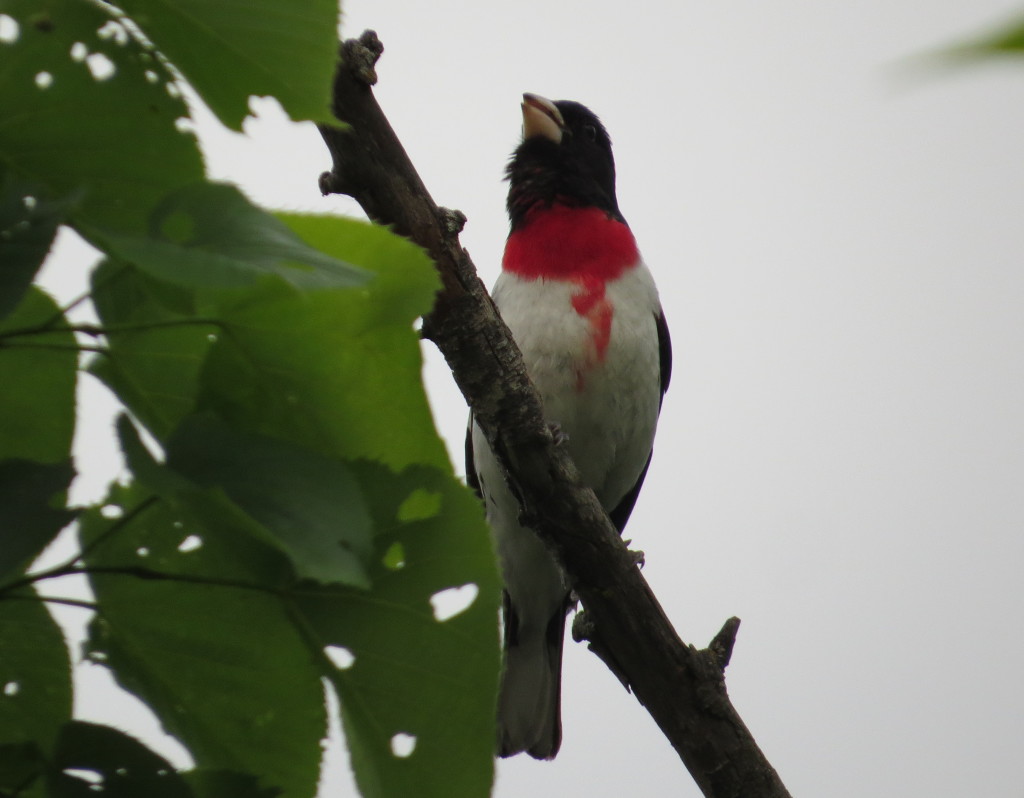
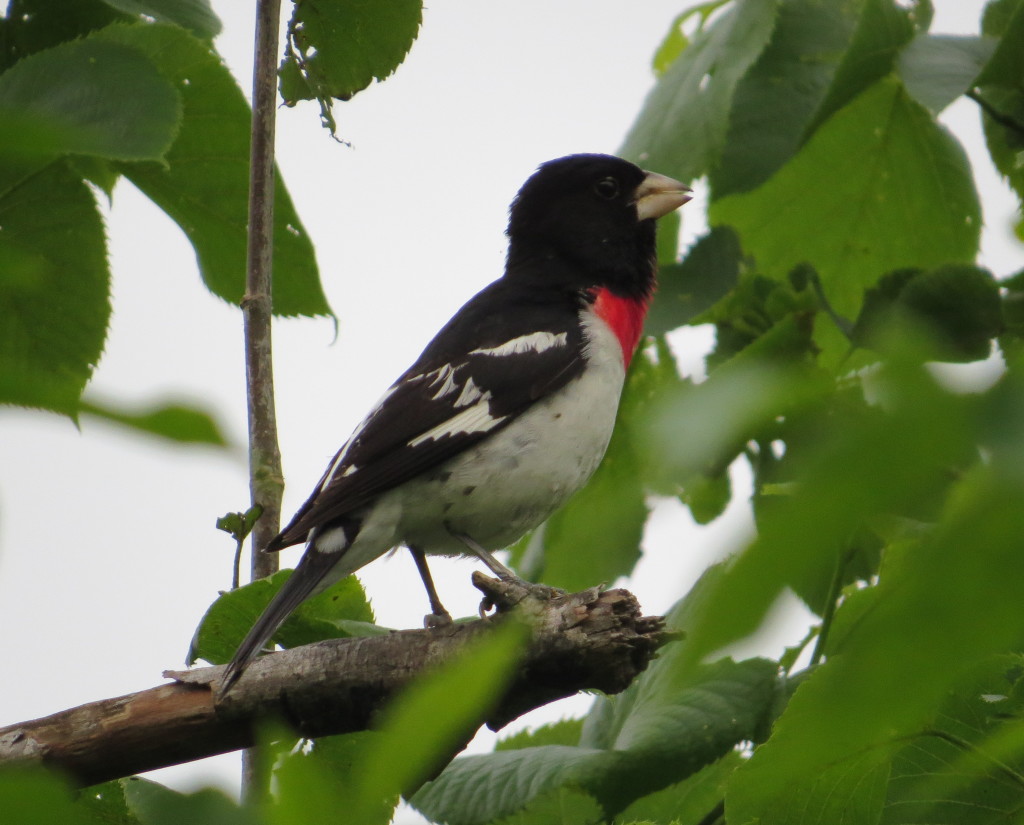 Next is the ever-lovely Scarlet Tanager. It’s hard for me to comprehend that I’ve seen both Western Tanager (more on that later) and now a Scarlet Tanager in the same week. Both are incredibly beautiful birds. Though the Scarlet Tanager is locally uncommon and the Western Tanager is rare state-wide, I’ve actually seen more Western Tanagers in my life. Today’s sighting on Timber Lake Road north of Sibley State Park was only the third time I’ve seen a Scarlet Tanager, and I got my best ever looks. It is such a hard bird to find. Even if it is present, it favors the canopy and is not always conspicuous. With Scarlet Tanager sightings you can have two but never all three of the following: a motionless bird, a conspicuous bird, good light. With a bird as good-looking as SCTA, the first two are often good enough.
Next is the ever-lovely Scarlet Tanager. It’s hard for me to comprehend that I’ve seen both Western Tanager (more on that later) and now a Scarlet Tanager in the same week. Both are incredibly beautiful birds. Though the Scarlet Tanager is locally uncommon and the Western Tanager is rare state-wide, I’ve actually seen more Western Tanagers in my life. Today’s sighting on Timber Lake Road north of Sibley State Park was only the third time I’ve seen a Scarlet Tanager, and I got my best ever looks. It is such a hard bird to find. Even if it is present, it favors the canopy and is not always conspicuous. With Scarlet Tanager sightings you can have two but never all three of the following: a motionless bird, a conspicuous bird, good light. With a bird as good-looking as SCTA, the first two are often good enough.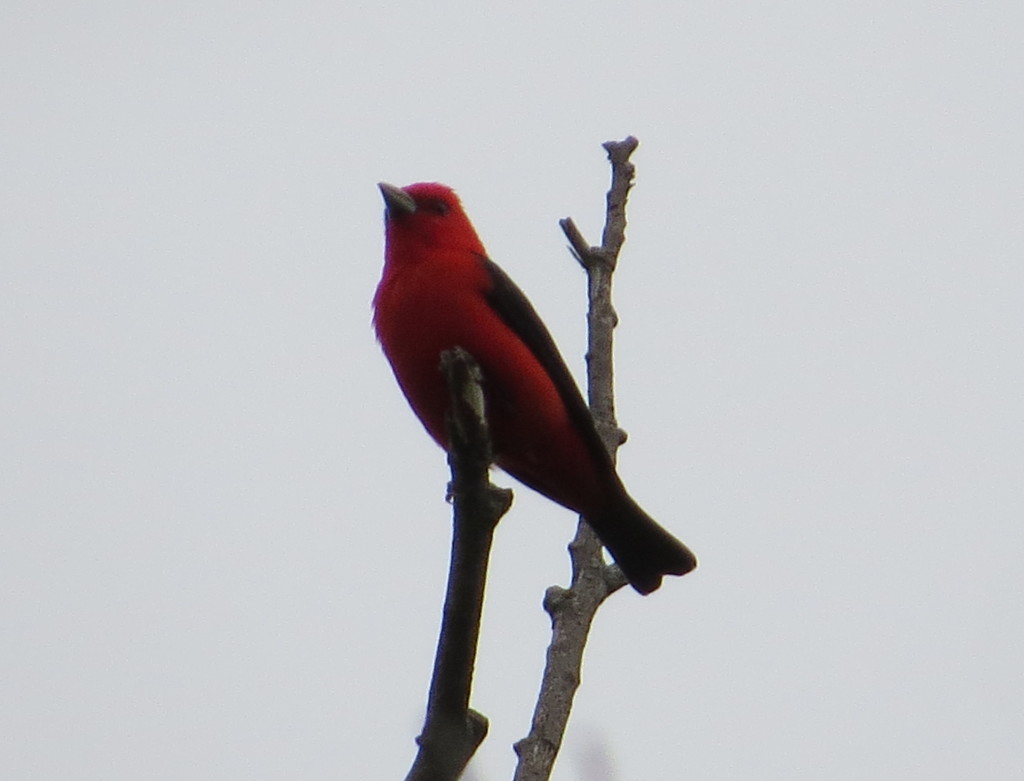
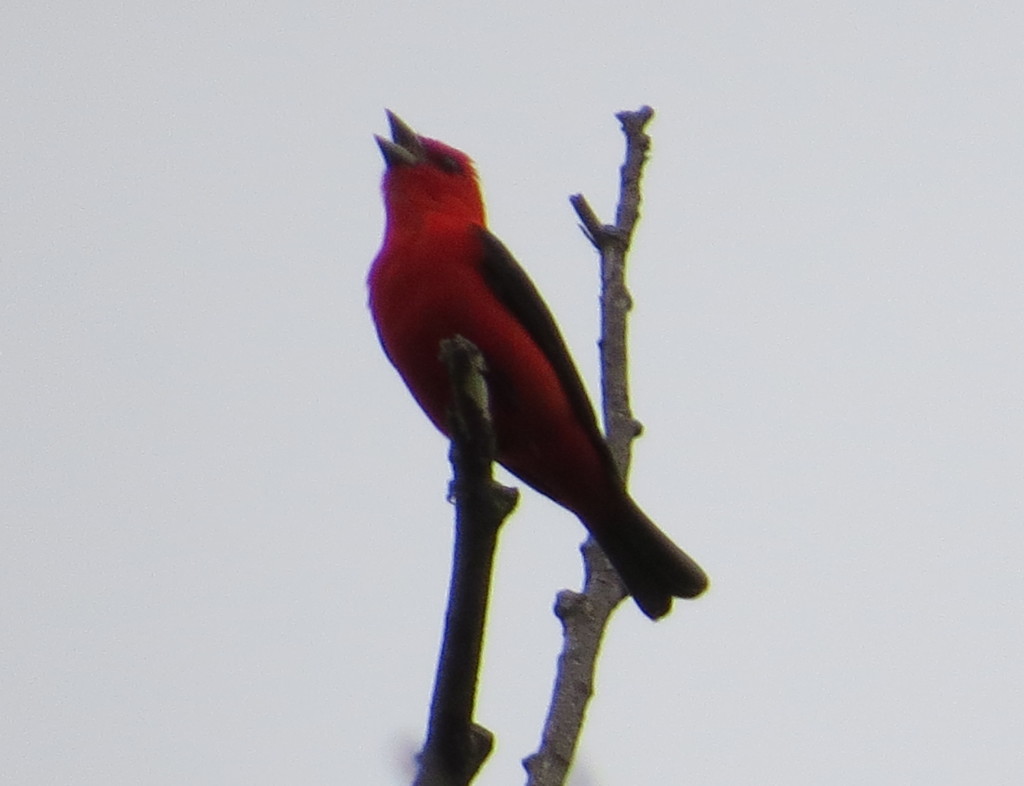
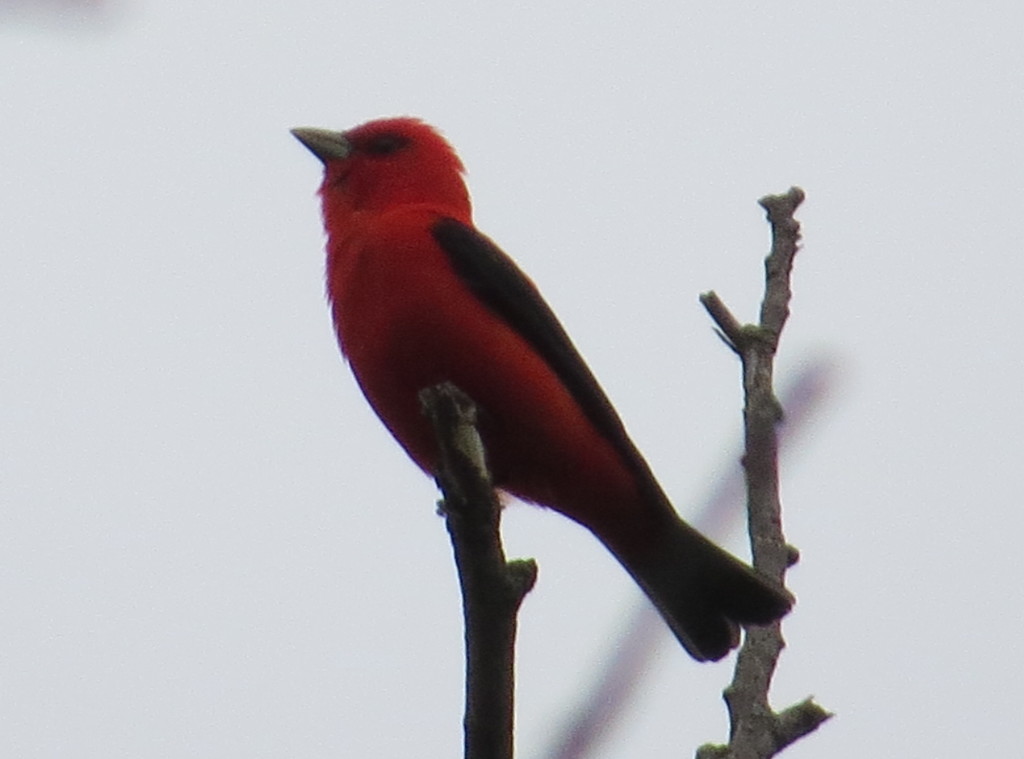
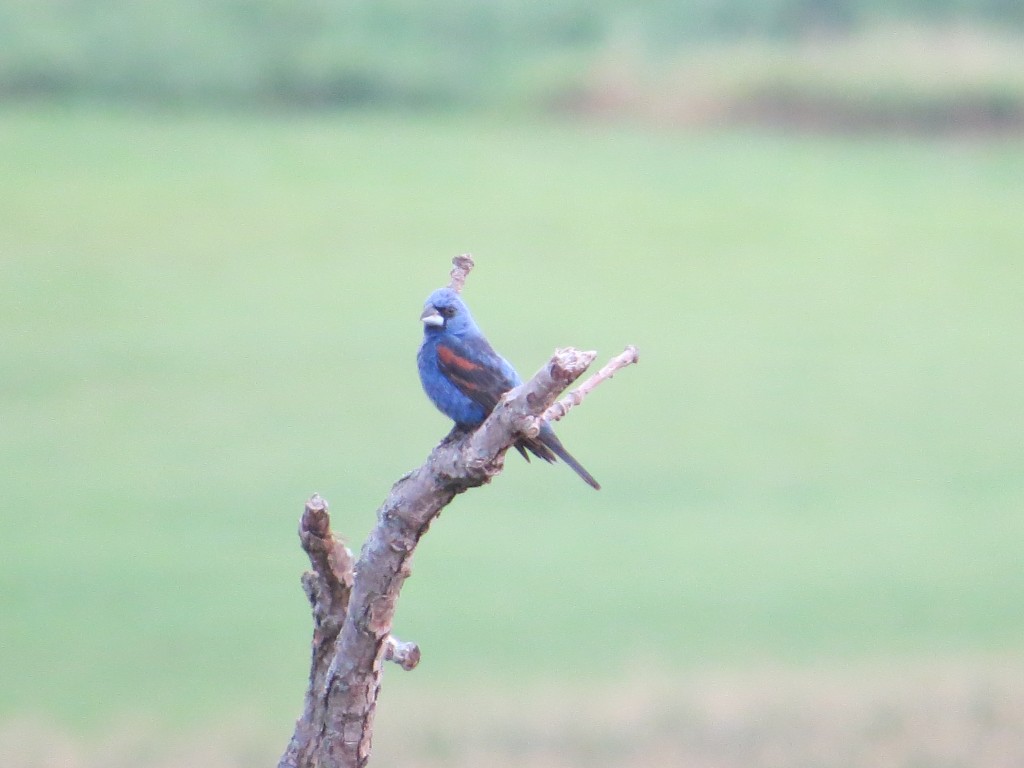
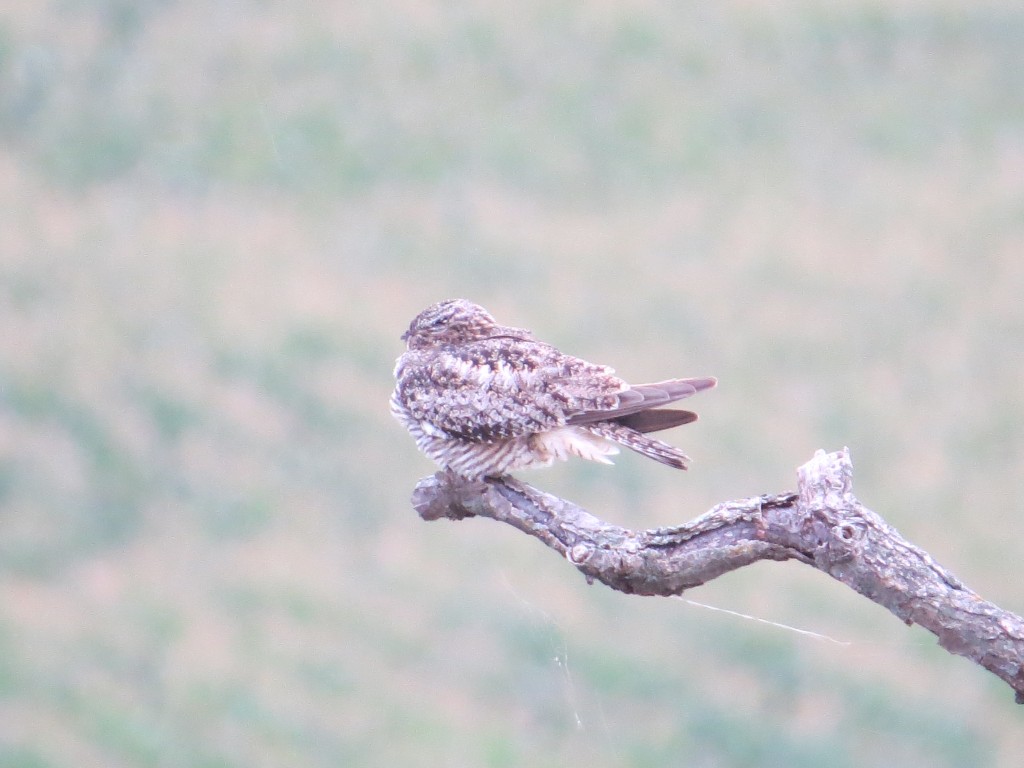
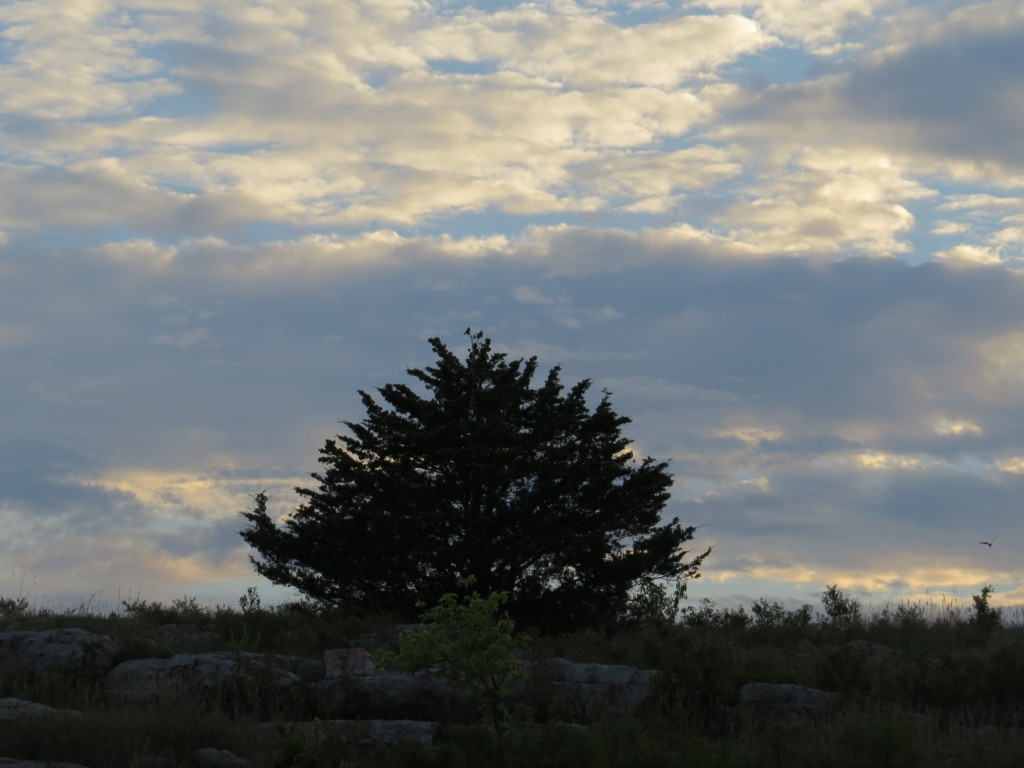
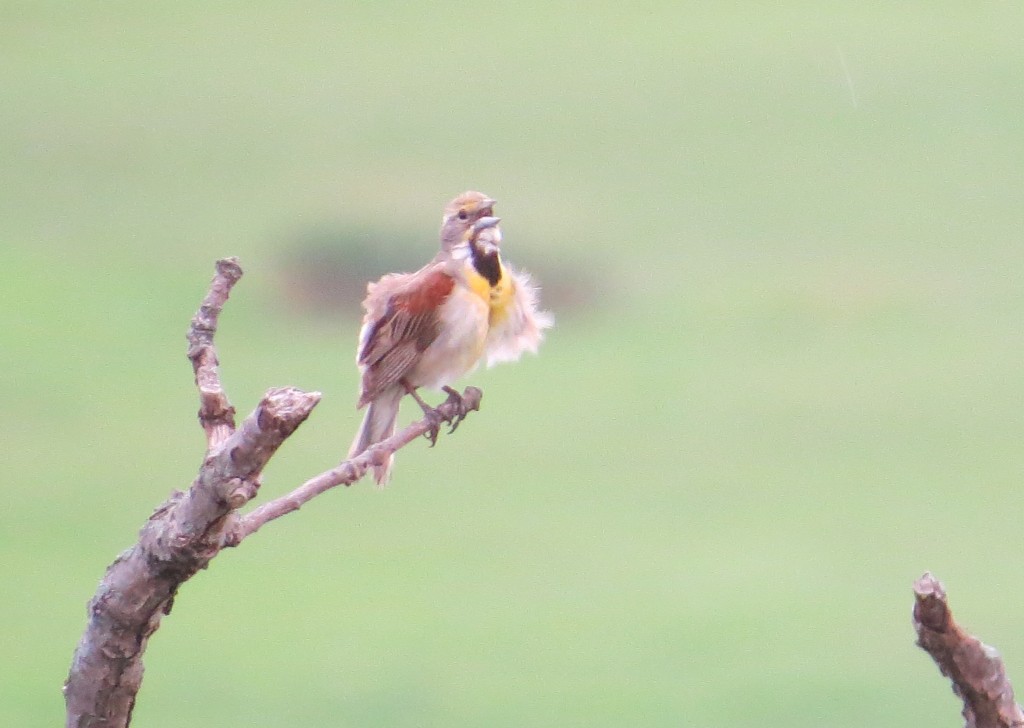
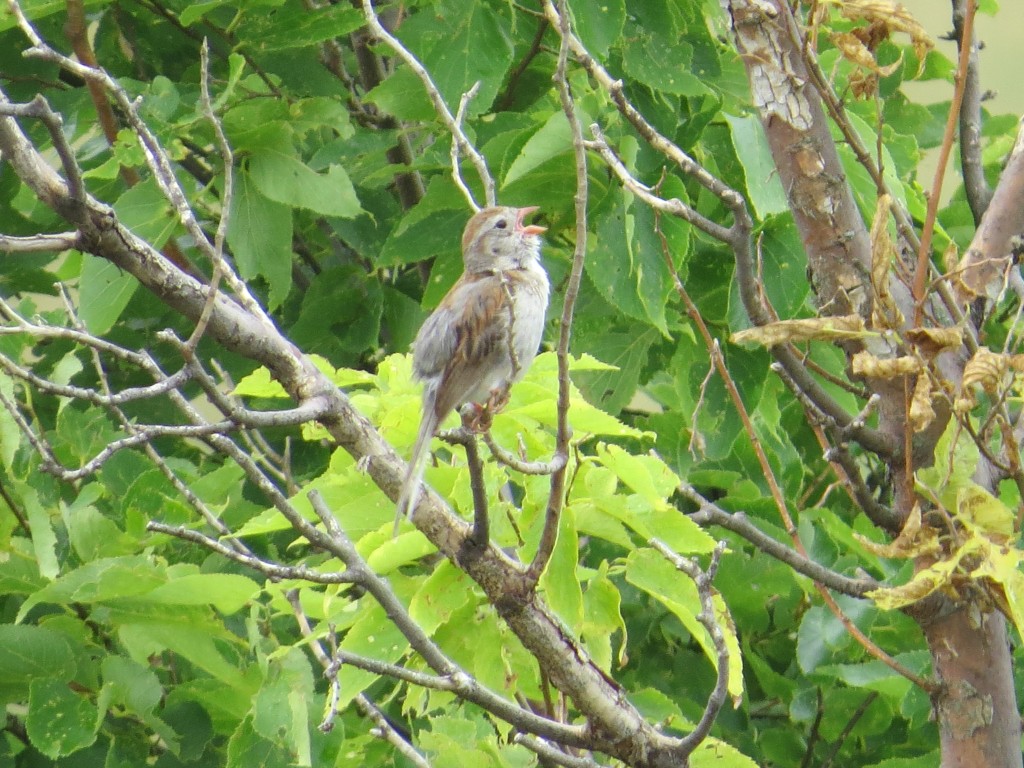
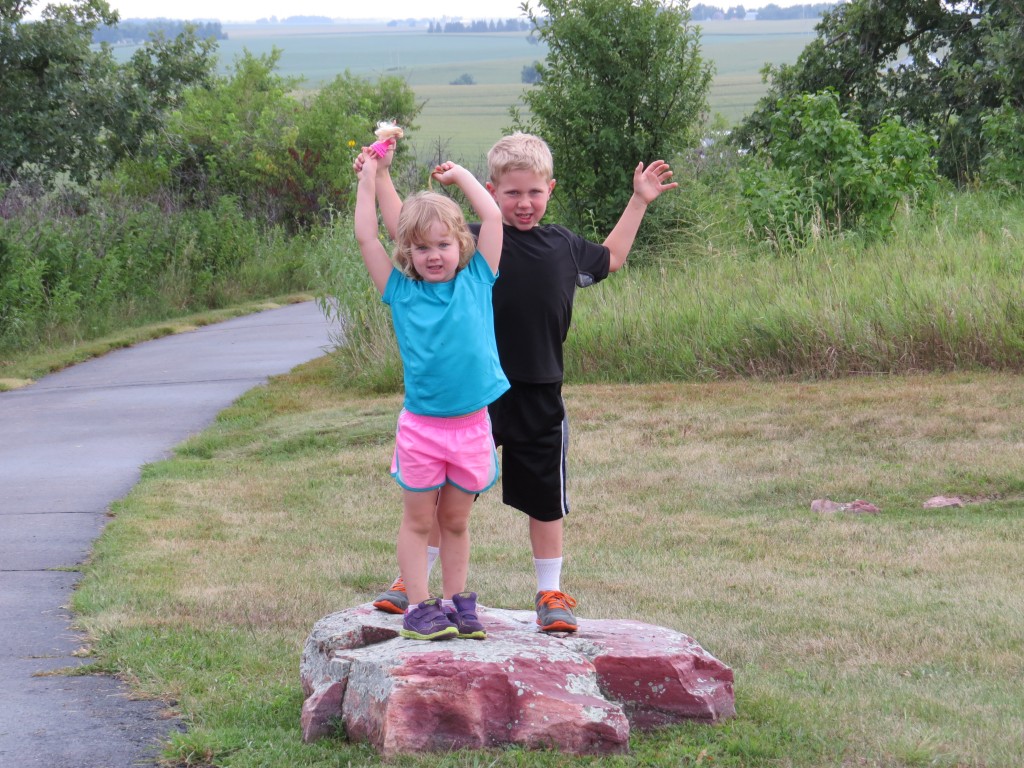
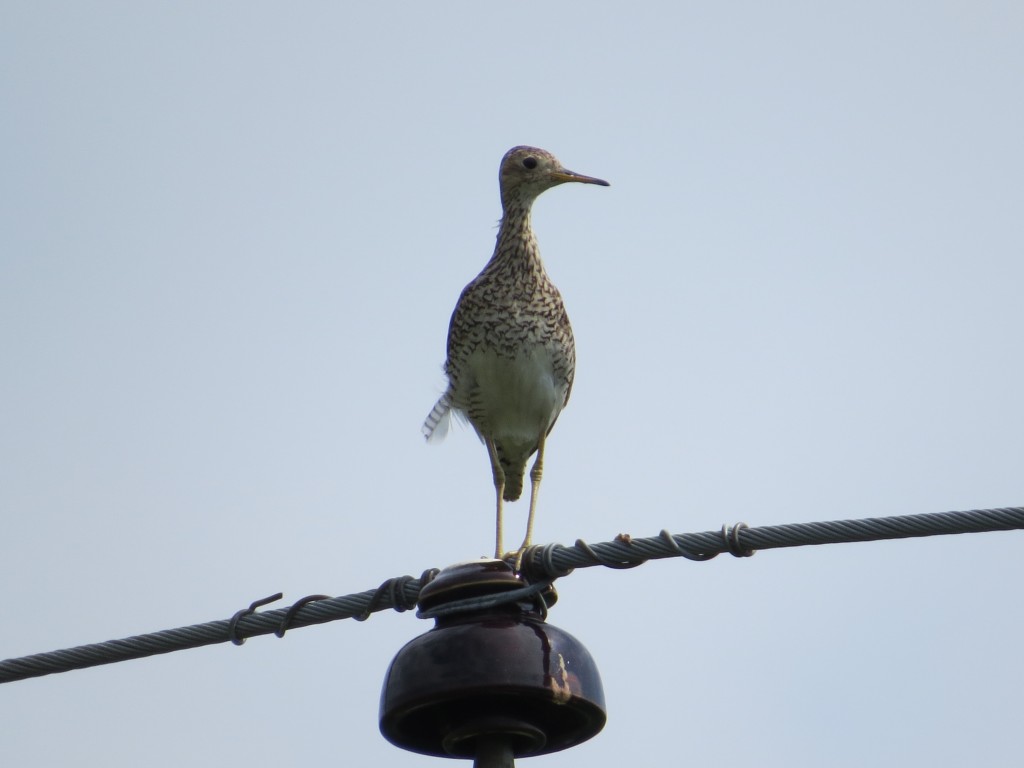
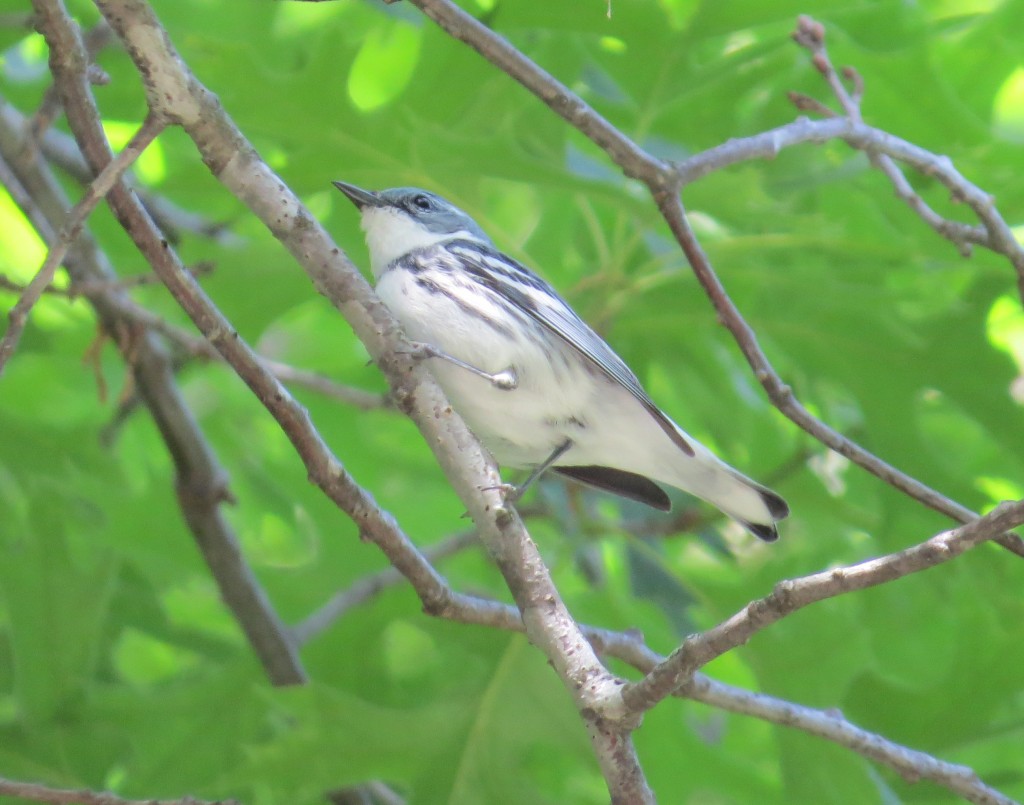
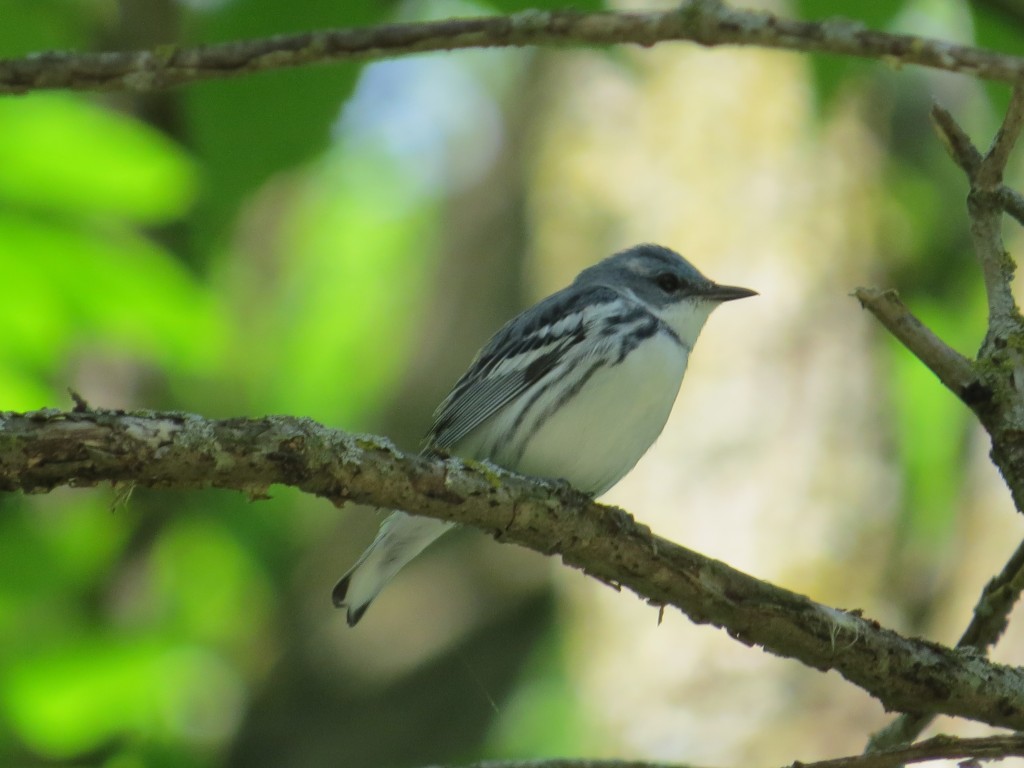
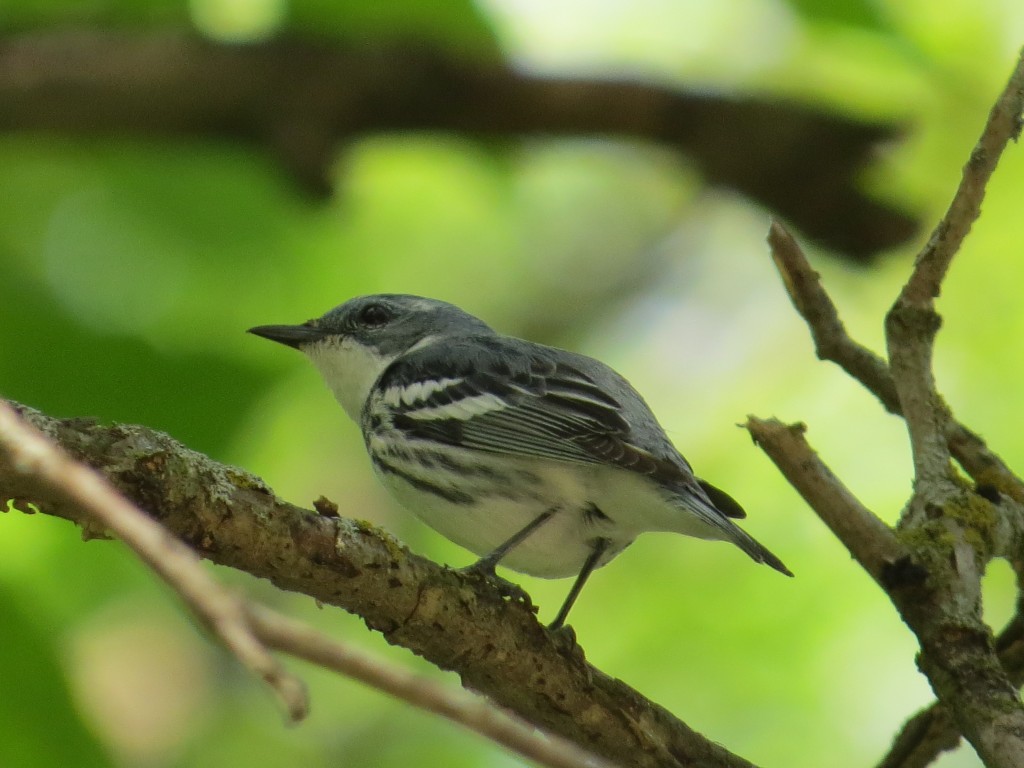
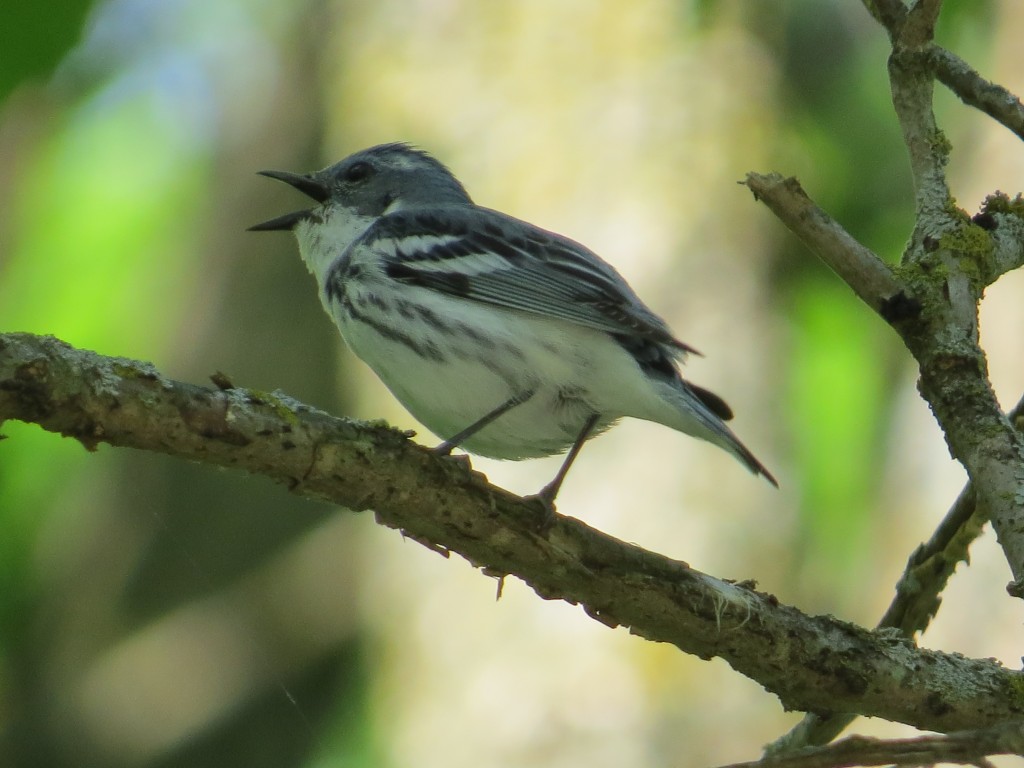
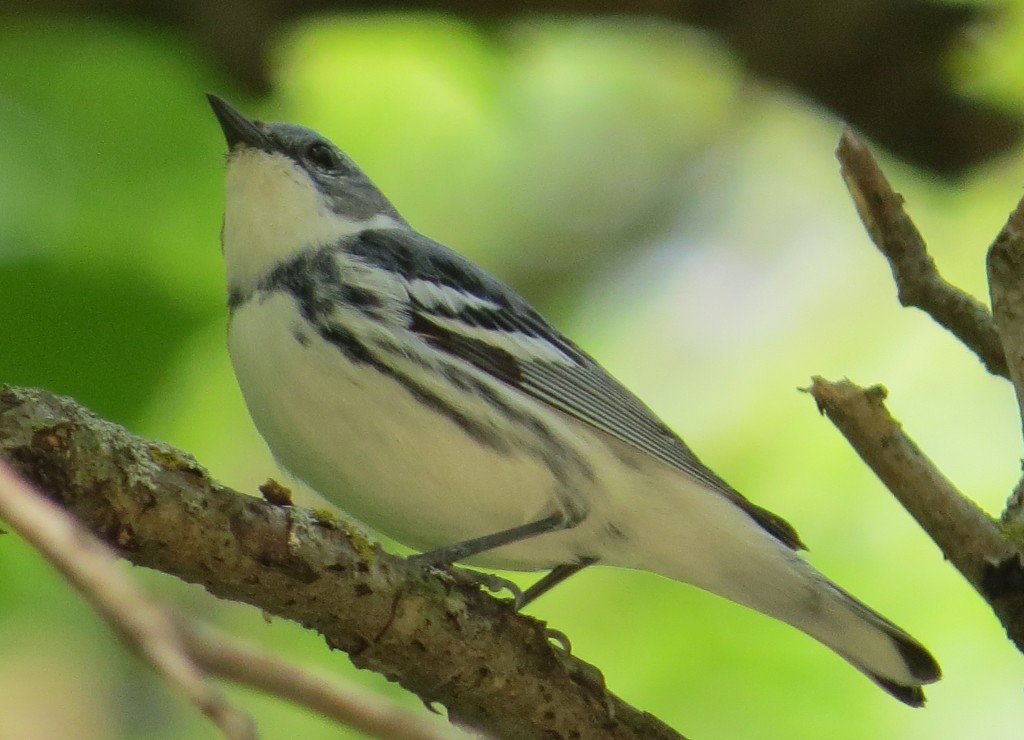

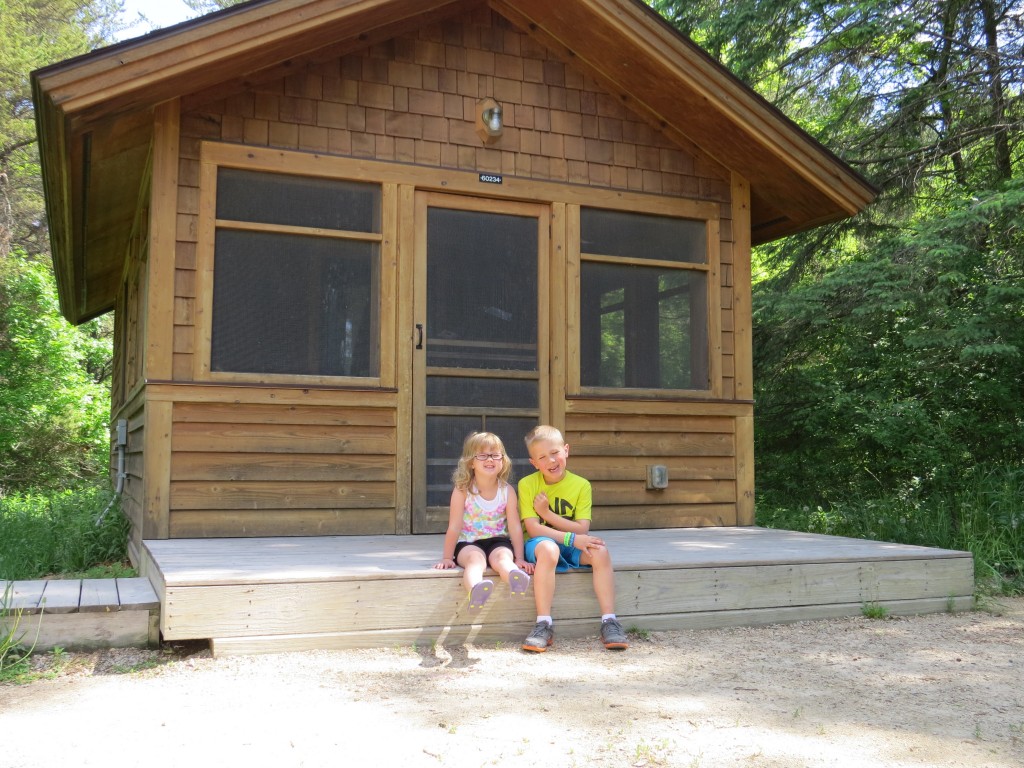
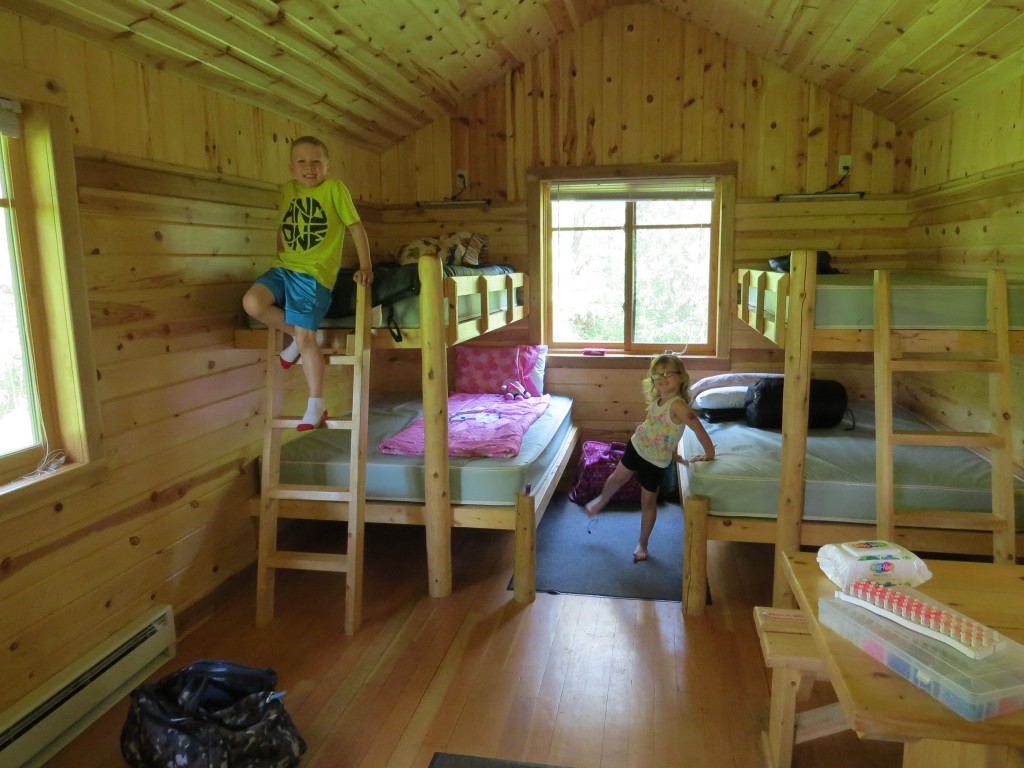
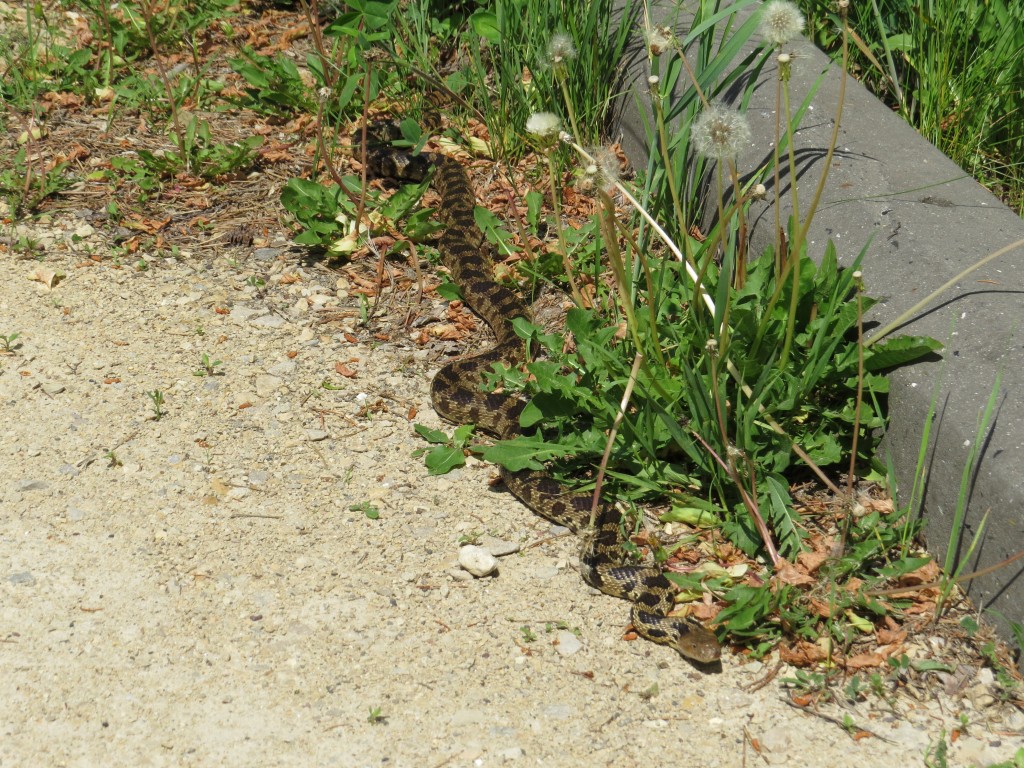
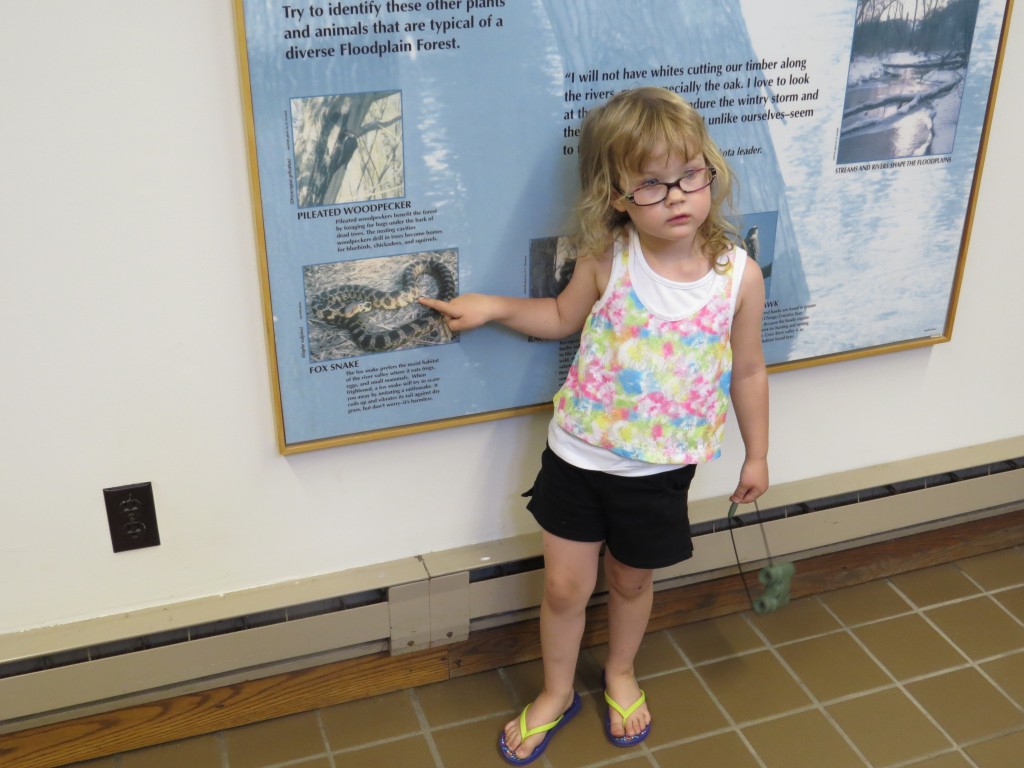
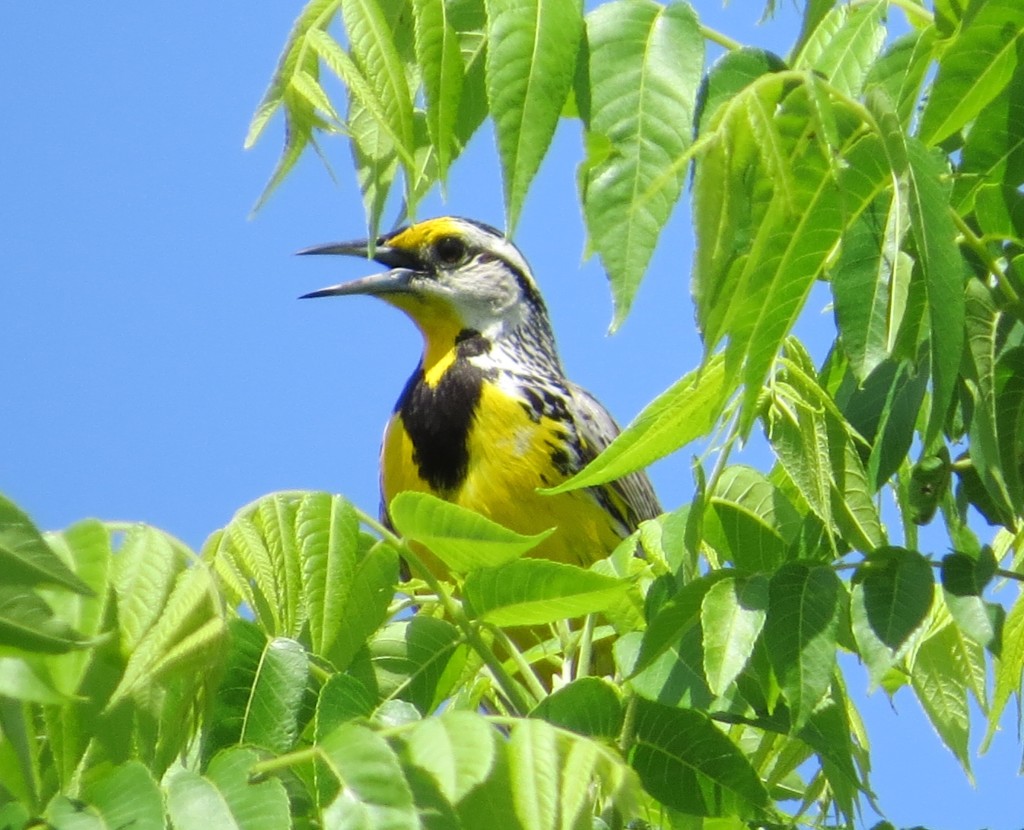
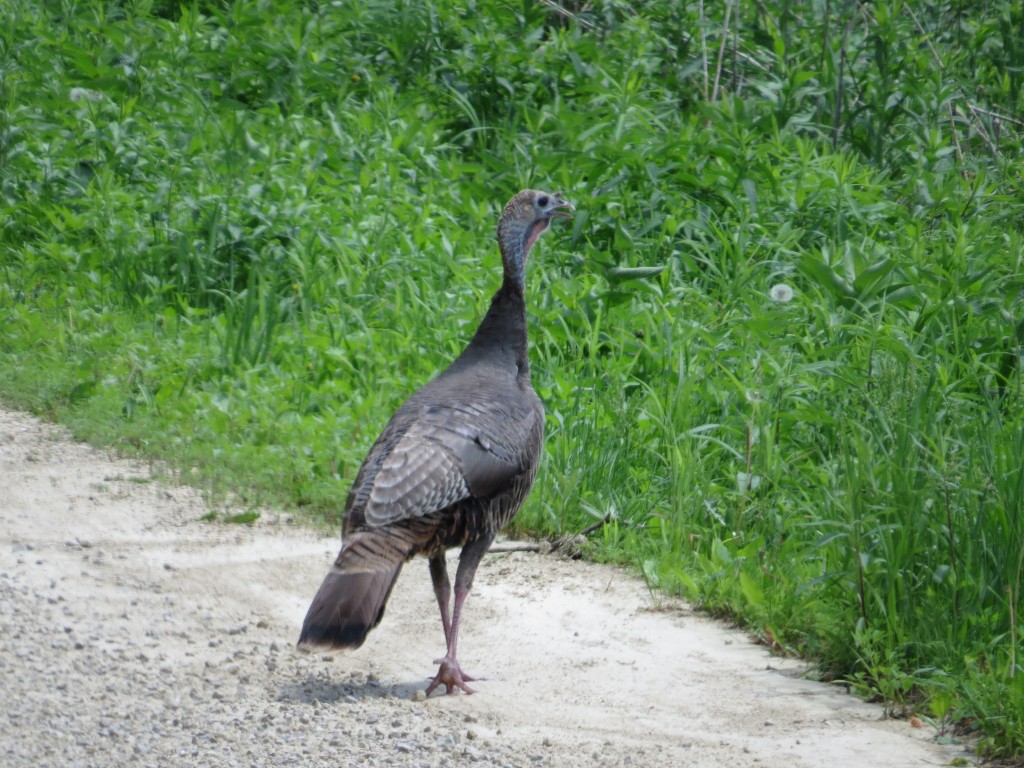
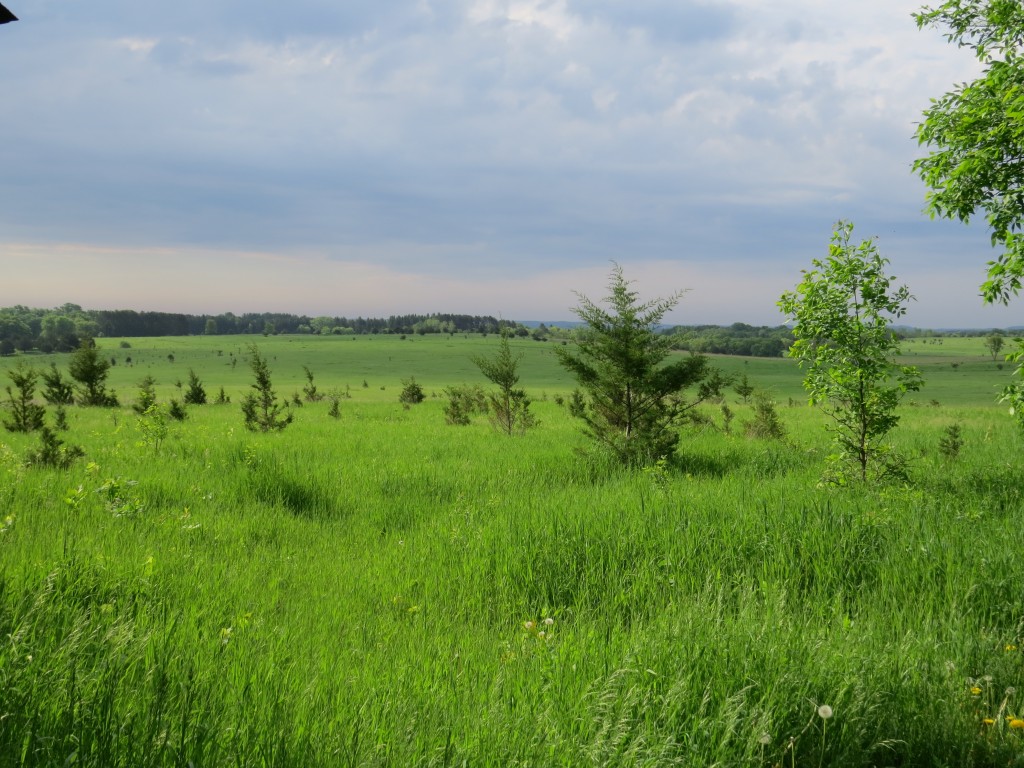
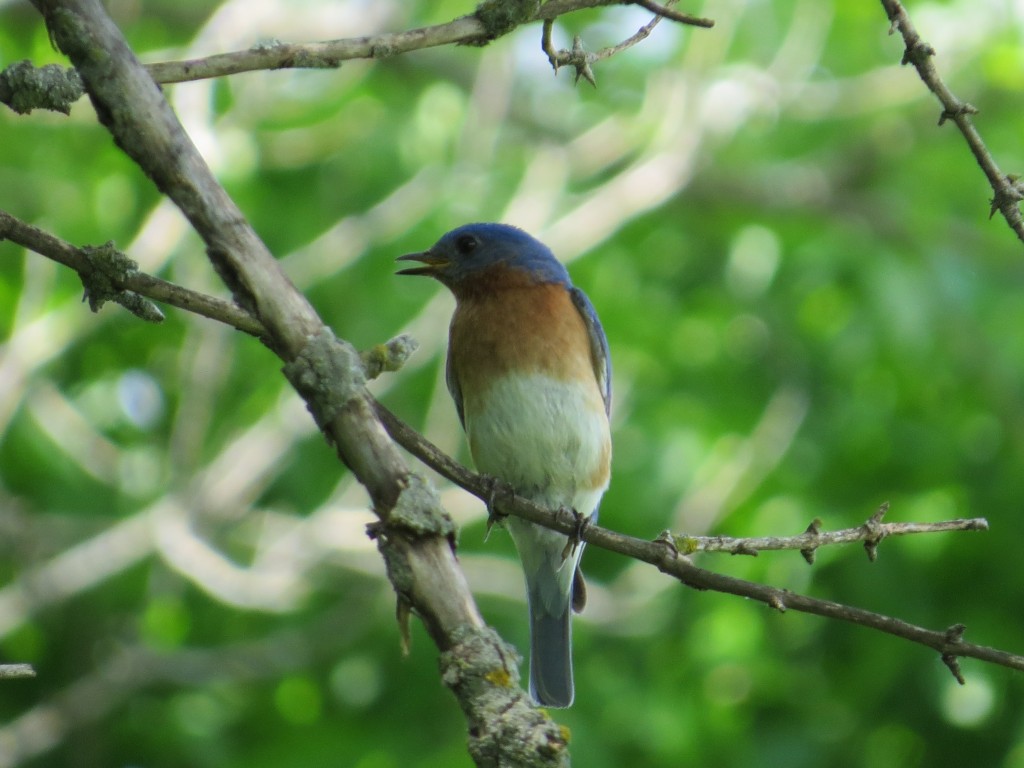
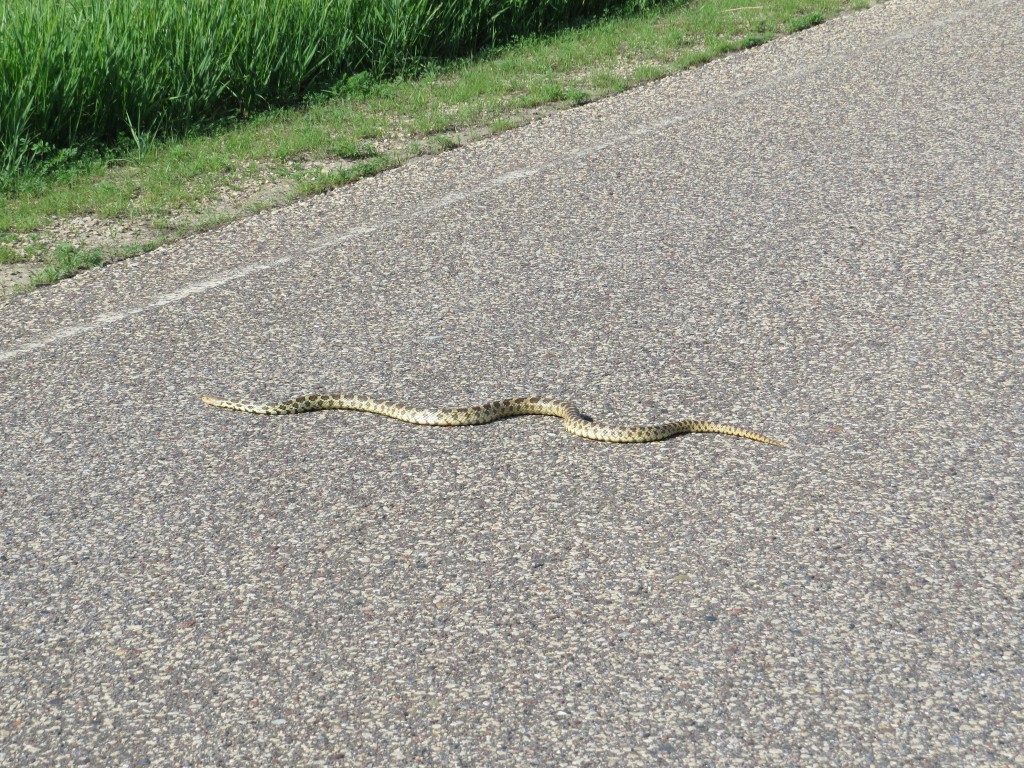 After this experience we finally made it to the trailhead. This time things went a lot smoother with a lot less complaining. The hike down the large hill was the most challenging as the sign shows, though Marin was convinced the sign meant it was a snake trail. Given our day, who could blame her? Here you can see Evan contemplating her observation.
After this experience we finally made it to the trailhead. This time things went a lot smoother with a lot less complaining. The hike down the large hill was the most challenging as the sign shows, though Marin was convinced the sign meant it was a snake trail. Given our day, who could blame her? Here you can see Evan contemplating her observation.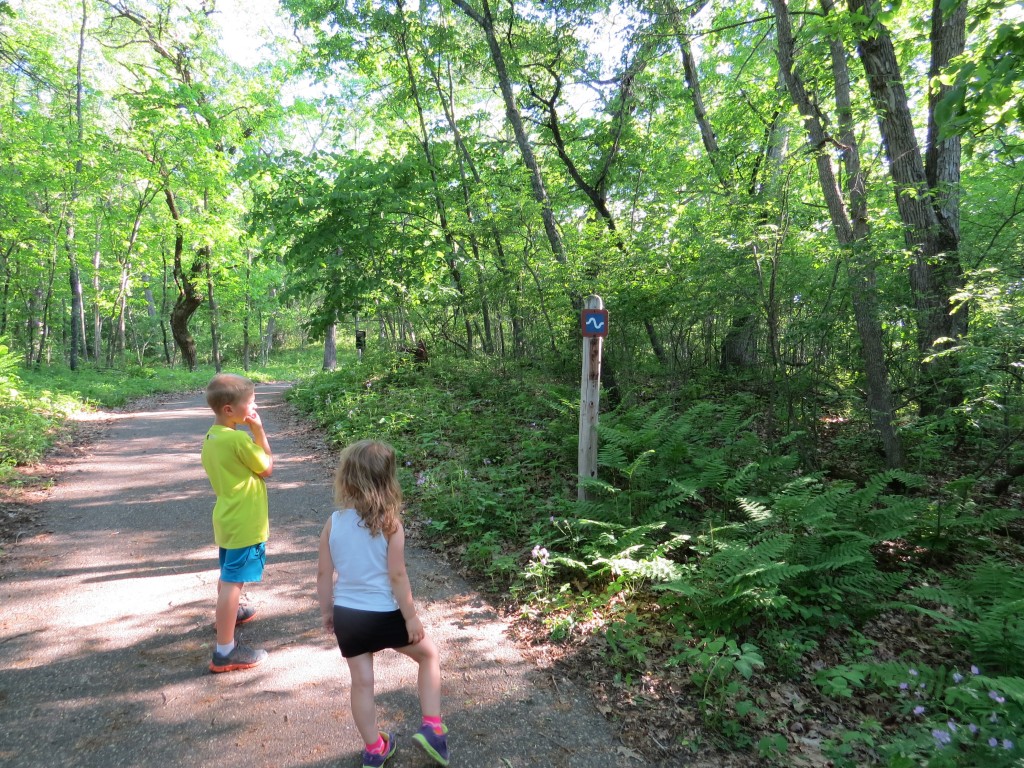 The river bottoms trail was flat and easy as it took us right next to the St. Croix and right along the base of an oak-wooded hillside where the Hooded Warblers were known to be. I knew the song well as its been my phone’s ring tone for some time, but I just wasn’t hearing it. Argh. Later on, though, as we passed by some flooded timber along the edge of the river, I heard the distinctive call of the Prothonotary Warbler! Not the main target, but good enough! After a little while we got to lay our eyes on it. What a thrill it was to see it for the first time!
The river bottoms trail was flat and easy as it took us right next to the St. Croix and right along the base of an oak-wooded hillside where the Hooded Warblers were known to be. I knew the song well as its been my phone’s ring tone for some time, but I just wasn’t hearing it. Argh. Later on, though, as we passed by some flooded timber along the edge of the river, I heard the distinctive call of the Prothonotary Warbler! Not the main target, but good enough! After a little while we got to lay our eyes on it. What a thrill it was to see it for the first time!